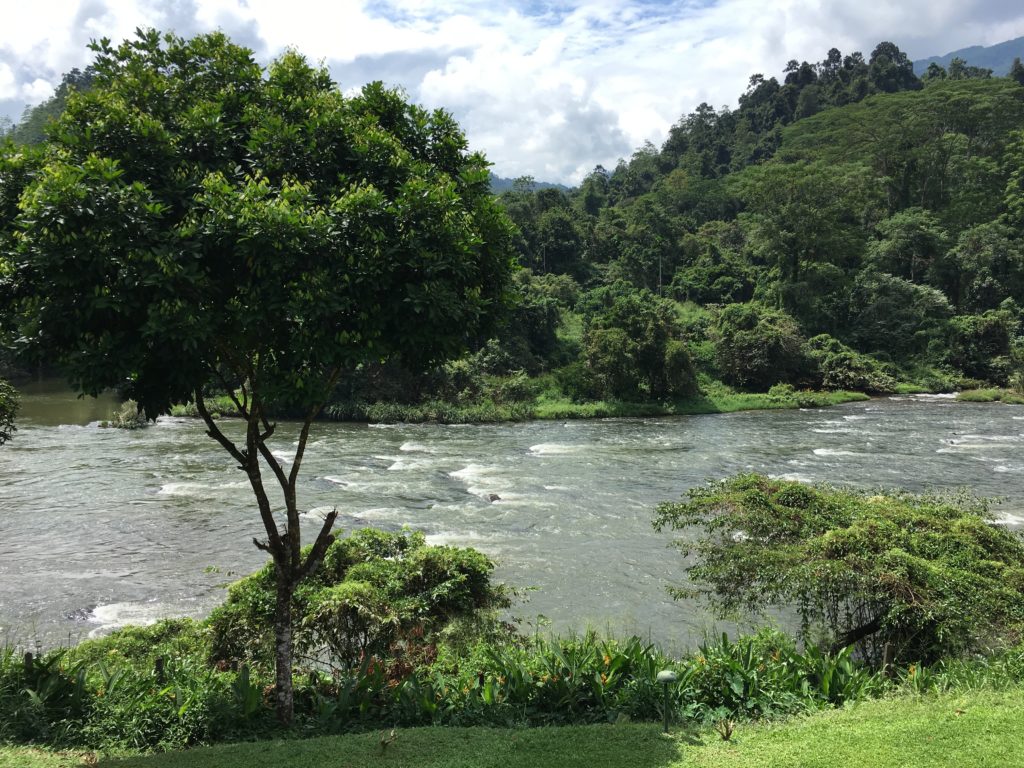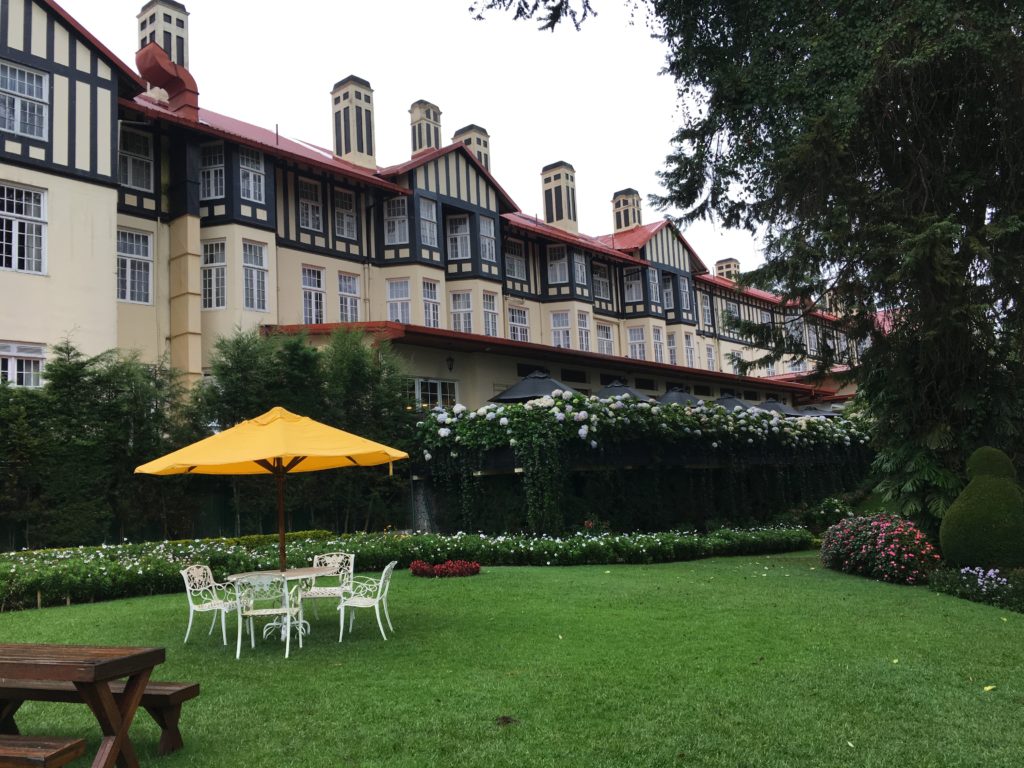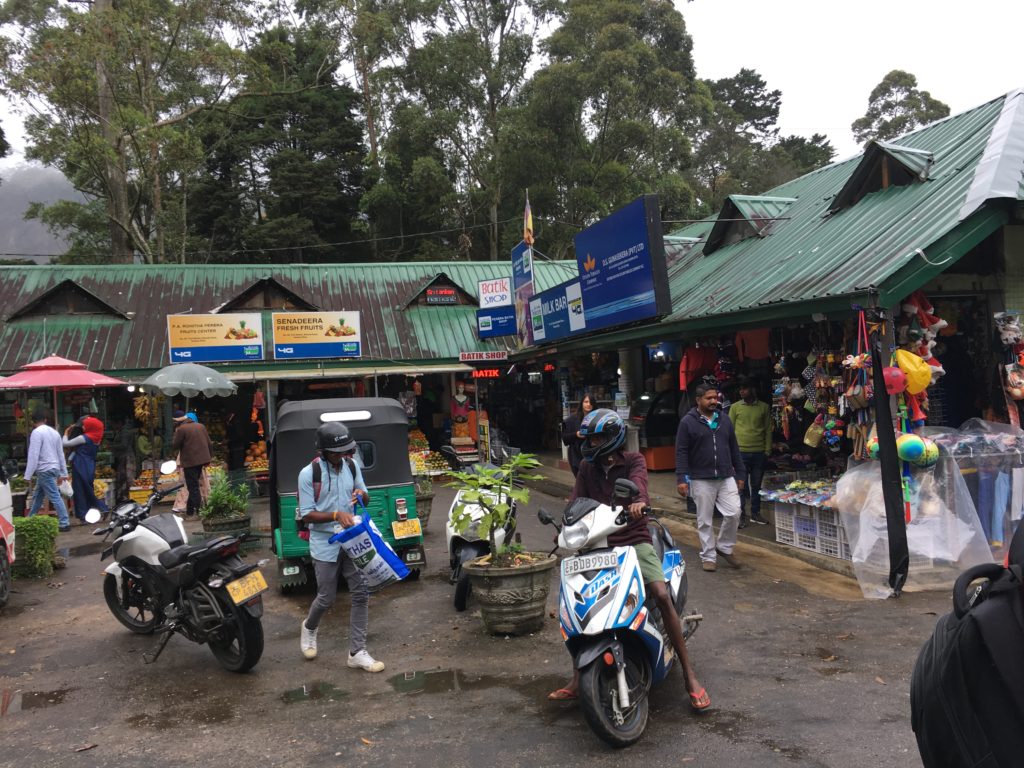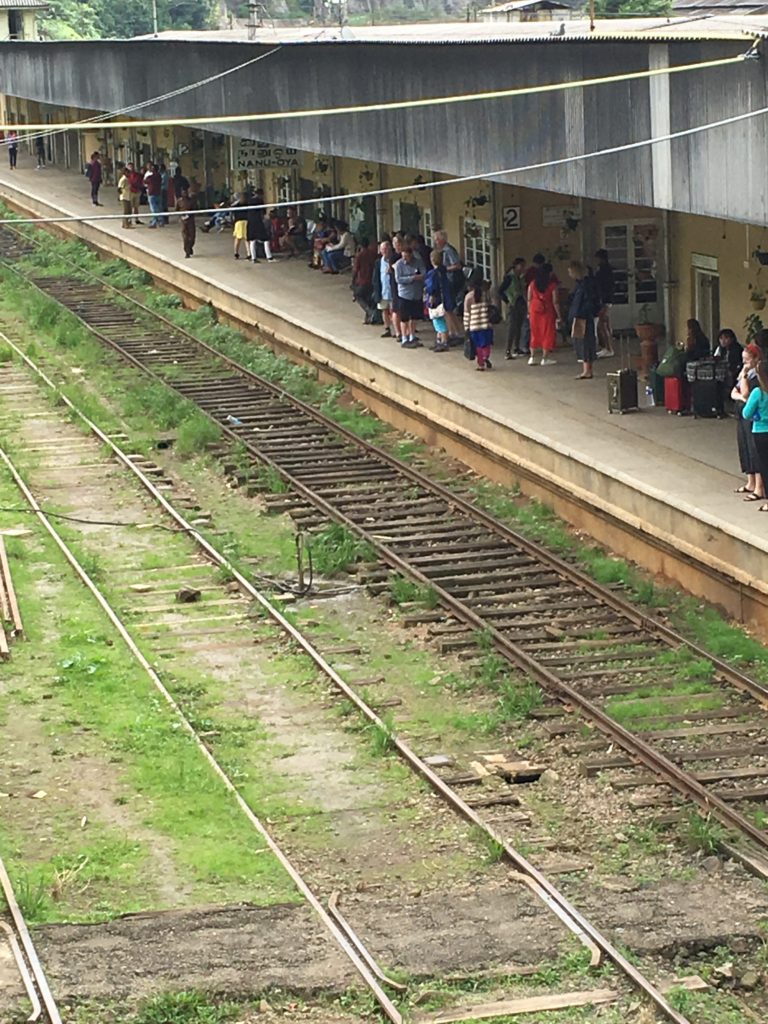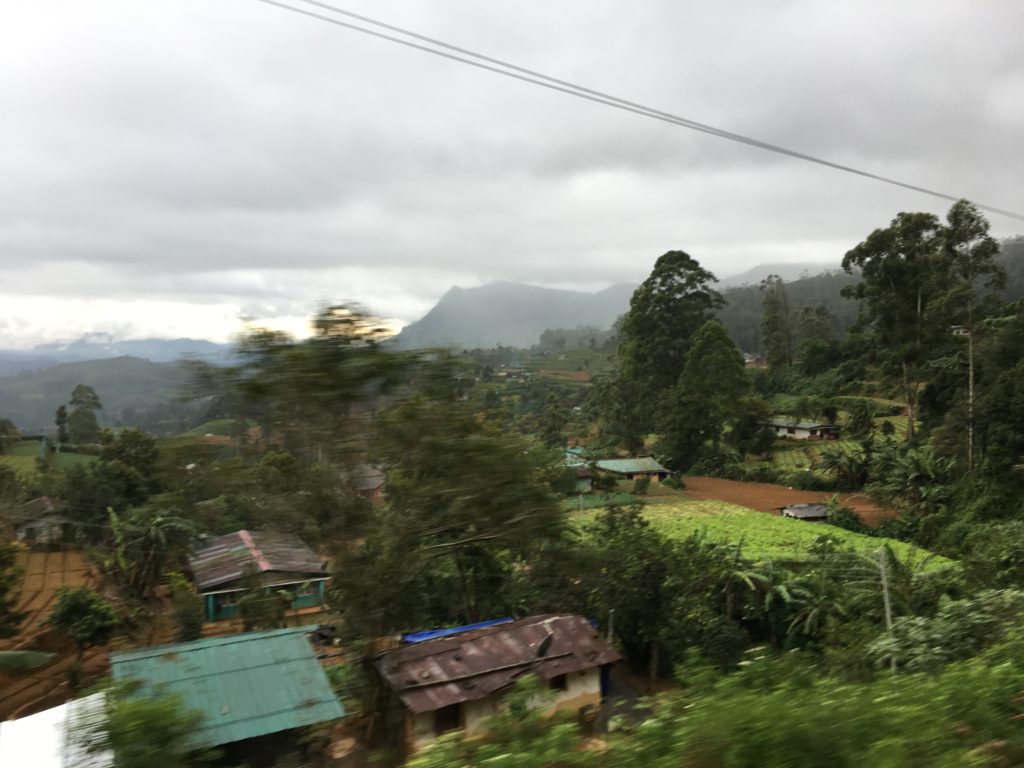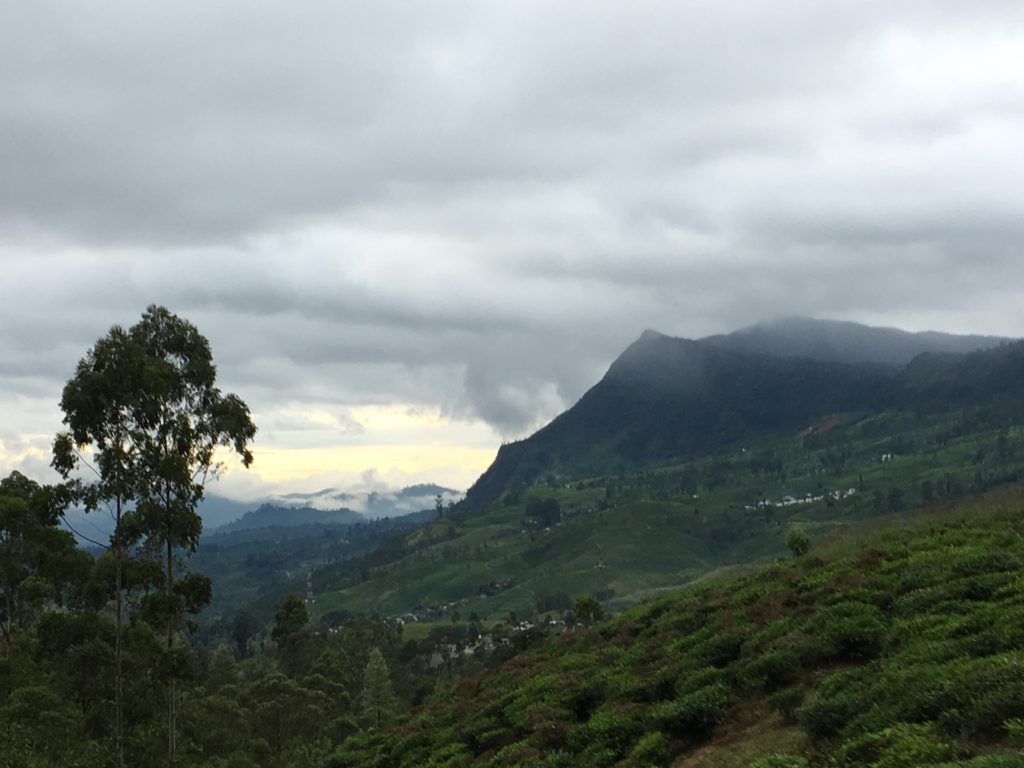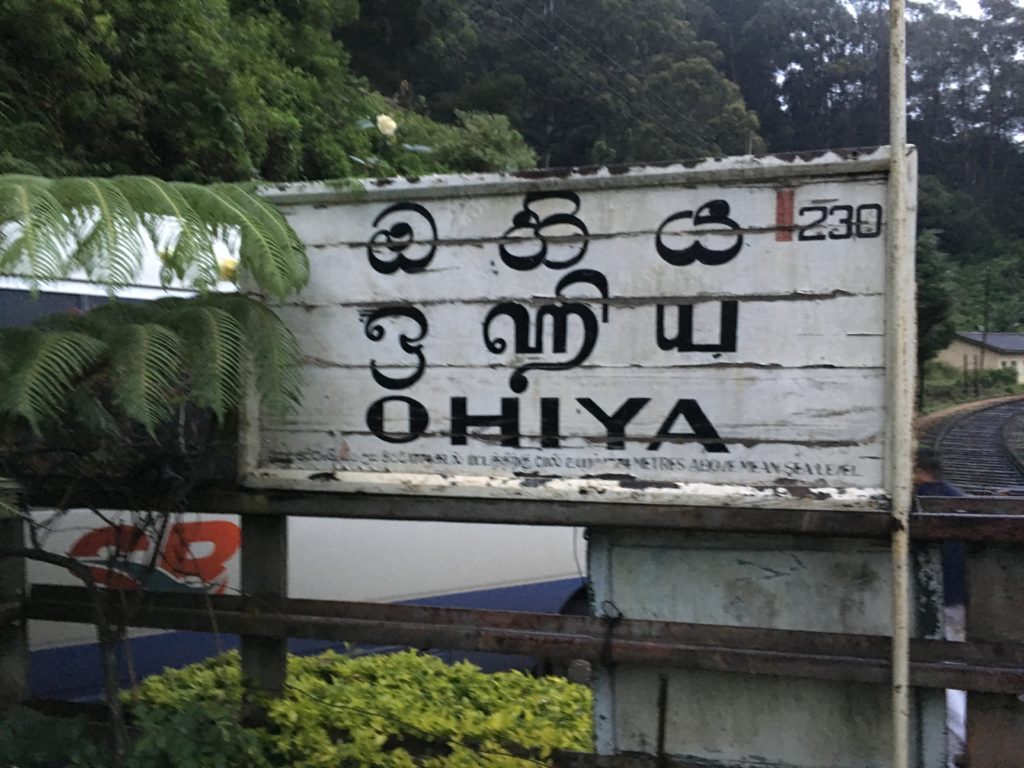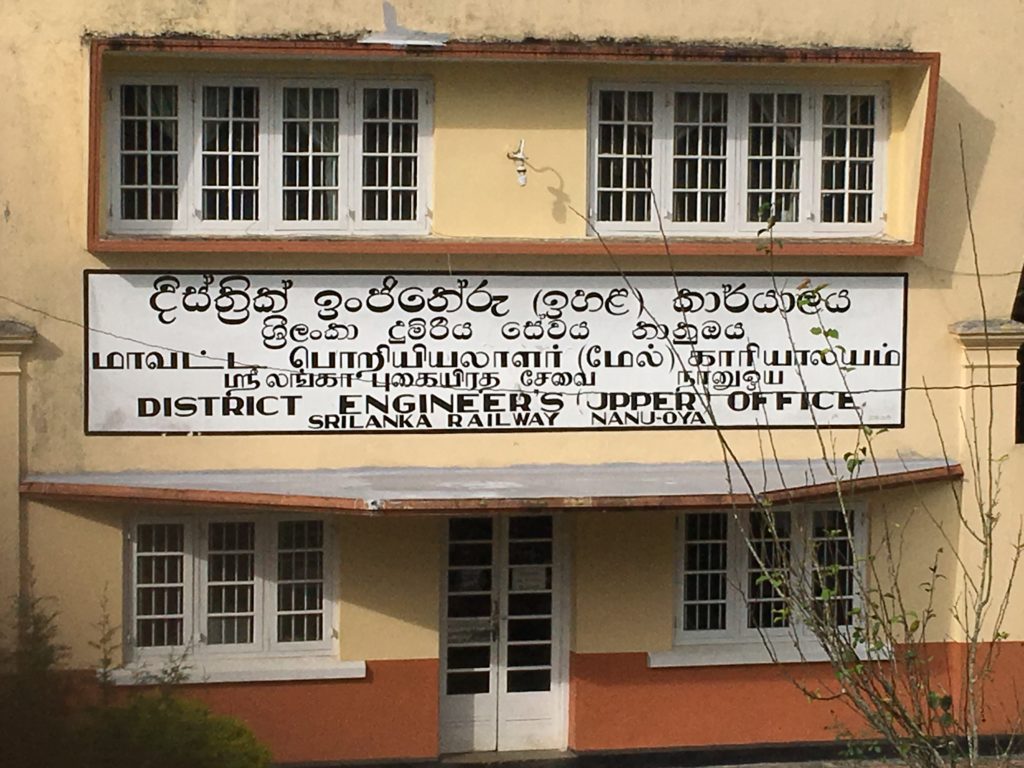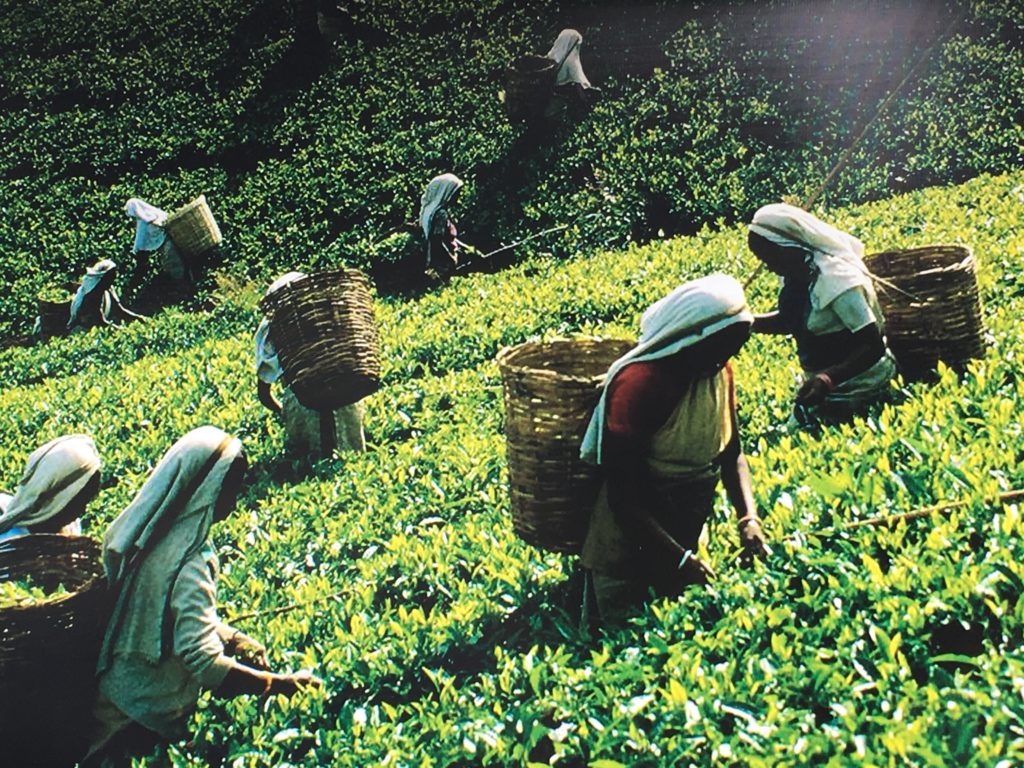These are the entries and photos that I posted on Facebook as part of a travelogue during my pilgrimage to Sri Lanka on 14-25, 2019 November with Episcopal Relief & Development
Friday 15 November 2019
Colombo, Sri Lanka
I left Harrisburg PA from the train station at 4 PM on Wednesday, and am finally at my destination- Galle Face Hotel in Colombo, Sri Lanka, into the third day of travel. Two trains to Newark, a shuttle to a hotel, a night’s fitful anticipatory sleep, another shuttle to the airport, two flights ( a 12 hour flight to Dubai and a 4 hour fight to Colombo), customs, a most gracious and extravagant greeting that included drinking hot tea and eating sandwiches and cakes while a porter retrieved our bags from baggage claim, and another shuttle to the seaside, historic Galle Face hotel. And now… days later, a very hot shower to scrub off the travel weariness, a tall bottle of cold water, and some warm cashew nuts roasted with curry leaves to tuck me into bed.
I am traveling on a pilgrimage with Episcopal Relief and Development. We are here to visit and see the work that has taken place with the assistance of the ERD: in post- tsunami (2004) rebuilding, in post-civil war reconciliation, and through the support of small “cottage industries” through “micro loans/grants.” Our group is 12 or so Episcopalians from around our Church; Rob Radtke, the Head of ERD;Mary Carr, our tour manager; Nagulan Nesiah, ERD staff person who lives in Sri Lanka; and our Presiding Bishop and some of his support staff including Sharon Jones, Canon Chuck Robertson and Bishop Ed Konieczny. We will be making these official visits, seeing some attractions (Elephant Orphanage, Tea Plantation, Temple of the Sacred Tooth), visiting with some students from Ceylon University, and worshipping in some of the churches in our Anglican Communion. (I have the honor of preaching in one of them!)
This first night as some of us arrive, and others are still on their way to us, I am taking advantage of the beautiful hotel room, hot water, clean sheets and a chance for some real sleep.
16 November 2019
Saturday
Colombo
It was an early rising for me- about 3 AM Sri Lankan time. Part of this journey for me is letting go of the need for thing to “make sense” and to just put my full self into whatever comes my way. I spent a lot of time yesterday trying to figure out what time it was, how many hours I had gained or lost, etc., and how to manage this shift in time zones- today I just took the grace of the “adjustment day” built into our schedule and did what my body told me it needed which, it turned out, included eating spicy dal and curry for breakfast, going on a tuk-tuk tour with my fellow pilgrim Alice (a “tuk-tuk” is like a motorcycle with a backseat carriage for two that winds in and out of traffic with a highly skilled driver in the front and white-knuckled tourists in the back), taking a long dip in the salt water pool, napping, reading, and meeting up with the whole group for the first time for high tea at our guide Nagulan’s house.
The entire group has arrived, now, and tomorrow we begin our pilgrimage program with church at the Cathedral (Bishop Curry preaching) and a reception with the Bishop of Ceylon.
Tonight’s tea at Nagulan’s house was so special; the table was laden with small finger foods- shrimp toast, fish cakes, deviled eggs, meat filled pastries, cakes, treacle, fried sweets- and lots of delicious homemade lime-ade and strong coffee. The hospitality of Nagulan and his wife and daughter was exceptional, their home a craftsman’s beauty, and a wonderful opportunity for us to begin to get to know each other better.
It was Election Day in Sri Lanka today. There is no alcohol served here on Election Day. That feels like a good idea. In order to win the election as the next president of the country, the top vote getter must receive >50% of the votes cast. Voters select their top three candidates from a list of 35 or so and the calculations are made by hand. We will see who the winner is when we wake up tomorrow.
Monday morning 18 November 2019
Leaving Colombo
4 AM Dawn of Day
We are up early for a departure to our next site. I’ll be posting this material from the early days of the trip as we leave our initial location.
Yesterday we enjoyed a beautiful service at the Cathedral. Our own Bishop Curry preached a rousing sermon which Bishop Canagasabey, the Bishop of the Diocese of Colombo (Anglican Church of Ceylon) said brought great hope to the people of his diocese. Bishop Curry’s sermon was on the theme of endurance and about the Dream that God has for us- a dream of justice, peace and eternal love. It was given in Bishop’s inimitable style and was filled with the Holy Spirit! The choir at the cathedral was amazing, performing two anthems and a special benediction as they gathered around Bishop Curry at the end. Not a dry eye in the church- such love! The communion ministers and clergy conducted church in bare feet, honoring the Holy Ground on which we were standing. I learned that the cathedral was constructed to look unfinished, a metaphor that the work of God’s people is ongoing. A wonderful icon.
In the afternoon we went to a grocery store and bought tea and spices and to a craft bazaar that featured local textiles and art. It was super hot so we stopped for a lime and lemongrass spritzer. So good!
After a briefing with our tour leader Nagulan, we had a visit from the Social Responsibility Ministry leaders of the diocese who showed us a video and talked about their disaster relief and emergency preparedness work. We enjoyed a delicious Cuban dinner (Rice! Beans! Prawns! Spicy beef!) and there may have been a small amount of dancing at the end…
We move locations today. I am learning some interesting things about politics and economic development in this small island nation… I’m not informed enough to comment on it all in this space, but suffice it to say that culture, politics and religion are very complicated and the way that they influence each other takes great study to understand with some nuance. I’m not there yet.
More in a few days.
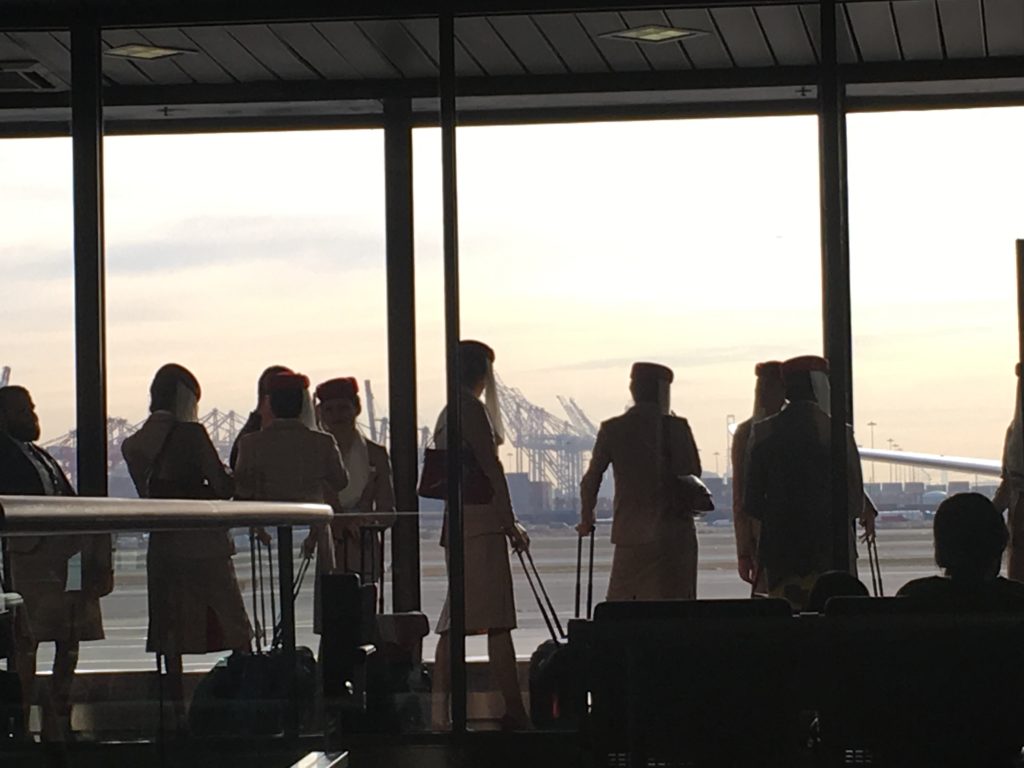
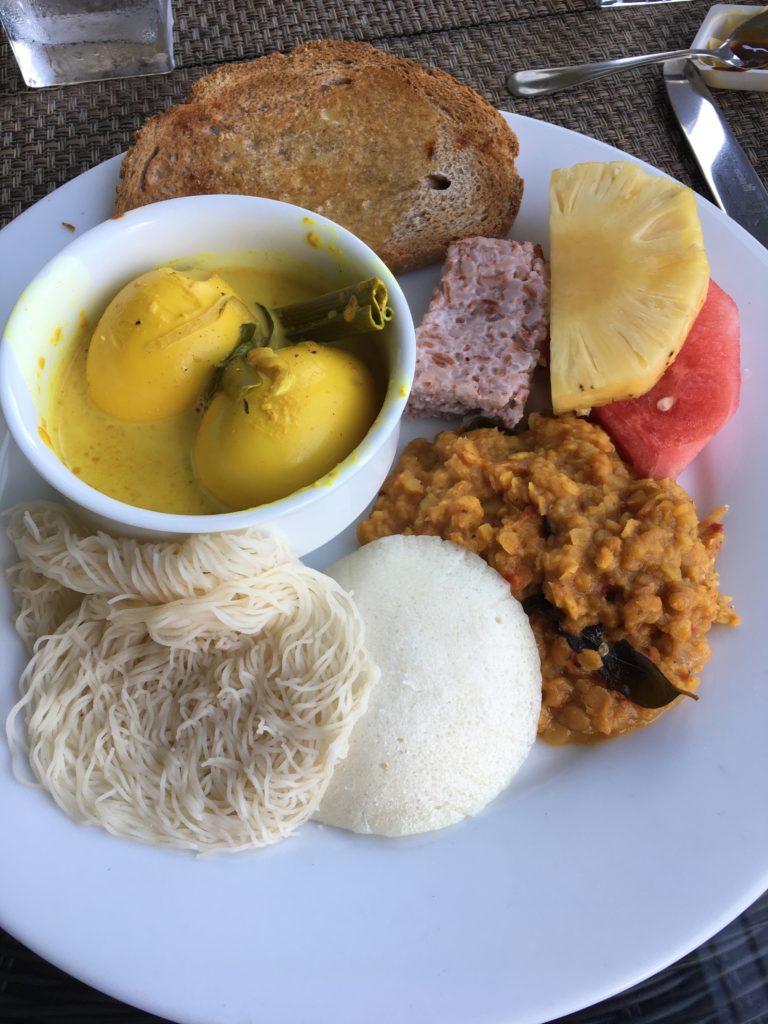
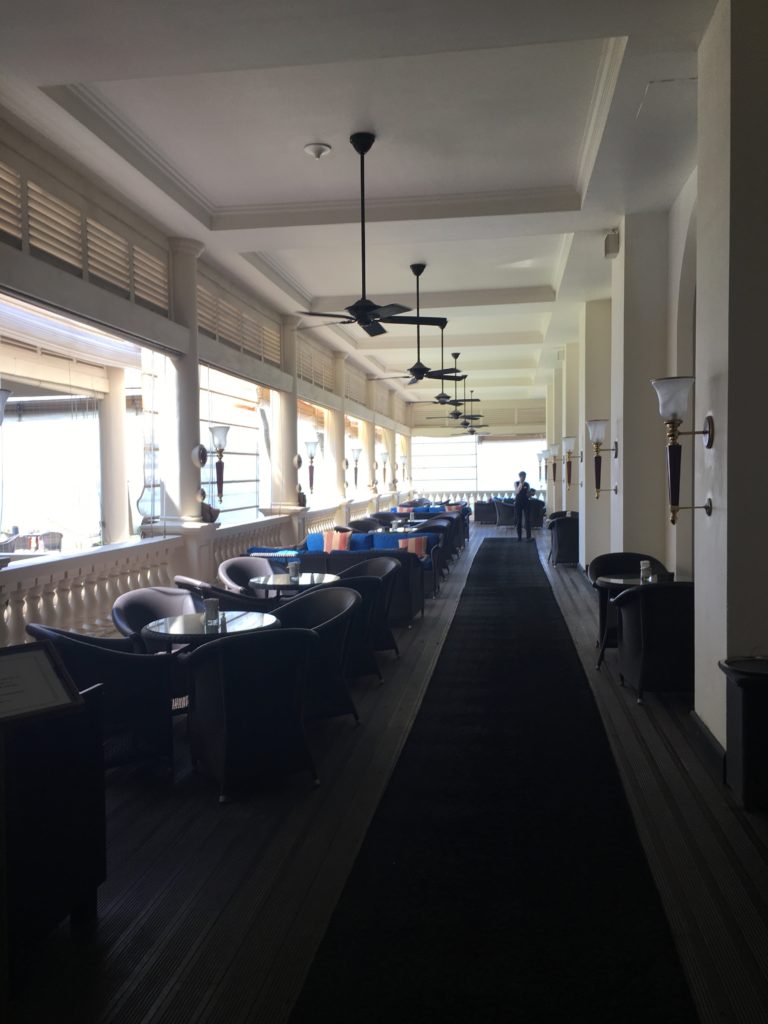
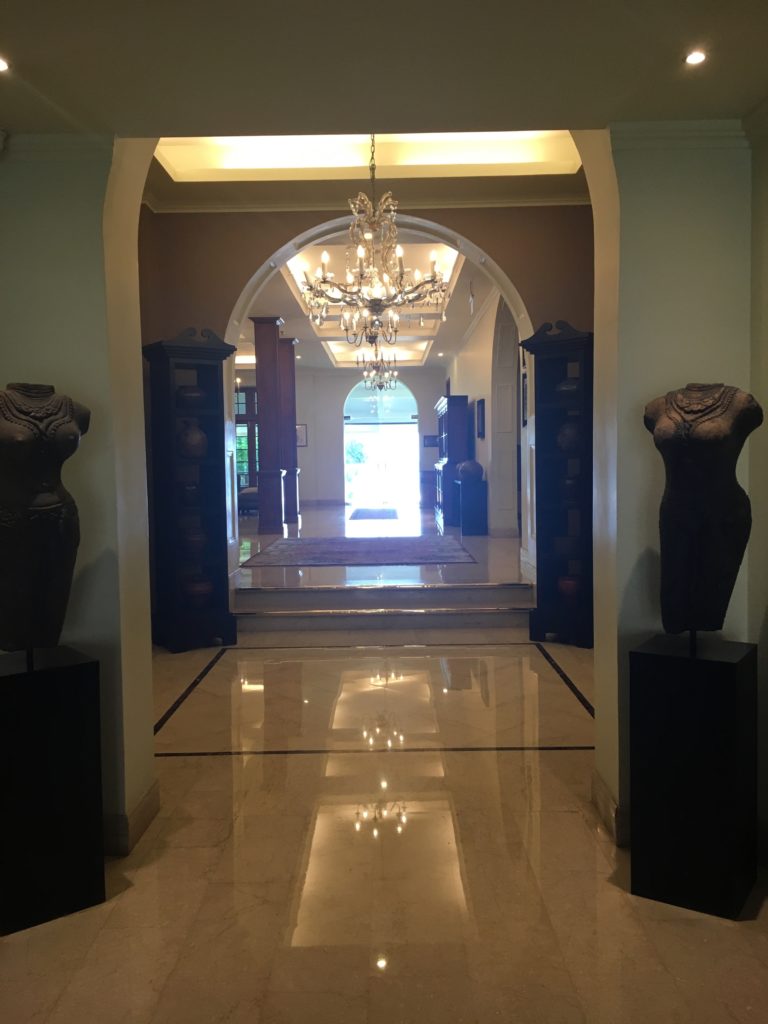
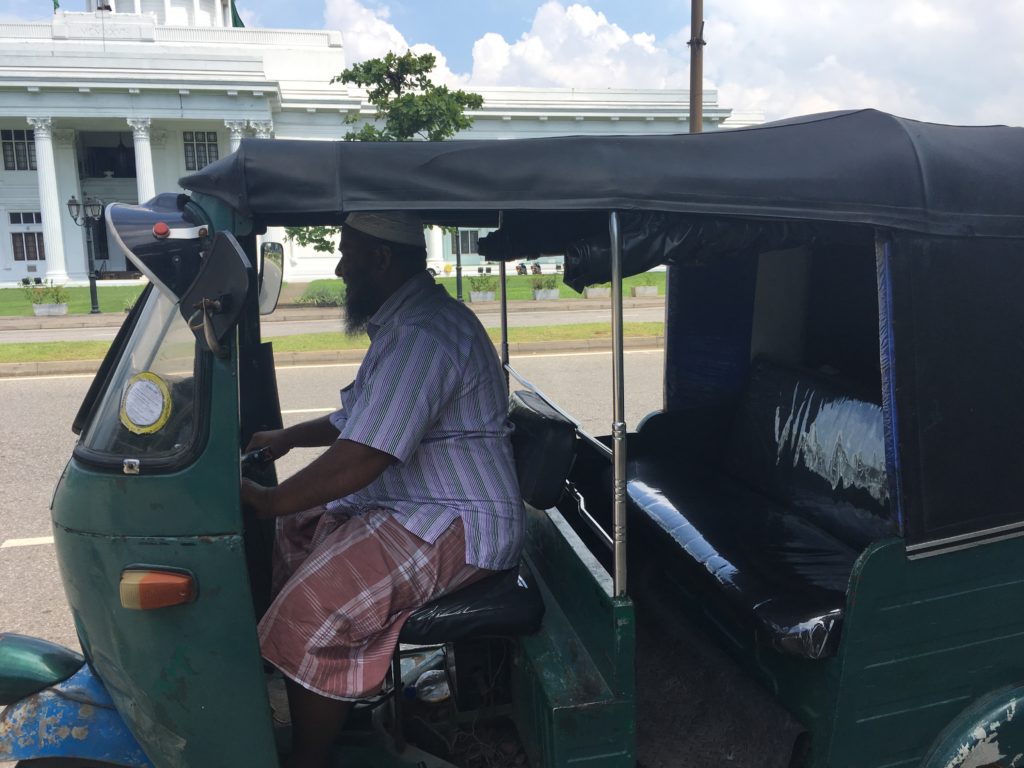
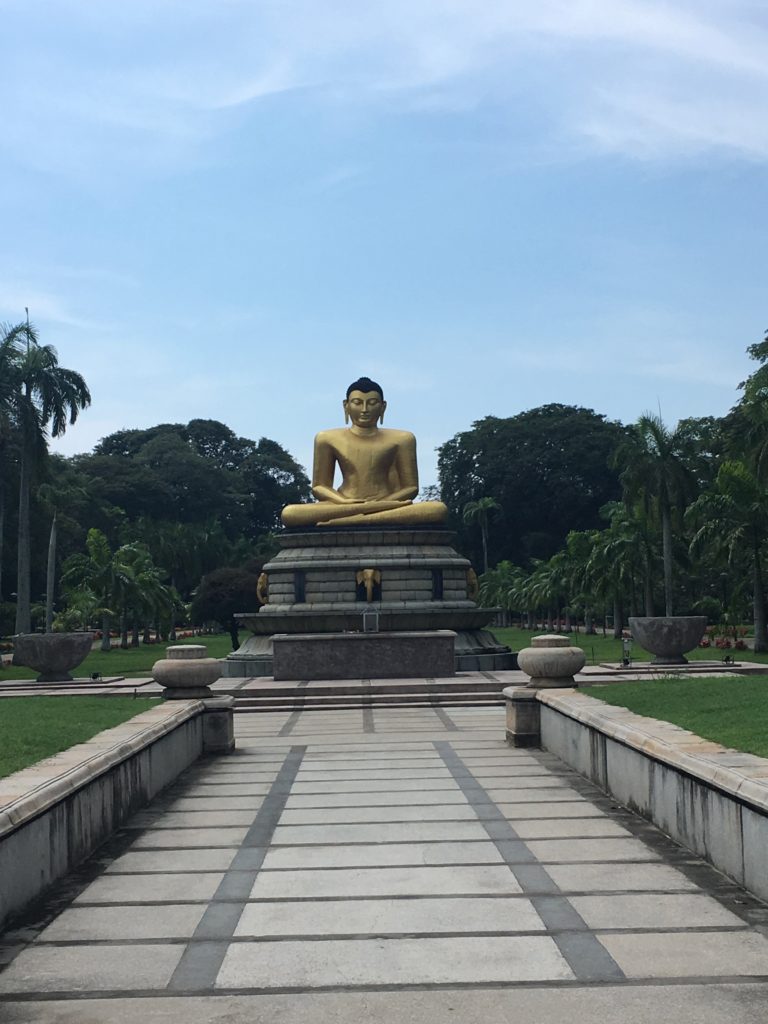
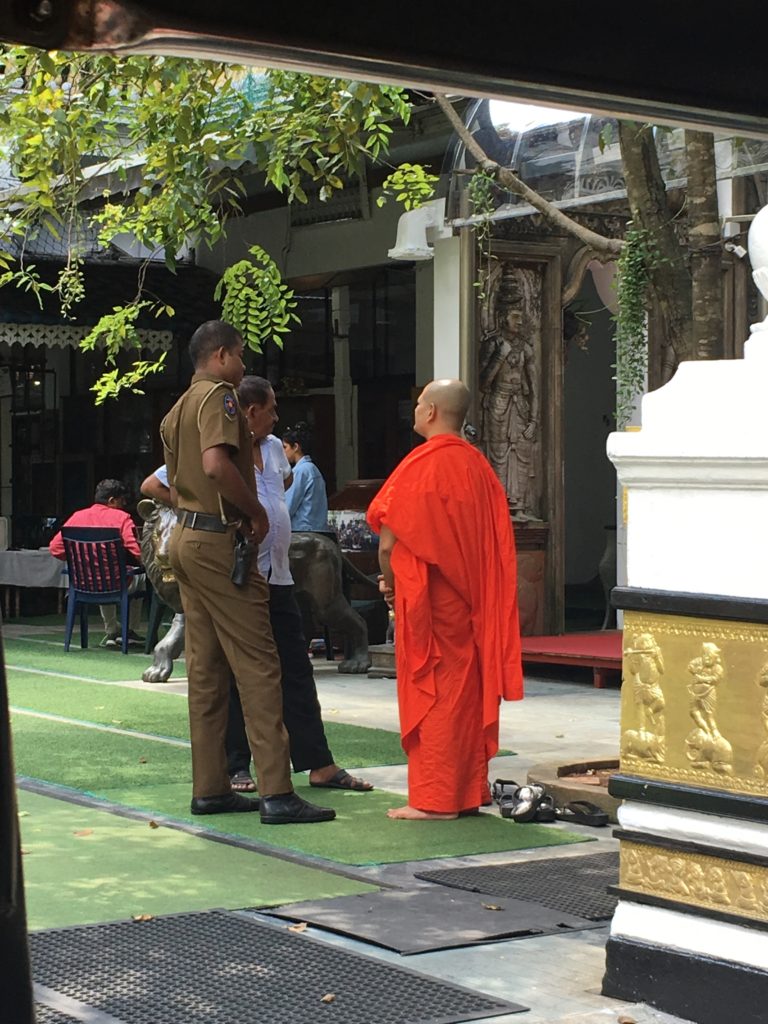
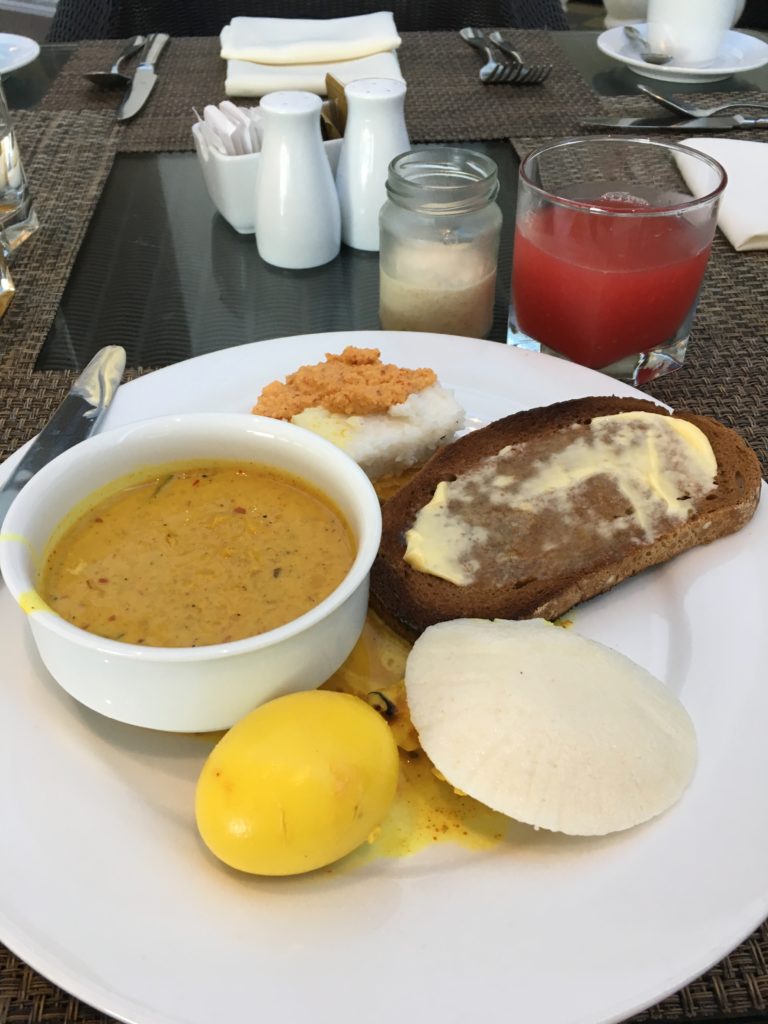
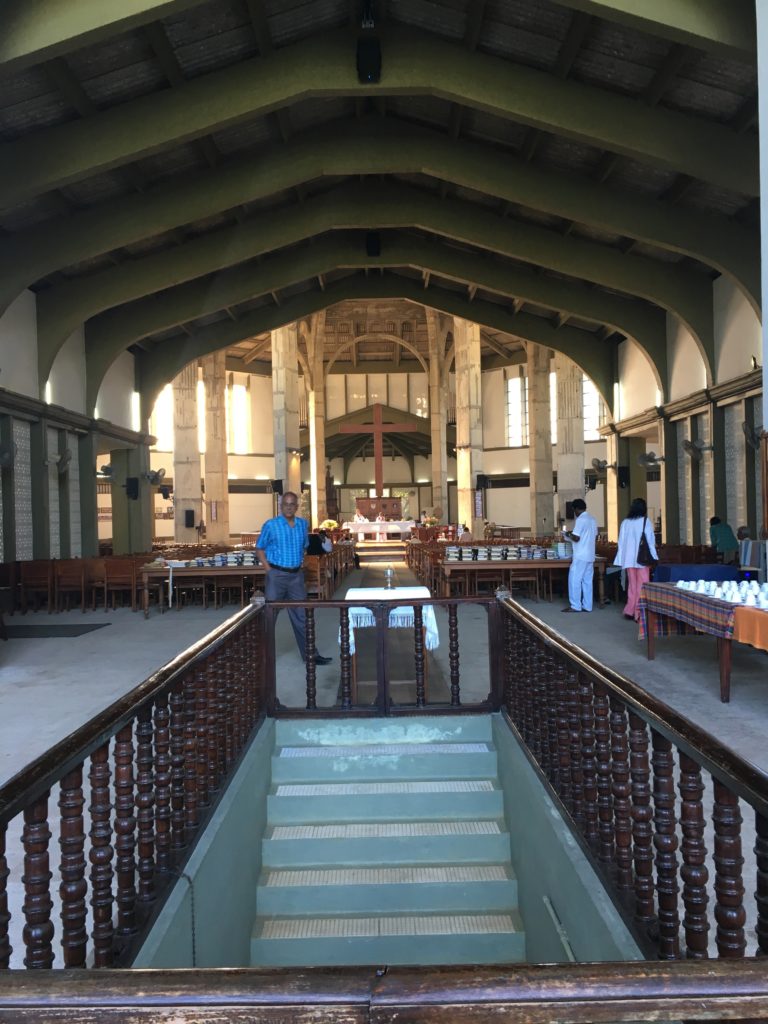
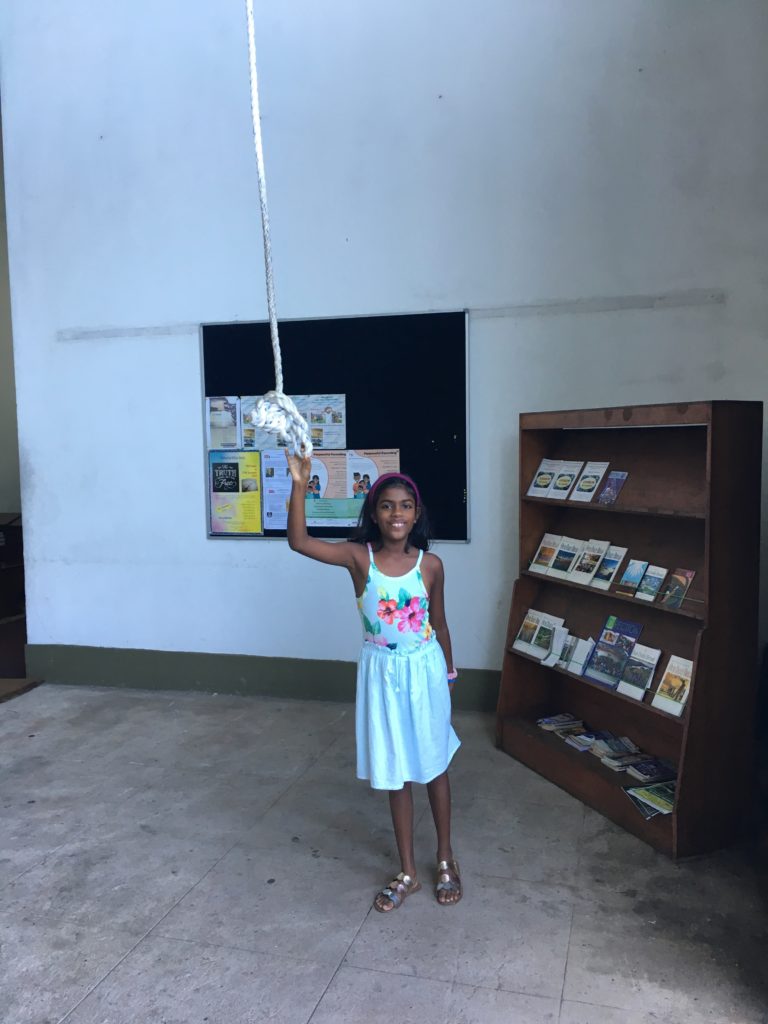
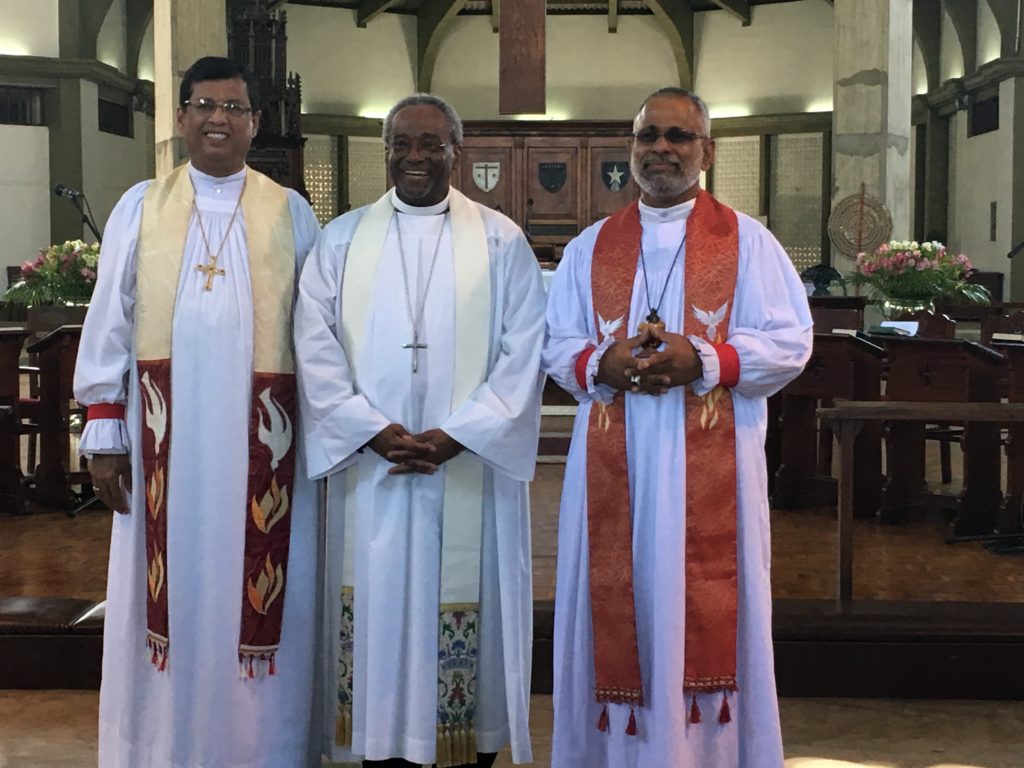
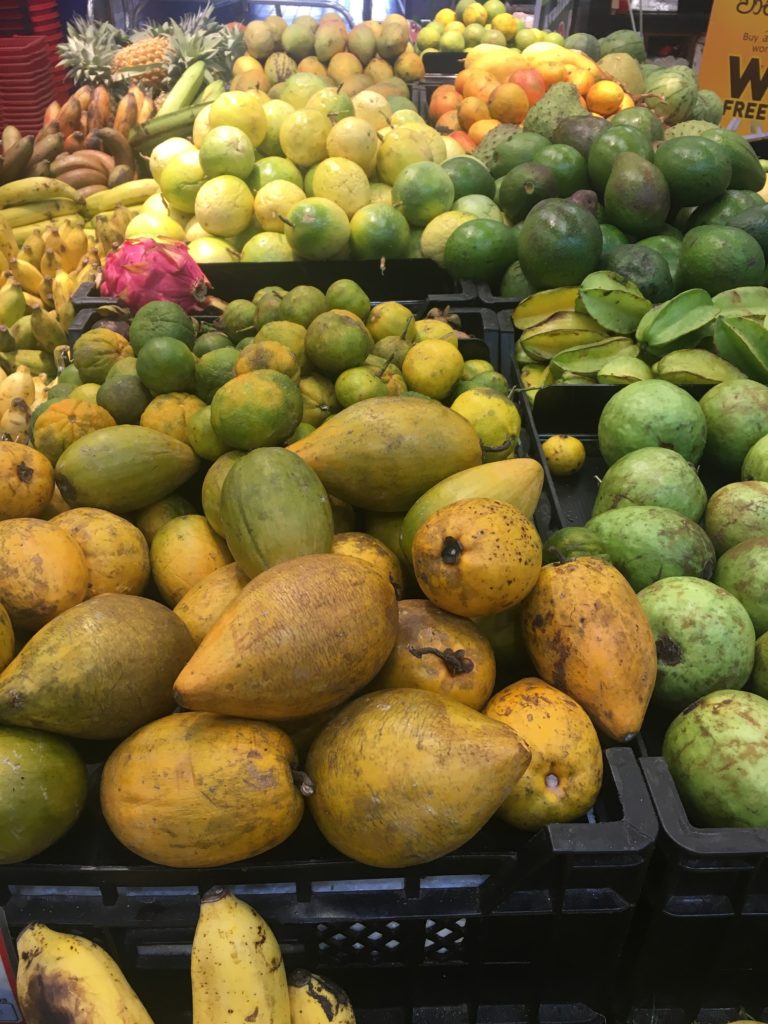
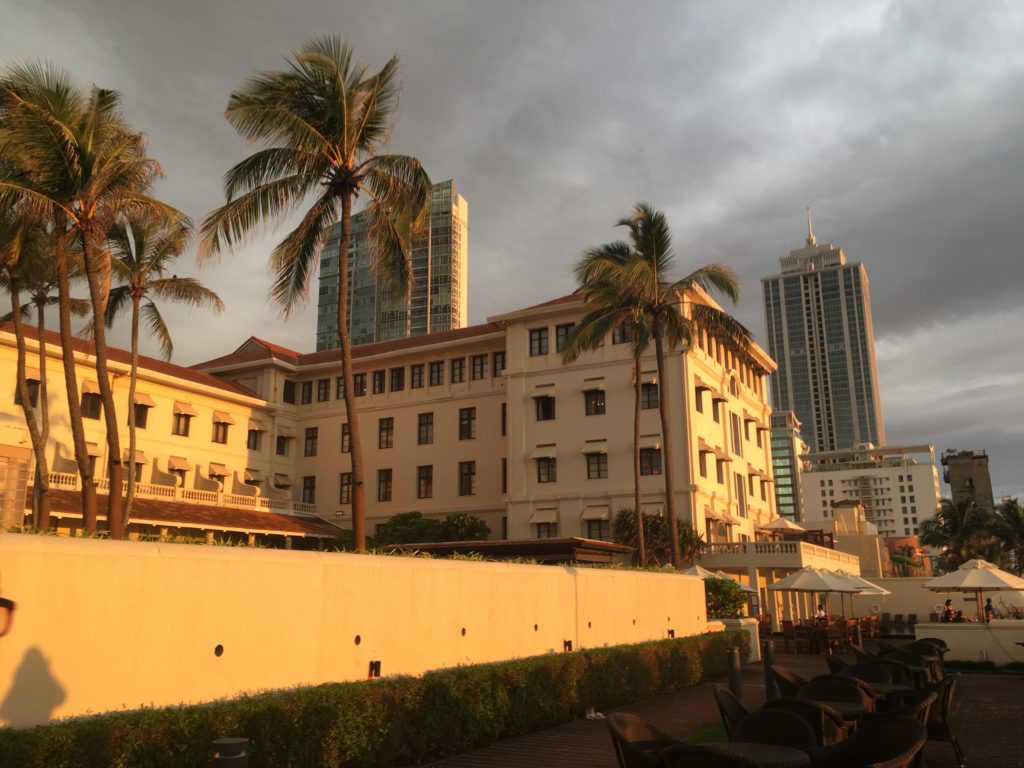
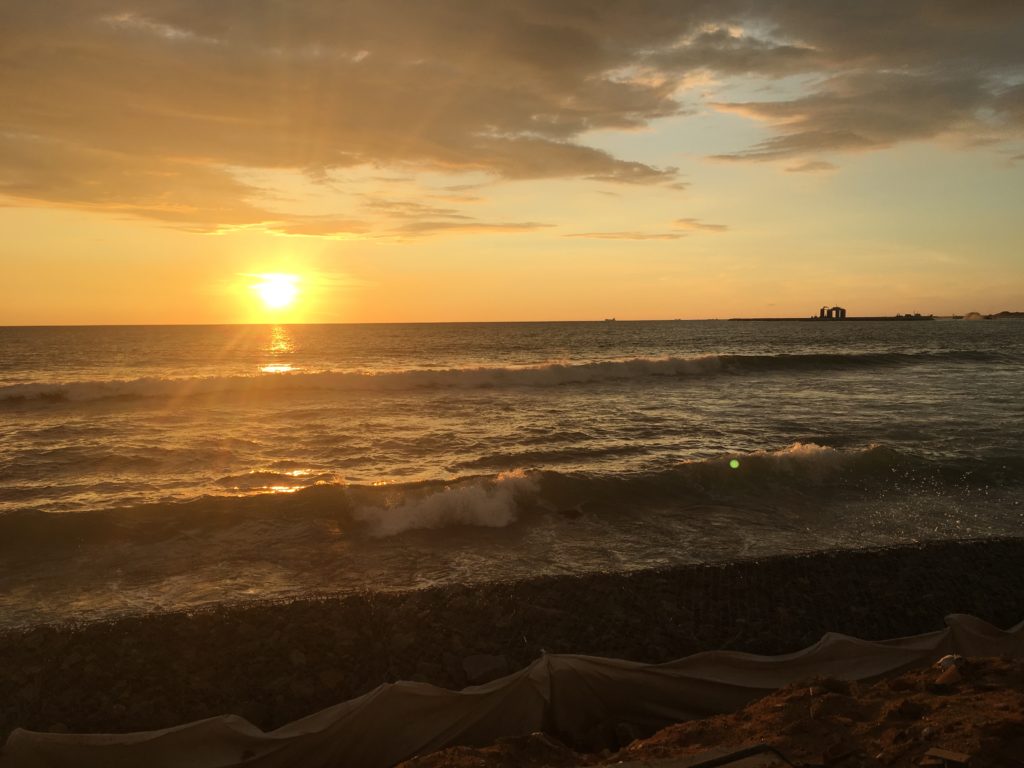
Tuesday
19 November 2019
Hotel Amaya Hills
Kandy
A Continuing Travelogue from our Sri Lankan pilgrimage- *warning this is long.
Here’s a blog posted on a delayed format… so this all happened a couple of days ago…
We will be on the move again tomorrow after two nights at the Amaya Hills hotel high up in the mountains above Kandy. And so, here is the latest installment of our pilgrimage travelogue. I am distinguishing between this travelogue (a recounting of events, places and people) and the blog/essay that I hope to write at the conclusion of this trip that will share some of my reflections from a theological and spiritual point of view. The “thickness” of this journey- people, places, ideas, relationships, politics, economics, religion- is too much to relate with out the benefit of prayer and discernment… (the work of any pilgrimage) and so, for now, here’s the Who-What-Where of our past few days.
We arrived in Kandy, the second largest city in Sri Lanka, on yesterday afternoon, Monday, 18 November. Kandy is an old city- it does not have the high rises and commercial buildings that the capital Colombo does. Kandy is a very busy, low-to-the-ground city with narrow streets, shops, cars, Tuk-tuks and motorbikes weaving in and out of traffic; people selling wares on the street, men in sarongs, women in saris and lots and lots of dogs, some of them so comfortable with the bustle of the city that they sleep between the sidewalk and the street, stretched out in the hot sun. Kandy’s shops present signs and graphics in three languages- Sinhalese, Tamil and English- and the four major religions of the country- Buddhism, Islam, Hindu and Christianity – are well represented by large shrines, temples, mosques and churches.
Before we arrived in Kandy, we stopped at the Elephant Orphanage in Pinnawala. This orphanage is a refuge for dozens of elephants who have been injured, abandoned, sick and/or deserted. They are brought to a lovely preserve where they are fed and cared for. Once a day they are paraded down the hill from the refuge to the river where they bathe in the shallow river and receive a much welcomed cool splash. Our party arrived just as the elephants were making their way across the street to the river. We followed them and spent a lovely part of the afternoon watching these majestic and affectionate animals loll around in the cool water. We also had a chance to pet and feed the elephants. I was not brave enough to do more than extend my hand to stroke the leathery neck of one old dame… several of those in our party purchased melon and bananas to feed the elephants, bravely sticking their hands deep in the cavern of the elephants’ mouths. (No thanks, a hard pass on that for me!)
As we made our way up the winding road to the Amaya Hills hotel, the road became more narrow and the switchback turns a little tighter. Our van driver did a heroic job negotiating blind corners, dogs in the road, people in the road, and the game of chicken that one plays when encountering an oncoming vehicle in a road wide enough for just one.
After a lunch of curry (what else?) in the open air dining room, we made our way back down the hill (yes!) to Trinity College where Bishop Curry and a former Bishop of the diocese of Kurunagala led a panel discussion on the Ministry of Reconciliation. (Sri Lanka has just two dioceses: the Diocese of Colombo and the Diocese of Kurunagala. The Diocese of Colombo covers about 80% of the island, and Kurunagala, the remaining 20%.). The presentation was held in the massive open air chapel, tucked into the hillside. The carved wooden columns and long rattan-seated pews and muted frescos offered a solid and sober grounding for this difficult conversation. Reconciliation in a country still suffering from the effects of a civil war and on the heels of a national election in which a somewhat controversial candidate was elected as President- was a timely and sensitive topic to discuss. The audience was largely male. Many clergy from the two Sri Lankan dioceses were present, along with theology students, faculty, and distinguished guests. Late in the discussion I was able to offer the hopeful example of our own Memorial Prince of Peace church in Gettysburg, telling how the parish had claimed its responsibility and charism as witnesses to peace by hosting Civil Conversations around our current political divide in the USA. I was proud to share the story of one of the churches in our diocese joining in God’s mission.
Following the Trinity College discussion we made our way back up the hill in the dark (!) for a beautiful dinner with 25 diocesan guests joining our pilgrimage group for continued conversation, speech making and hospitality. I sat between a young priest just out of seminary who is the pastor of 3 churches, and a diocesan layman who owns a successful clothing company and travels regularly to the garment district of NYC for his work. I also met a priest who told me of a refugee family that they had cared for and that had recently moved to… Pennsylvania.
A short 5 hours of rest and I was up to greet the day-
Tuesday
19 November 2019
Amaya Hills
Kandy
I got up at 3:30 and waited until 4:30 to go and pursue the possibility of getting into the gym for a turn on the treadmill. Not knowing that the gym didn’t open until 5:30, I sat outside in the garden looking at the constellations and praying that the monkeys rustling in the hedges would stay there and not come to look for a morsel of food from me. I sat in the garden and listened to the staff in the kitchen just above the gym as they began their day . Soft chatter turned to the sound of knives on chopping blocks and soon, the fragrant smell of frying onions. And then, the sound of the Buddhist staff chanting their morning prayers. Fried Onions, Chanting, Rustling Monkeys, Starry Skies. It was an hour that I will never forget. And then the attendant came and I traded in my reverie for a few kilometers on the treadmill listening to Blake Shelton (yeah, sorry.. but Country is fun to run to). From the sublime to the ridiculous, indeed.
Our morning was spent at the Mobray College for Girls, an elementary-high school level school in the Christian/Anglican tradition. We were greeted with ceremonies in which we were presented broad green leaves for our pockets and adorned with bindis on our foreheads in pink and gold. We witnessed our leaders in a ceremonial lighting of a large oil lamp and then watched a traditional dance performed by four young women in costume. Some speeches of welcome and introduction set us up for discussion in four small groups on the themes of the diocesan work in reconciliation: in interfaith work, peace building, healing and education and advocacy work to promote the dignity of all humanity. We broke for tea and then had several summary speeches including one that I was invited to give on behalf of our pilgrims. I took the opportunity to reflect on the idea of transformation and then to teach, briefly, the Way of Love. (No pressure there, with Bishop Curry in the front row, lol.)
We went back up the hill (!) for lunch, rest, and a time of group reflection before the evening’s activity back down the hill (!) for a visit to the Buddhist Pilgrimage Shrine of the Temple of the Sacred Tooth.
The Temple of the Sacred Tooth is a massive shrine that keeps custody of the Buddha’s left canine tooth. The tooth is enshrined in a gold “casket” that stands more than 6 feet high and
Several feet wide. The casket is adorned with precious jewels. It is kept in an inner sanctum of the shrine and protected by heavy gold doors guarded by devout, burly attendants. The door of the inner sanctum is only opened three times per day- at dawn, noon and in the early evening.
The shrine has significant religio-political significance because tradition has it that the tooth is kept in possession of the one who governs the country- in ancient times, the King. The newly elected president of Sri Lanka is expected to visit the shrine on Wednesday, so it was fortunate that we could make our visit on Tuesday evening.
Besides the inner sanctum, there are many other smaller shrines on the campus of the Temple and we were led in long, hot and crowded lines to walk through lesser shrines housing statues and ancient manuscripts. At every turn there was incense burning and the opportunity to make offerings of money and flowers. Loud drumming and the sound of a single horn filled the air.
To prepare for our time at the Temple, we were instructed to wear all white. It is a symbol of purity that shows that one is worthy of approaching the relic. Three of our members were selected for a very special honor to enter the holy of holies, view the casket up close and to make an offering of flowers and prayers. These three were chosen based on the whiteness of their outfits. We were also required to shed our shoes in the courtyard of the temple. Being barefoot in an unfamiliar, congested area made me feel surprisingly vulnerable and uncomfortable. We stood, crushed together in a hushed crowd waiting and straining to see the door when it opened and the relic’s casket revealed. I was standing side by side to Bishop Curry in these anticipatory long minutes and I think that we were both respectfully and reverently intrigued by the whole thing. I could not help but think of our own customs and liturgies that must seem equally curious to outsiders of our tradition, and I couldn’t help but recall the time when I stood in line at museum of the cathedral in Florence for a long while to see the reliquary of a finger of St John the Baptist.
Our time at the Temple ended in a special private room where we enjoyed tea and refreshments and had a short lecture from a guide who explained the major precepts of Buddhism. He made the distinction with us that Buddhism is not a religion, but a philosophy and way of life. (This is contradictory to much of what we had learned from others in the country who have told us of the country’s four major “religions,” Buddhism among them.) The majority of the population of Sri Lanka is Buddhist- 70%.
Then it was back up the hill in the dark (!) past dogs, pedestrians, and speeding motorbikes for a curry dinner on the star lit patio.
Tomorrow we leave Kandy and continue our pilgrimage in another part of the country. Stay tuned for more in a few days and look for an accompanying post with photographs.
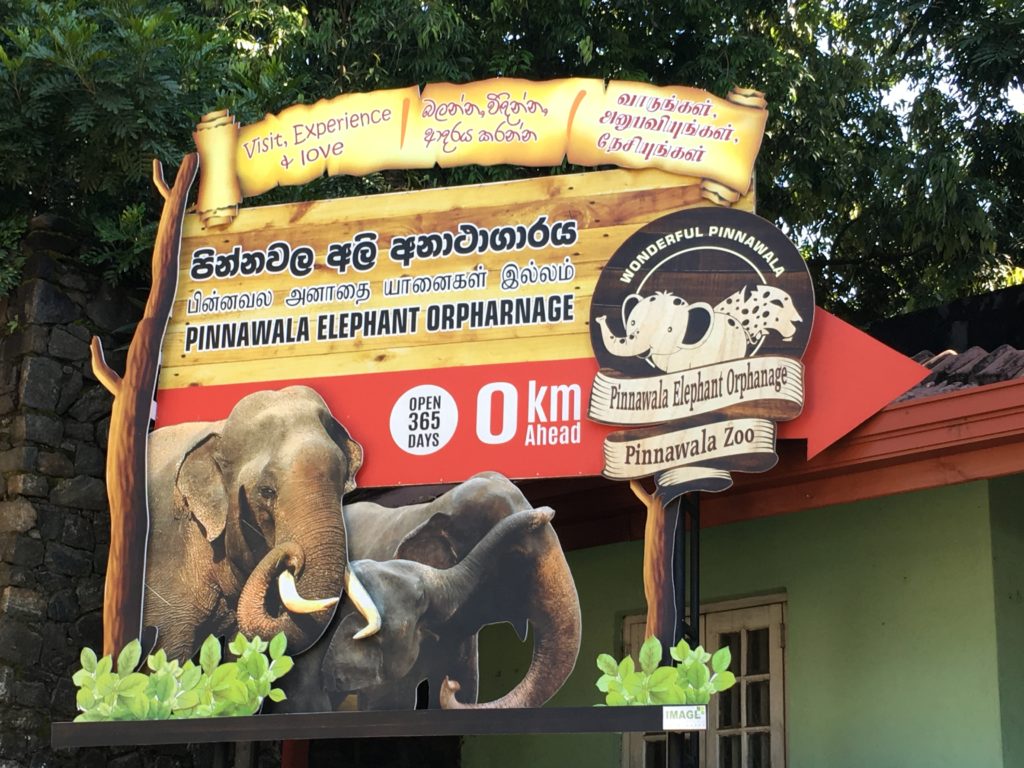
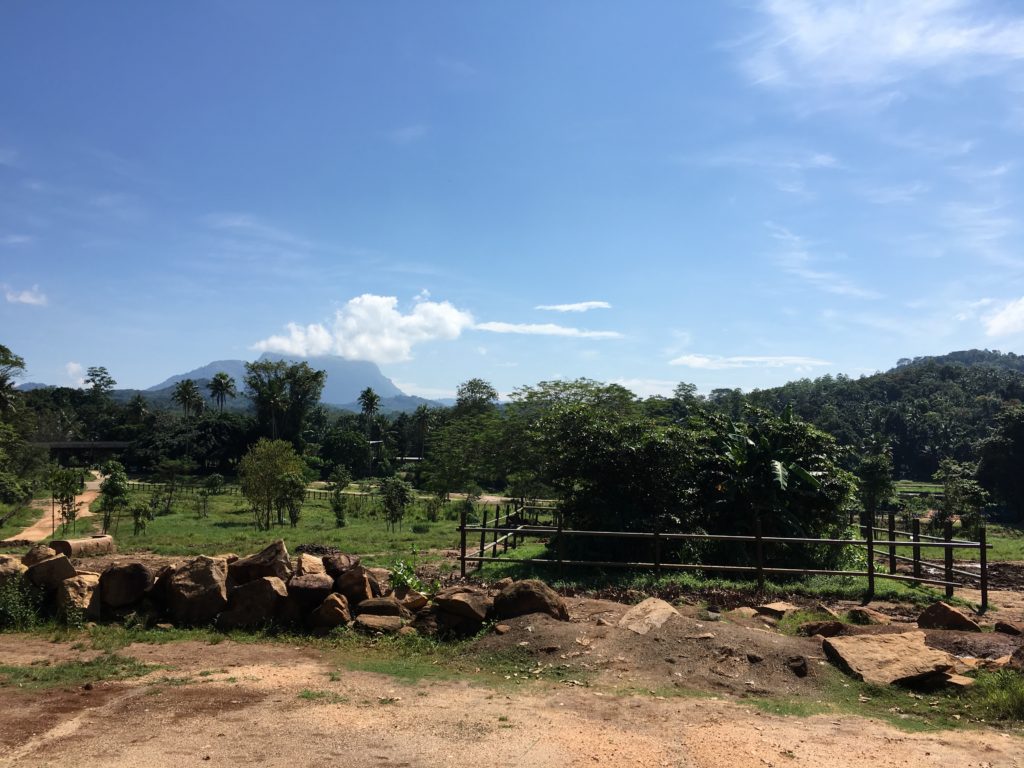
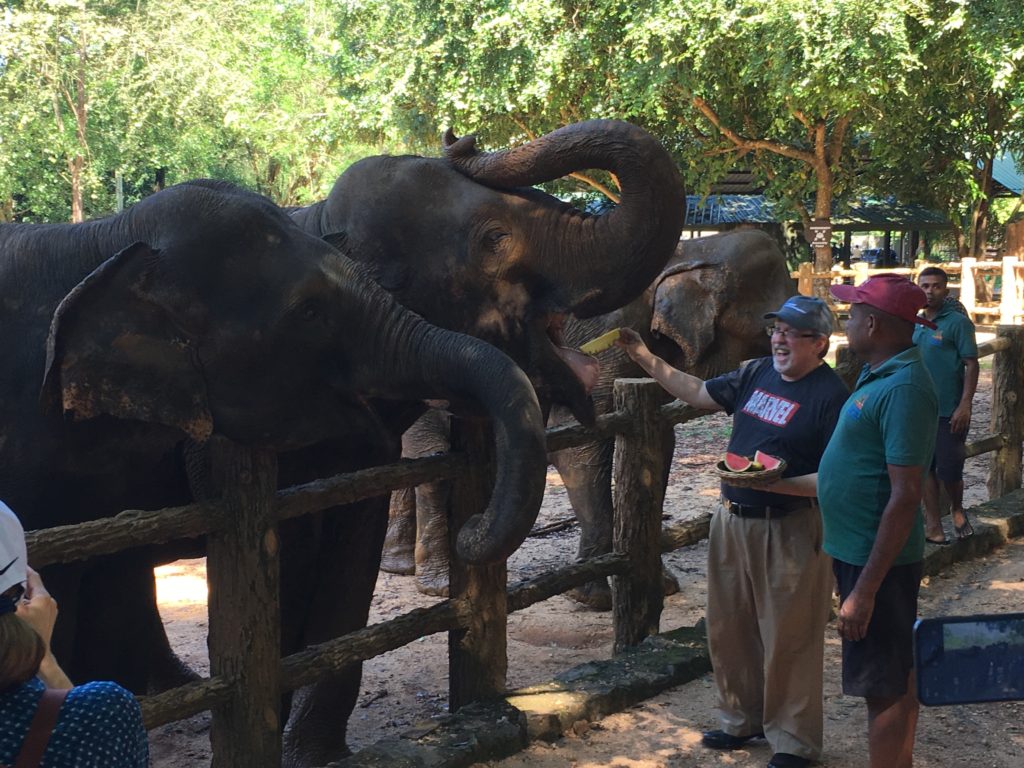
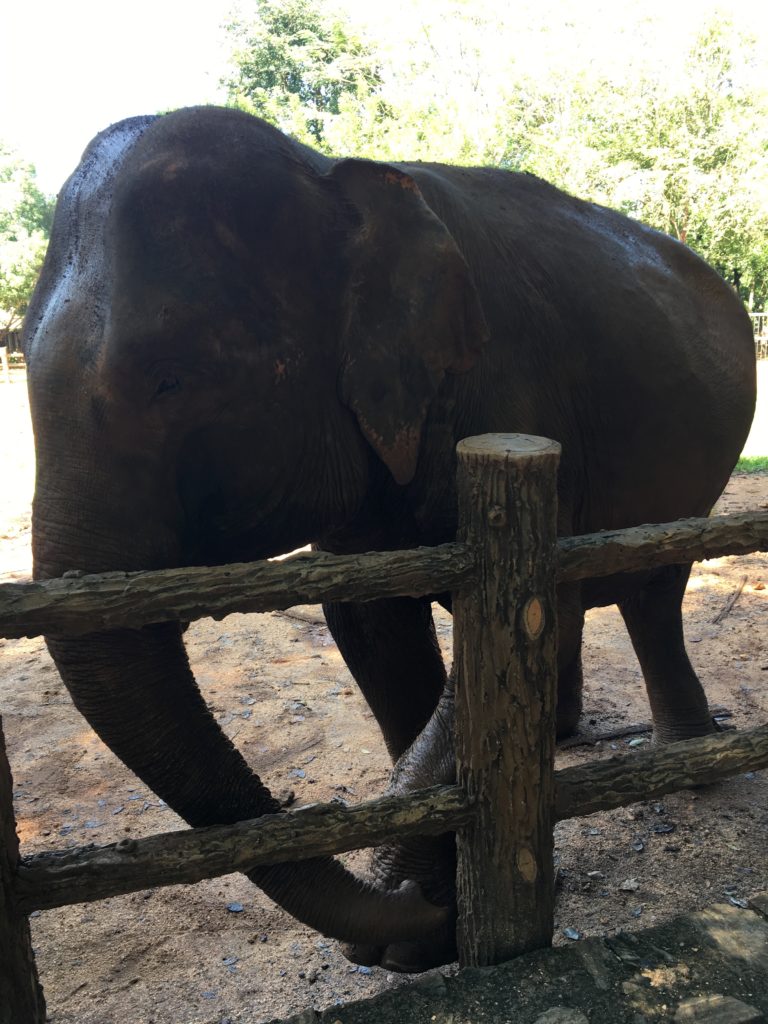
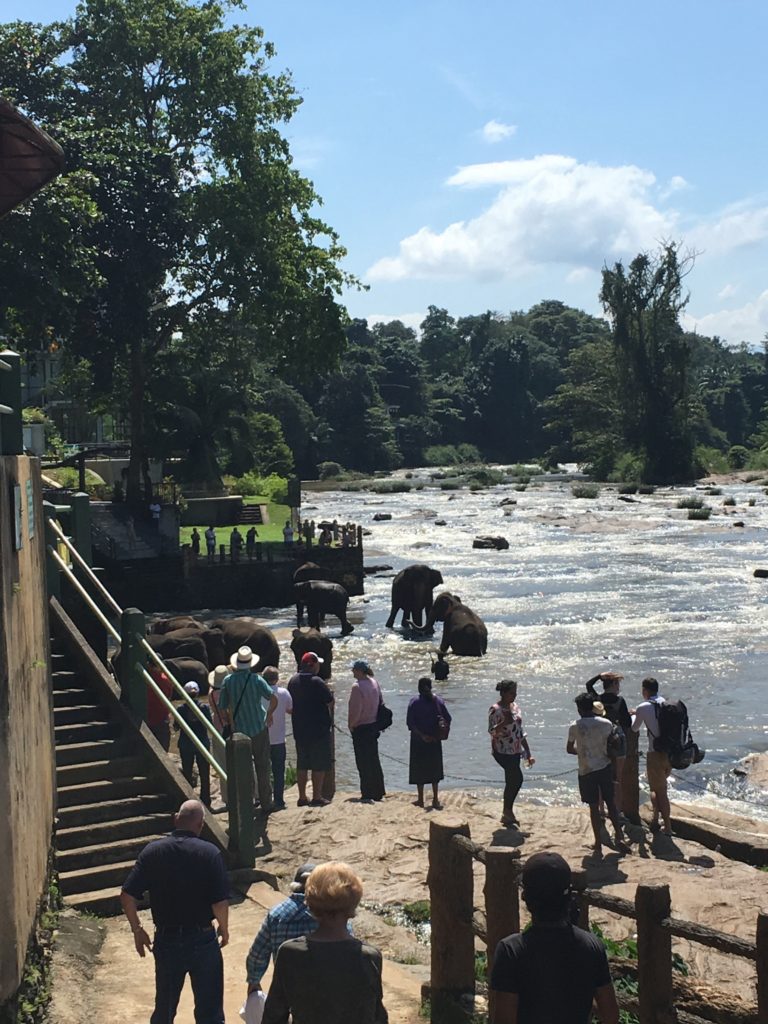
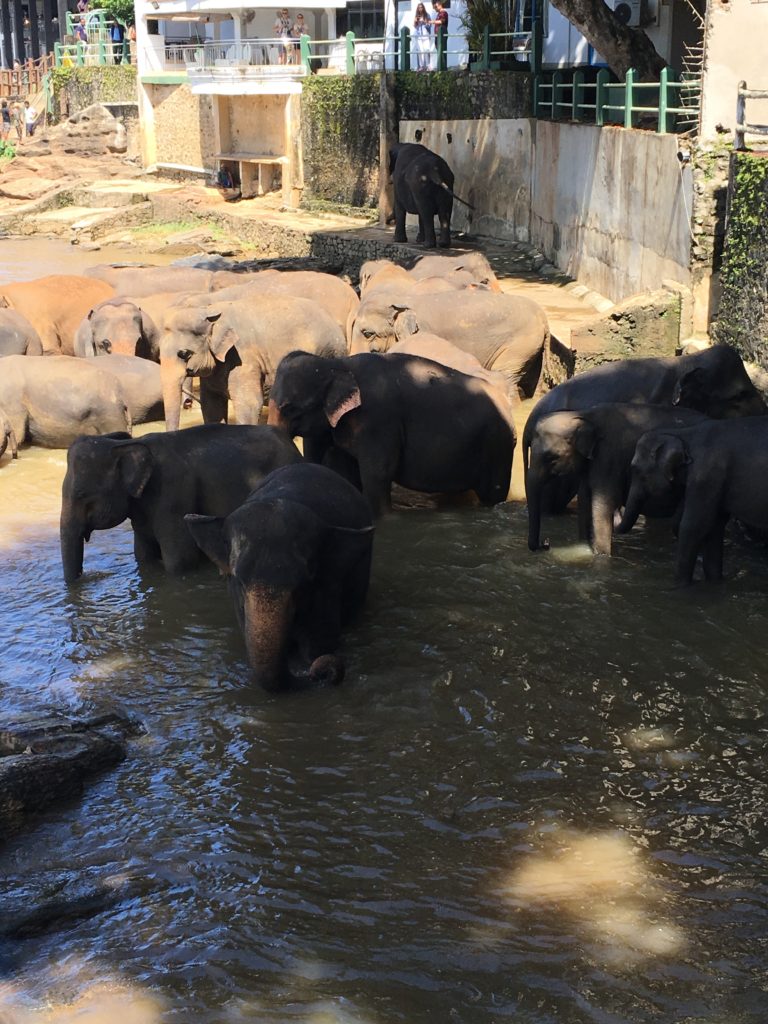
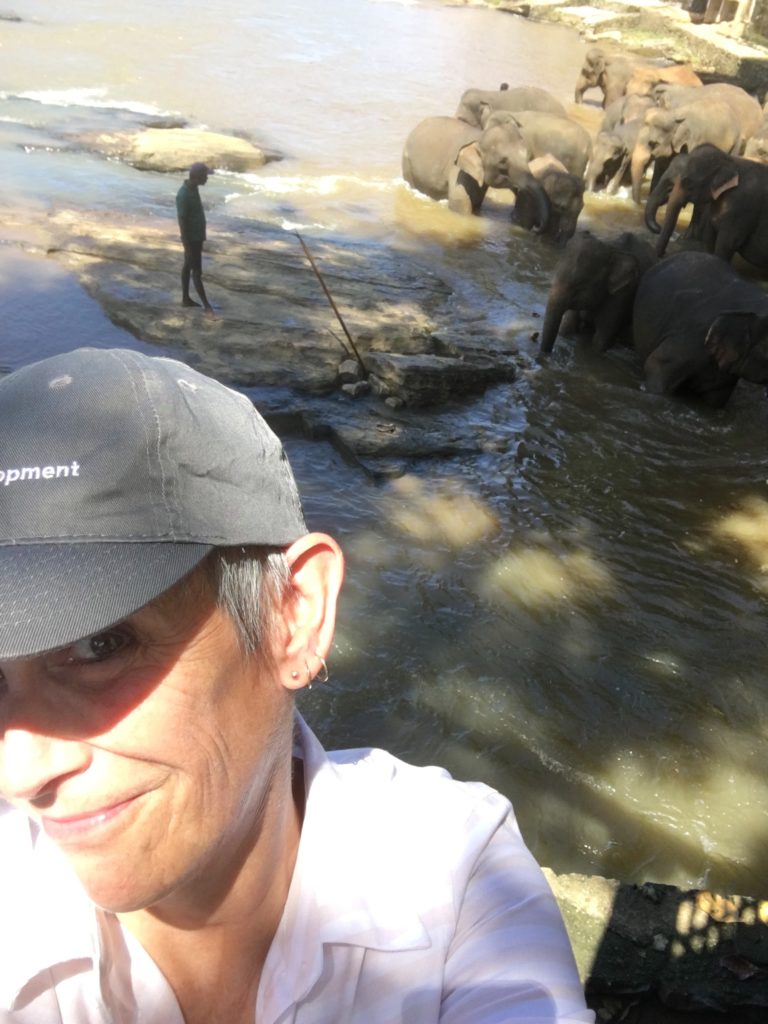
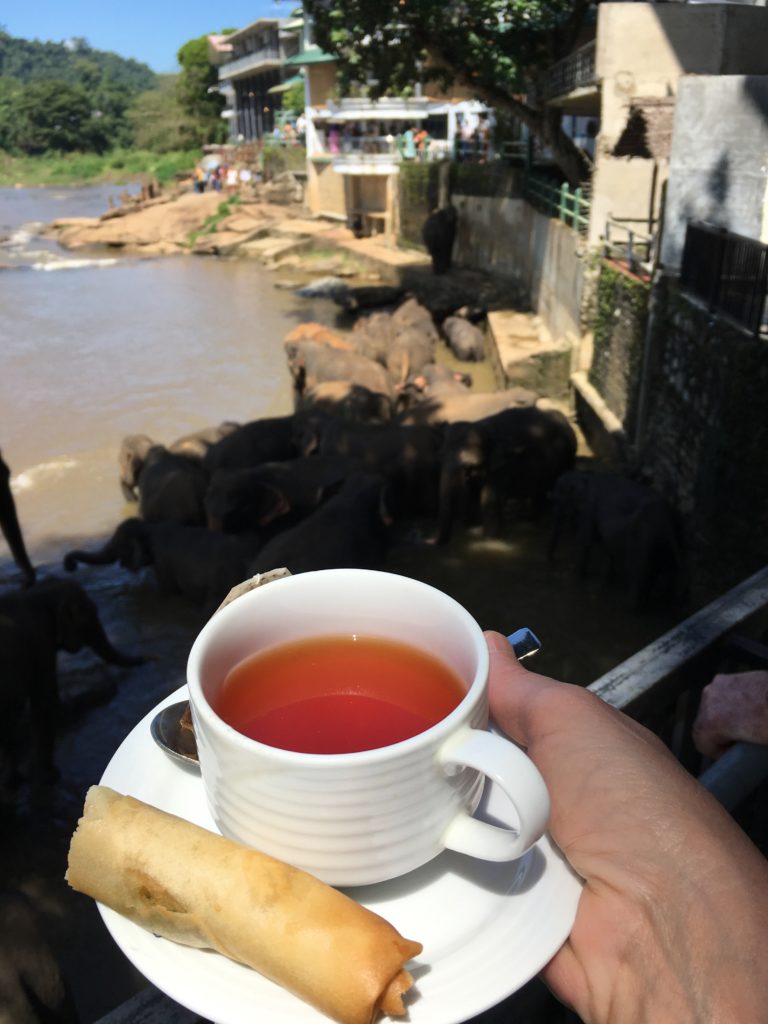
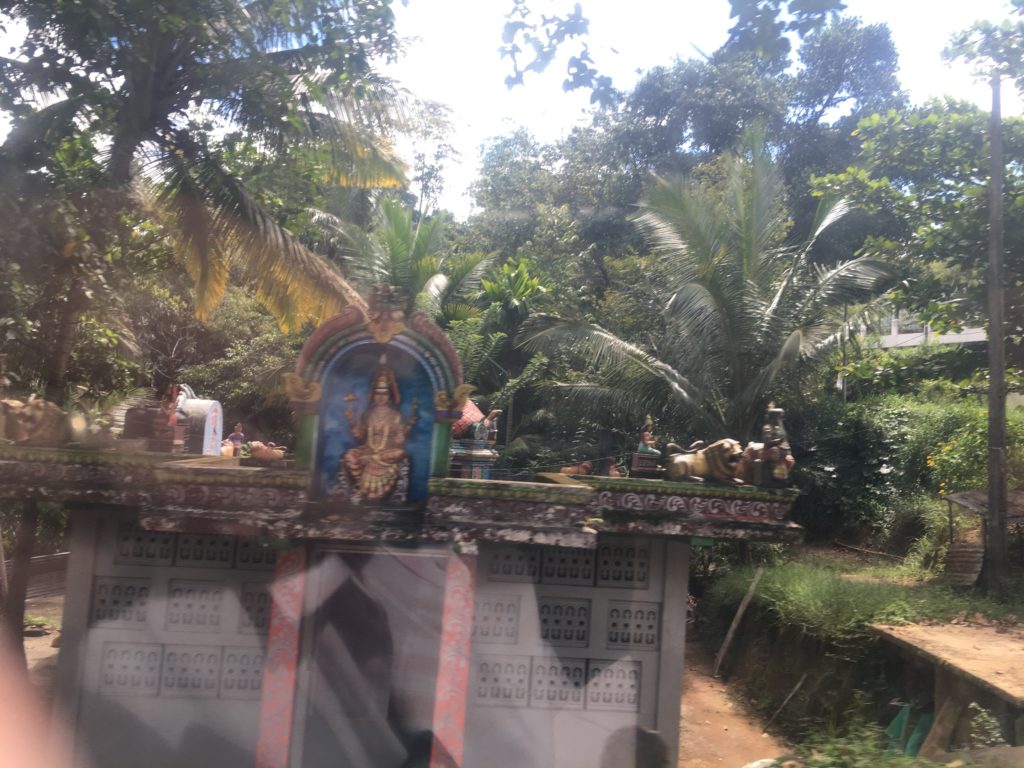
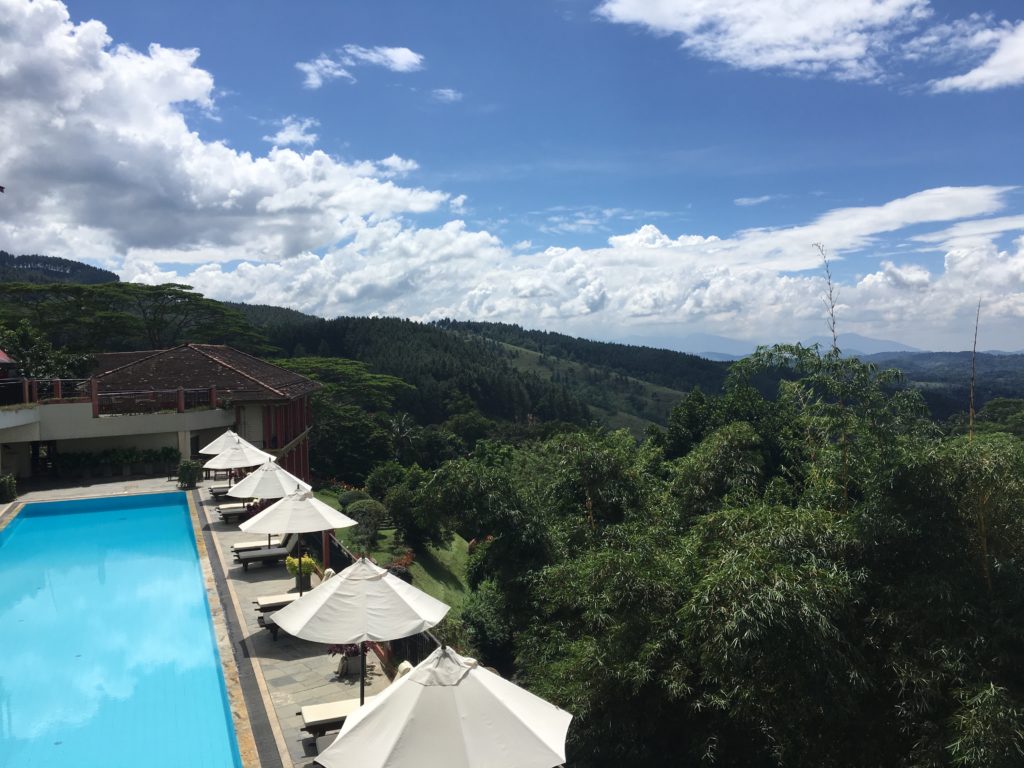
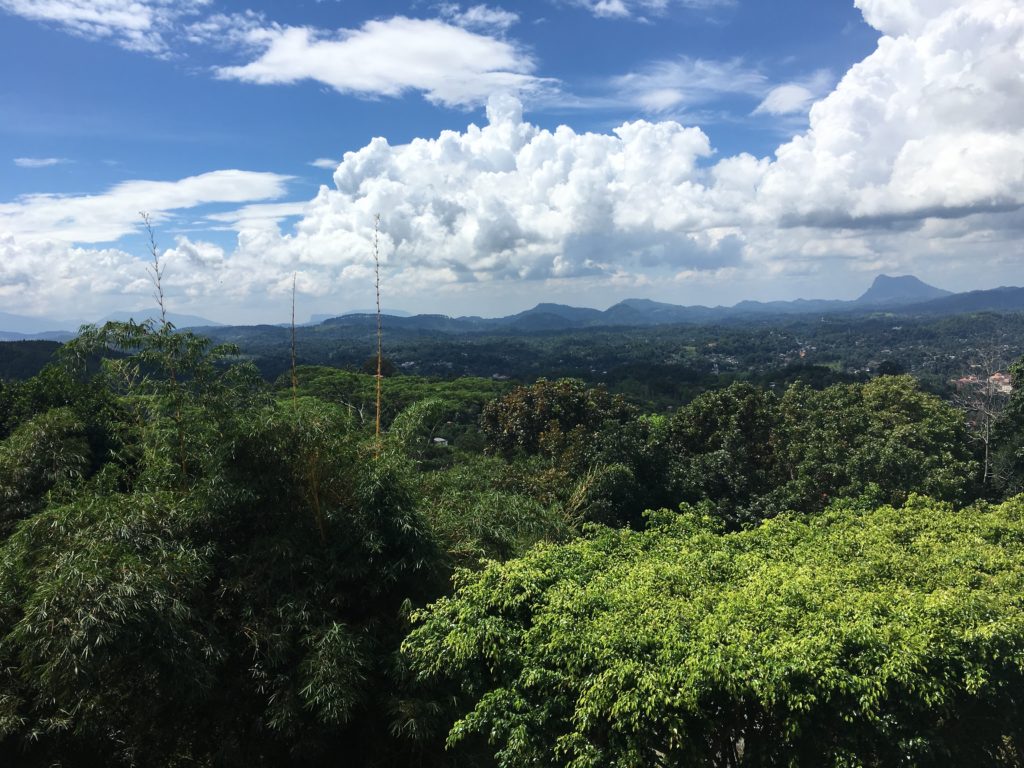
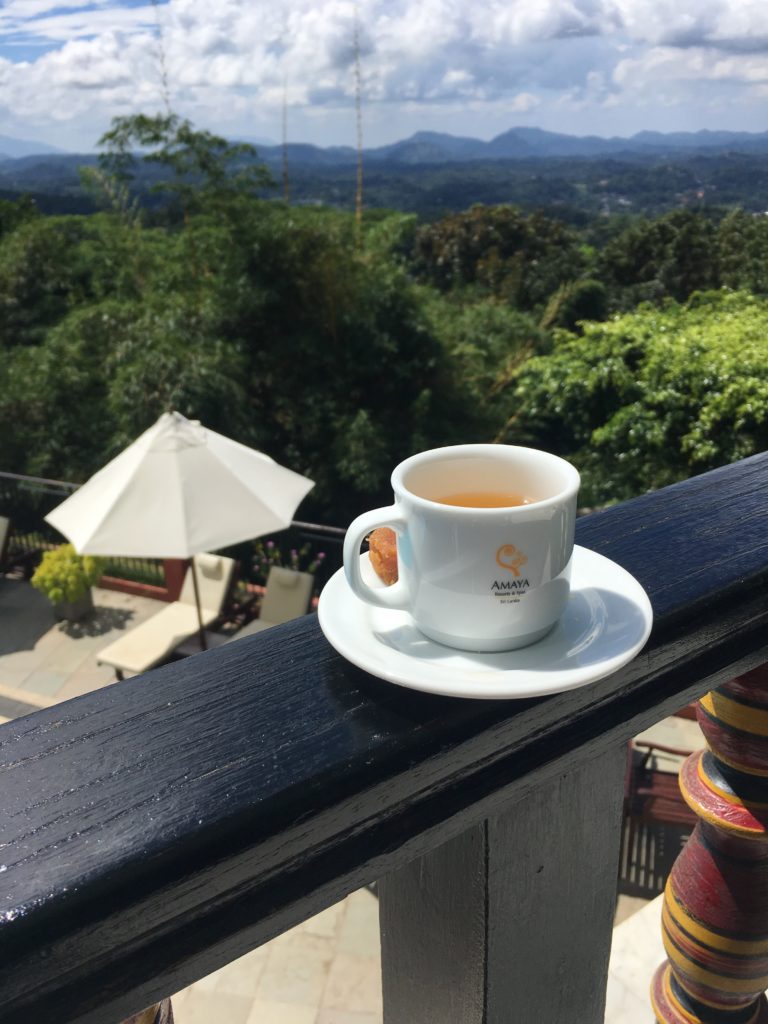
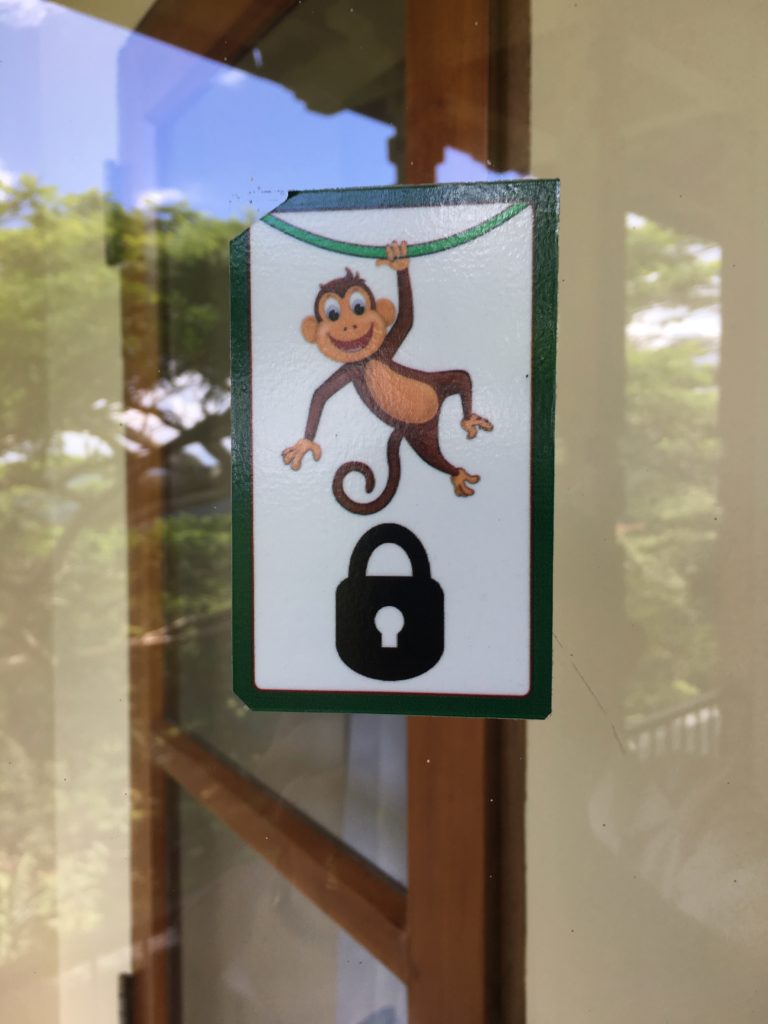
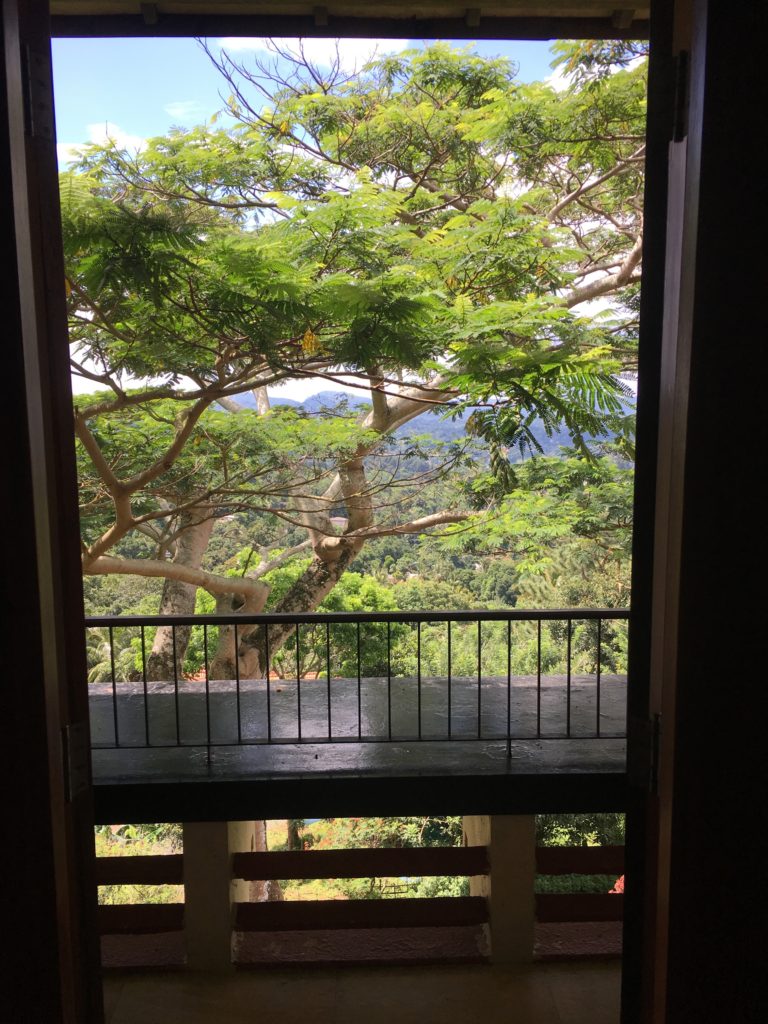
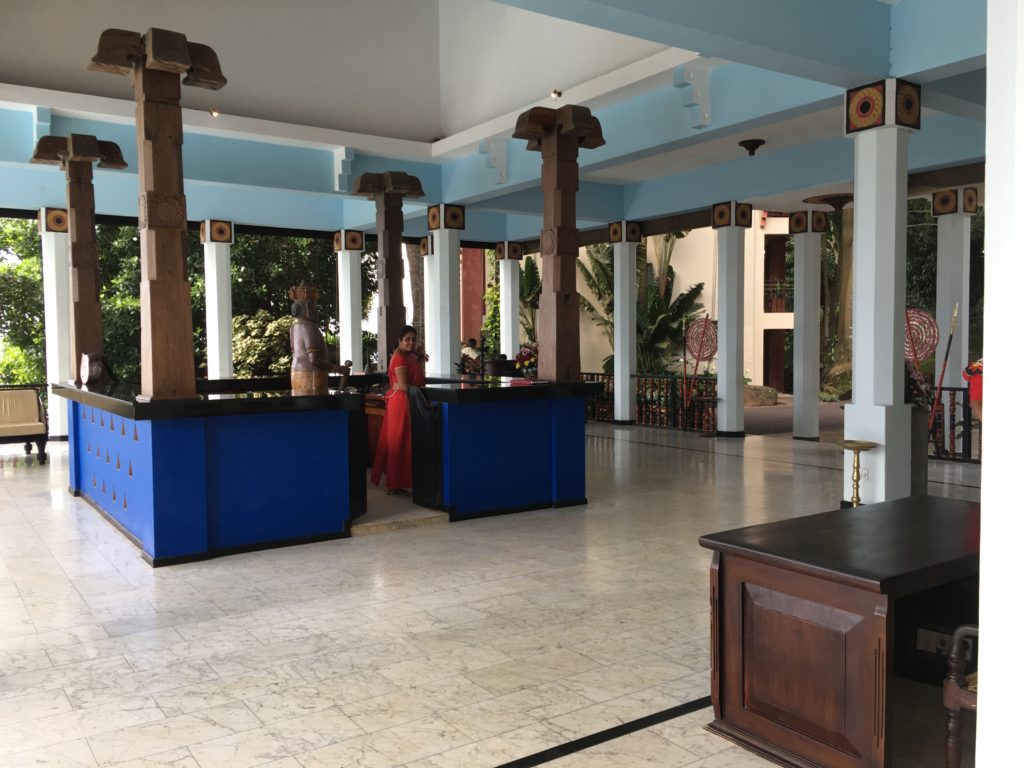
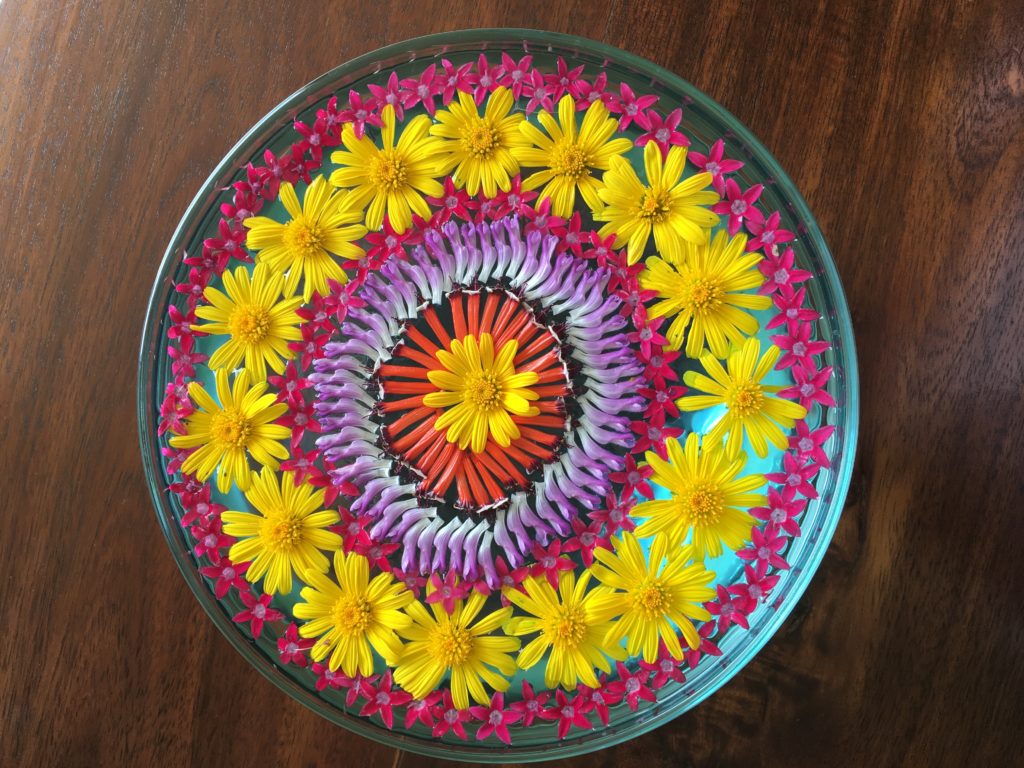
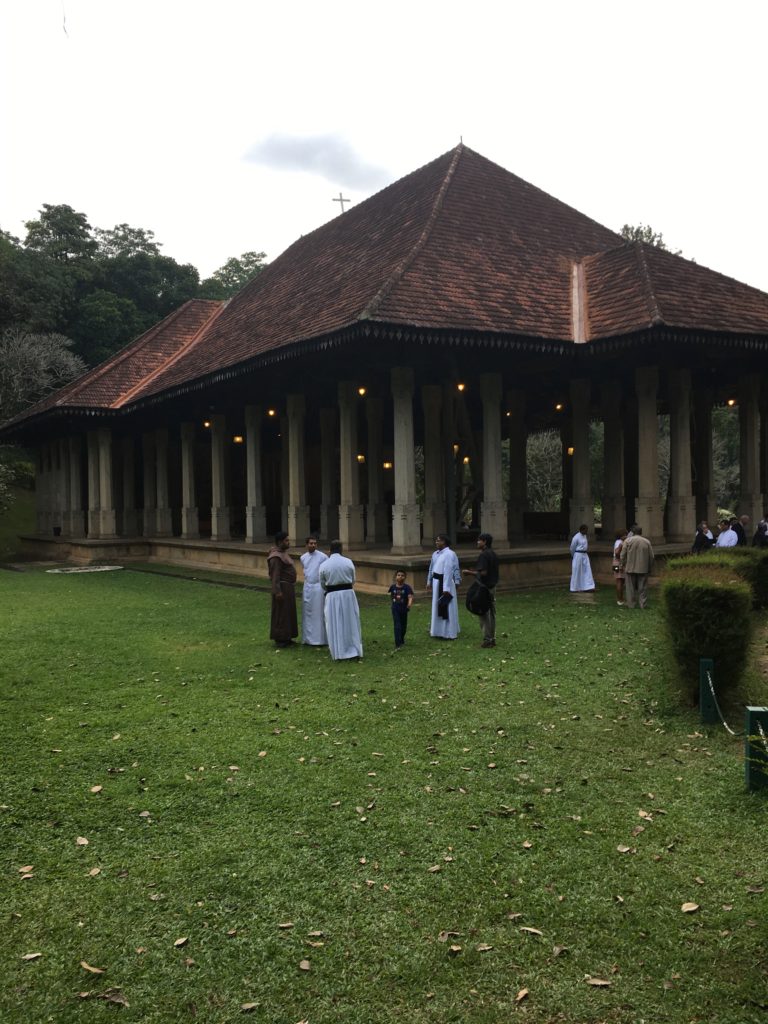
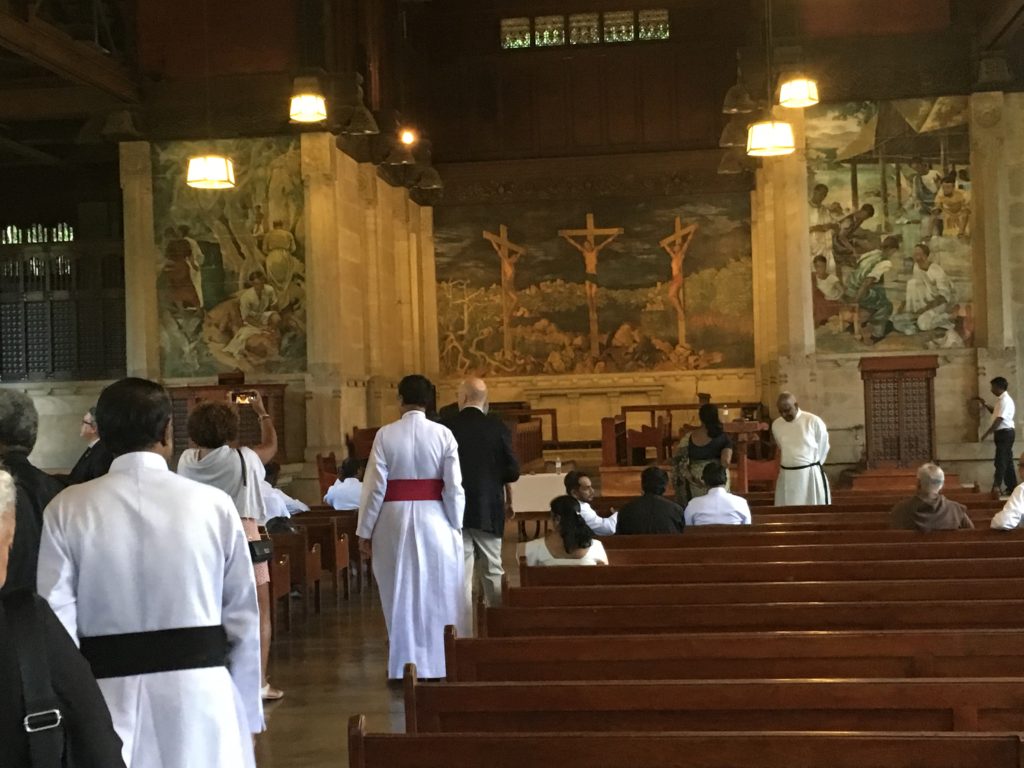
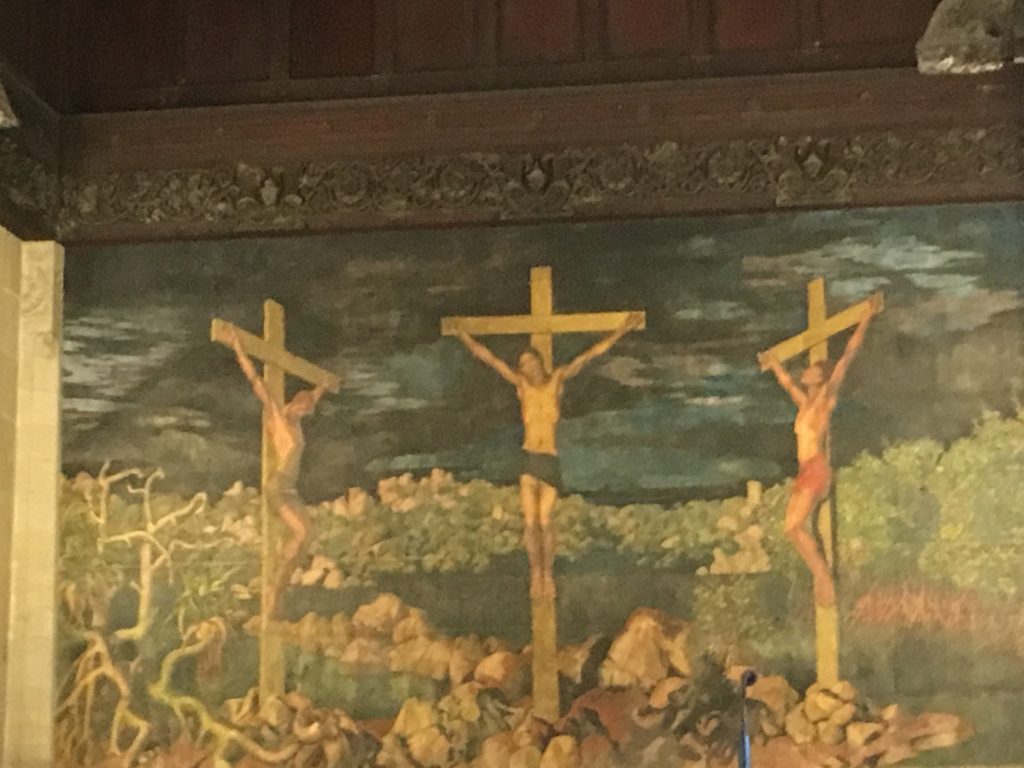
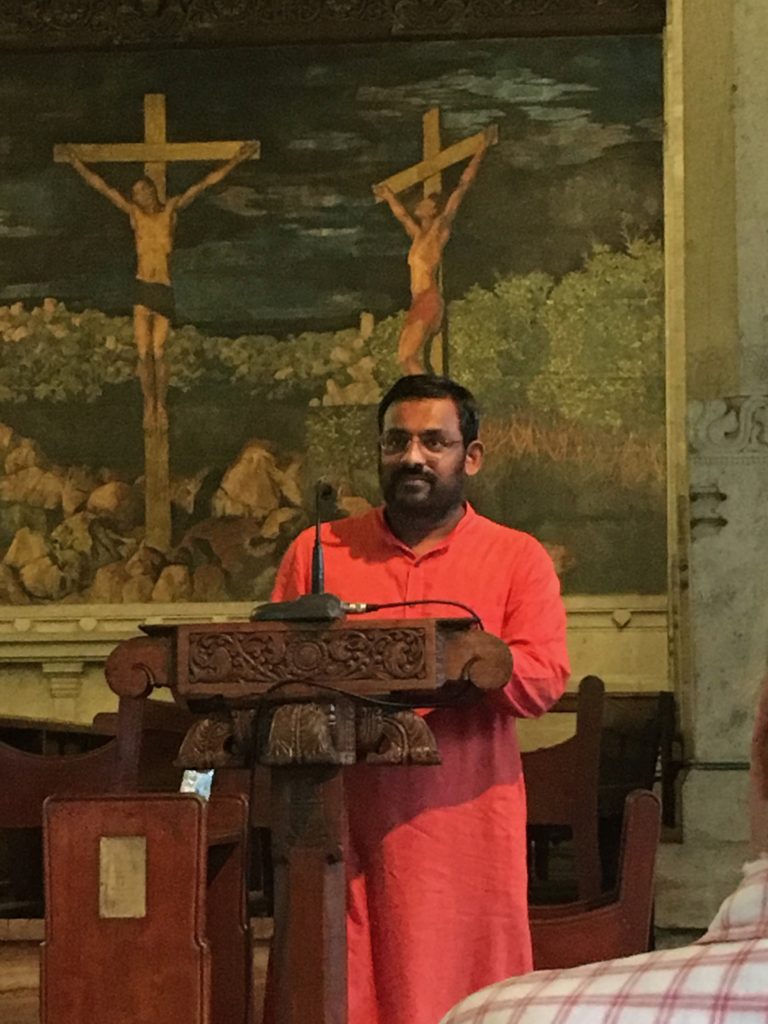
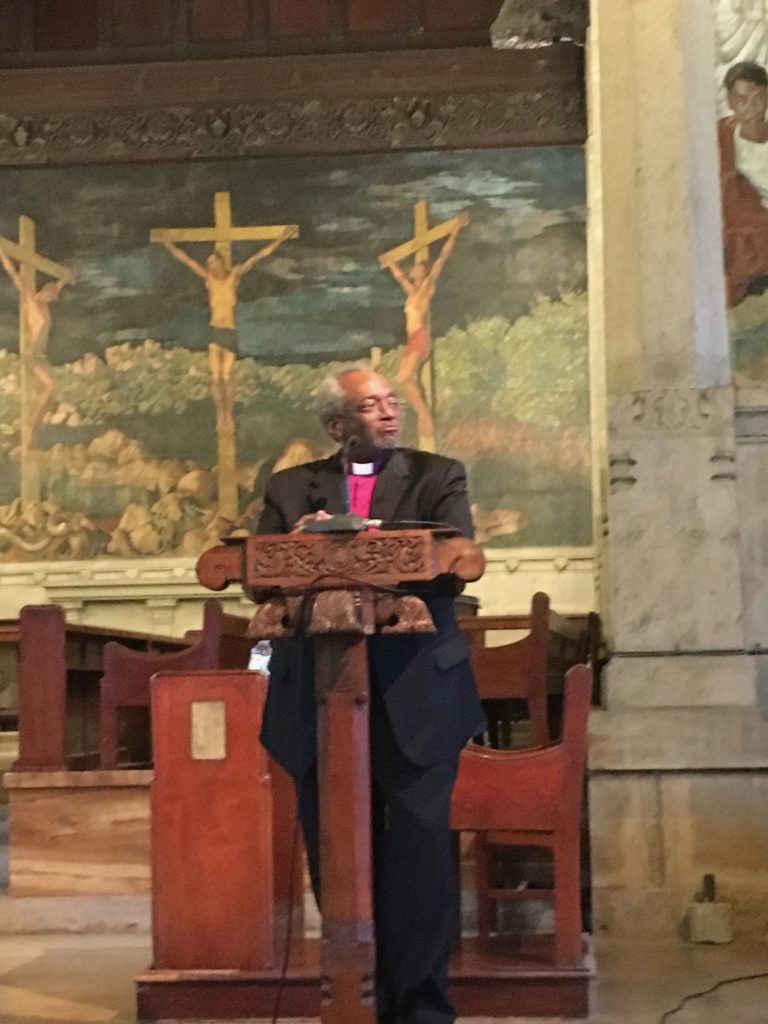
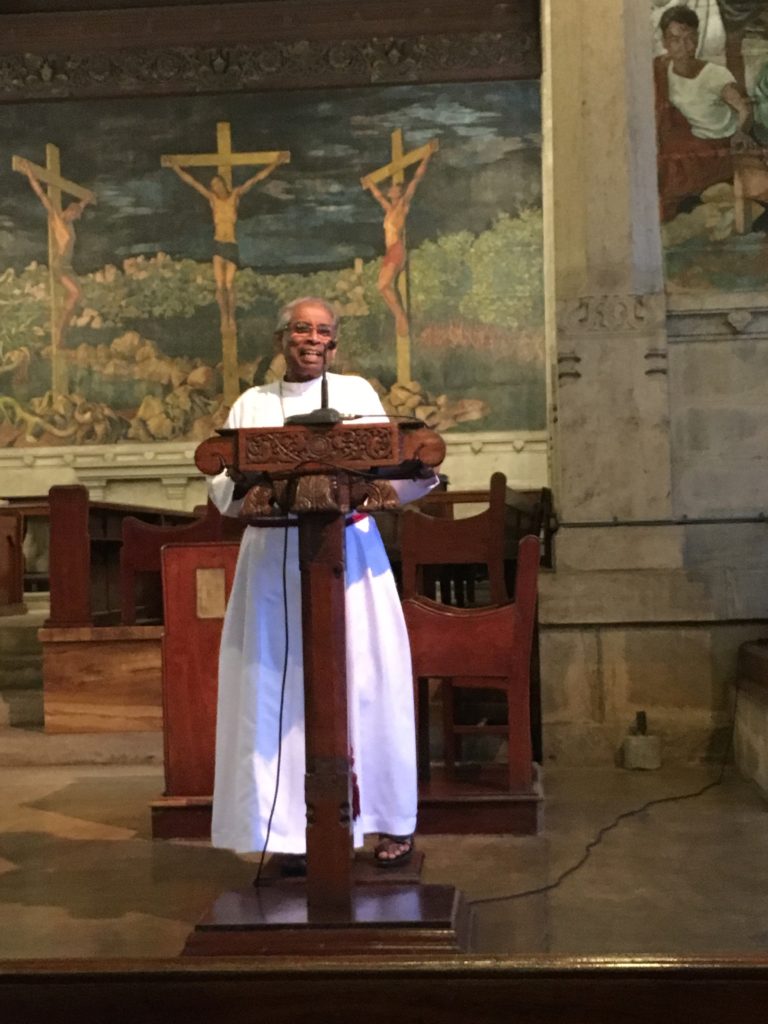
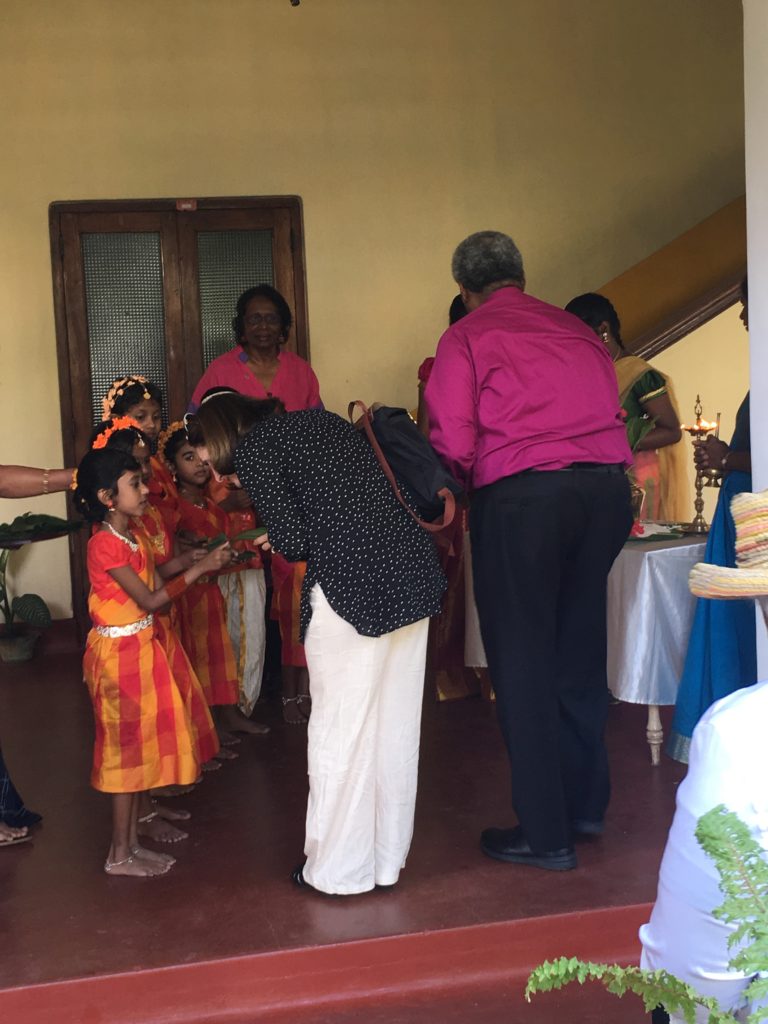
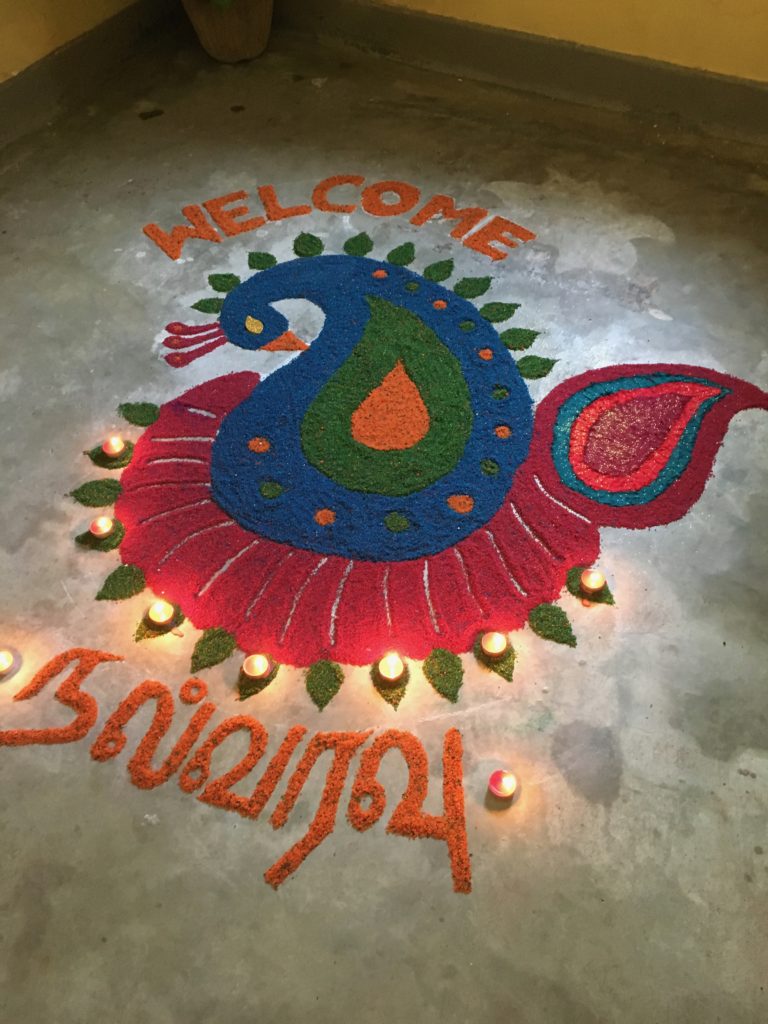
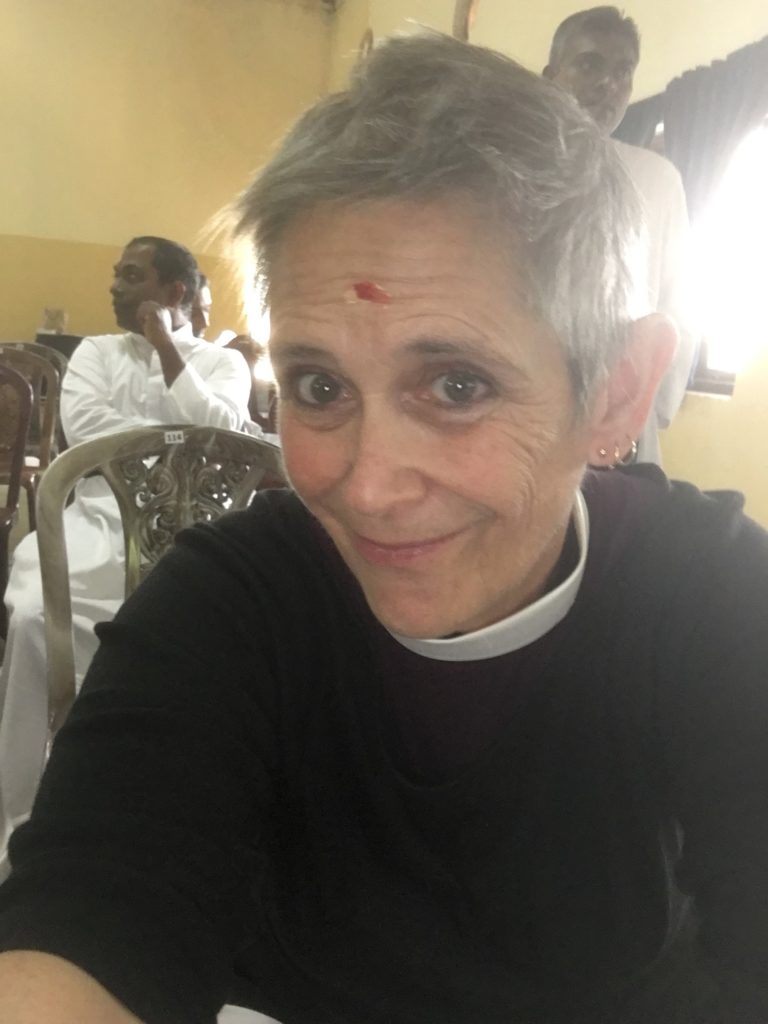
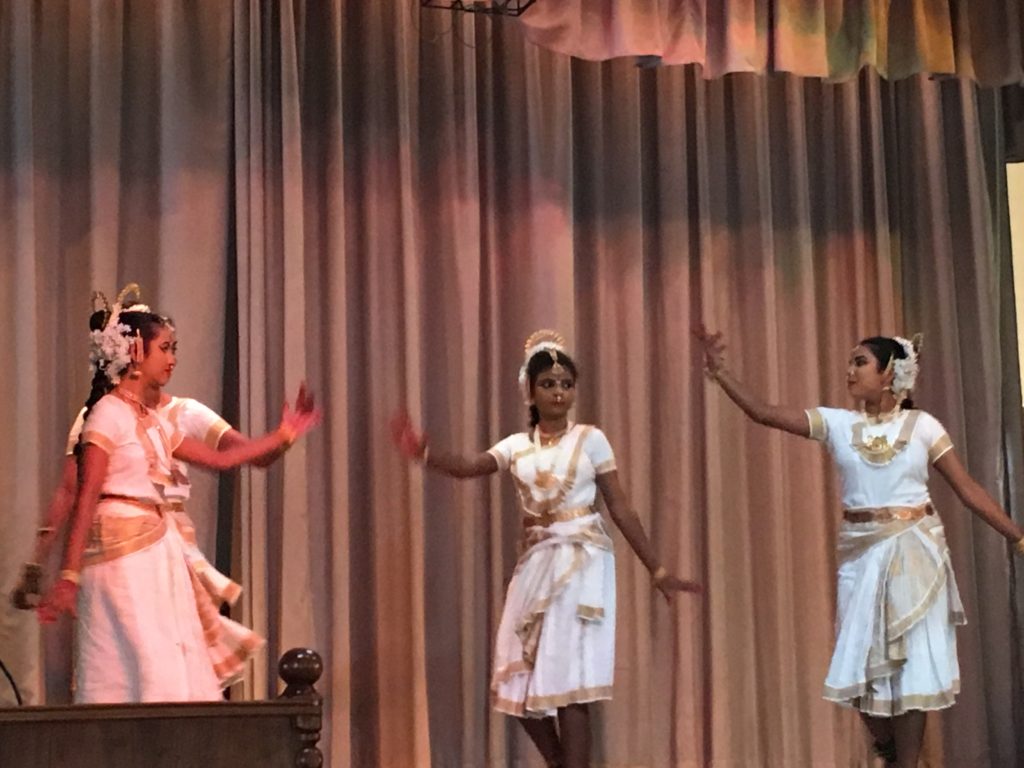
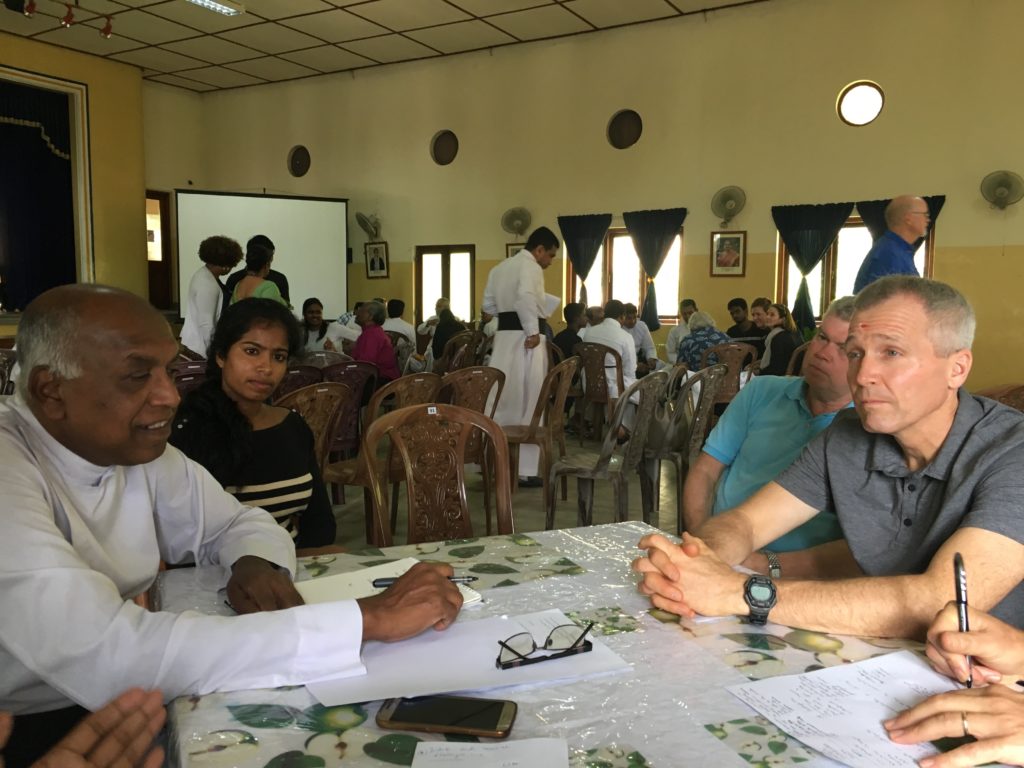
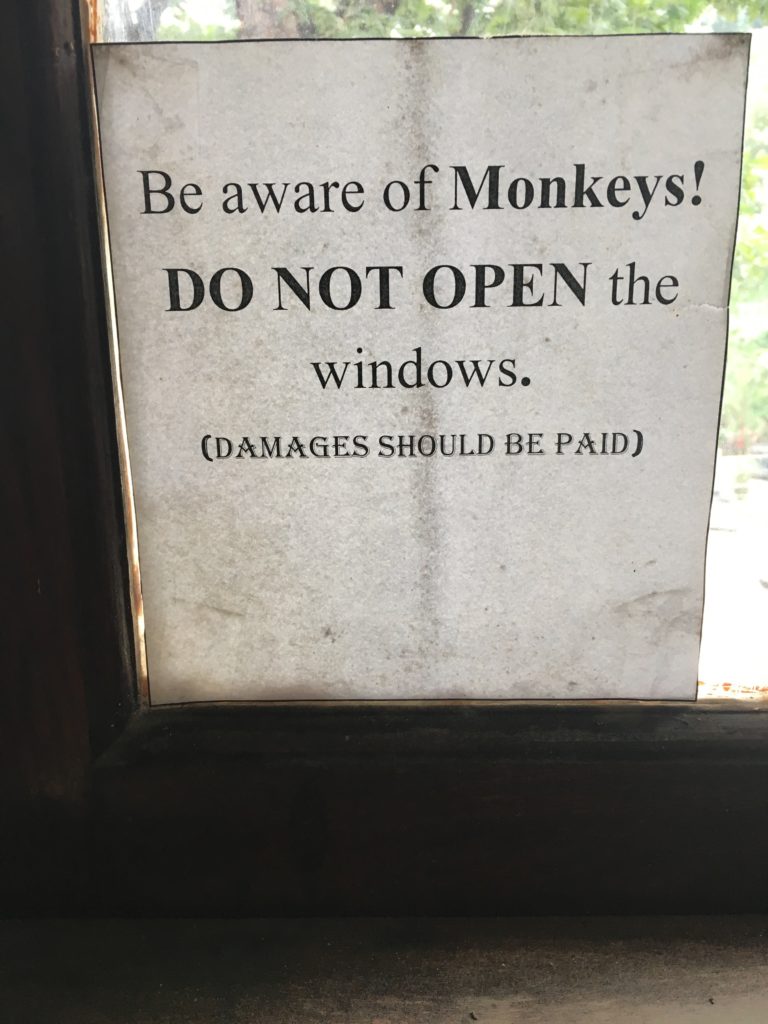
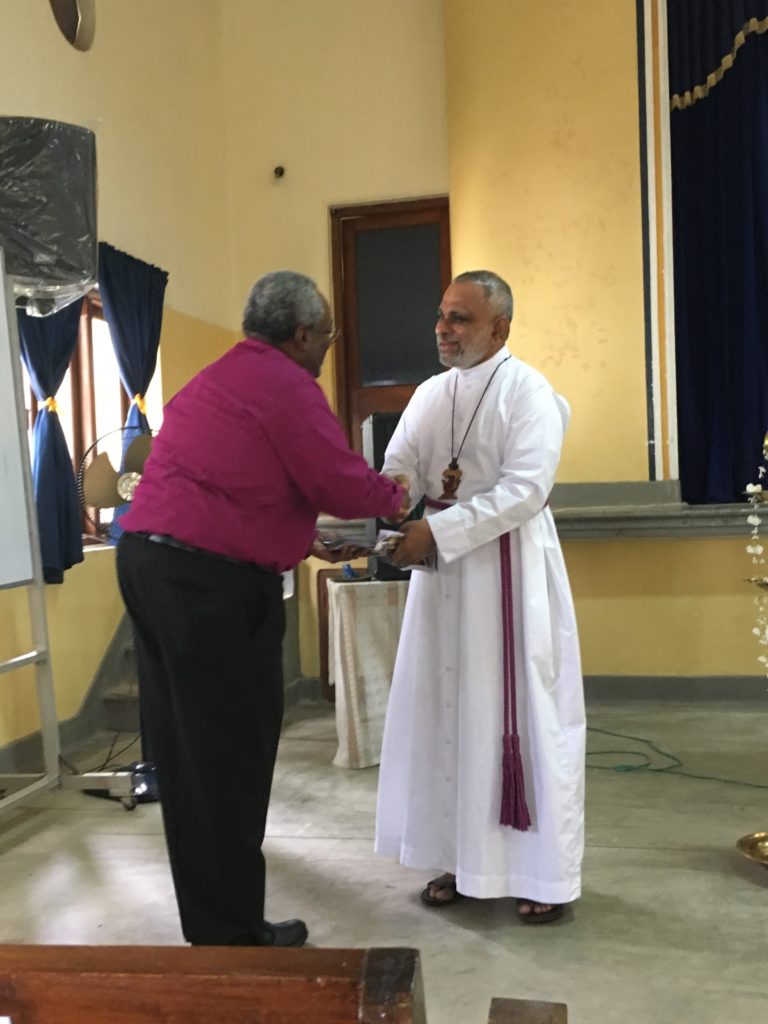
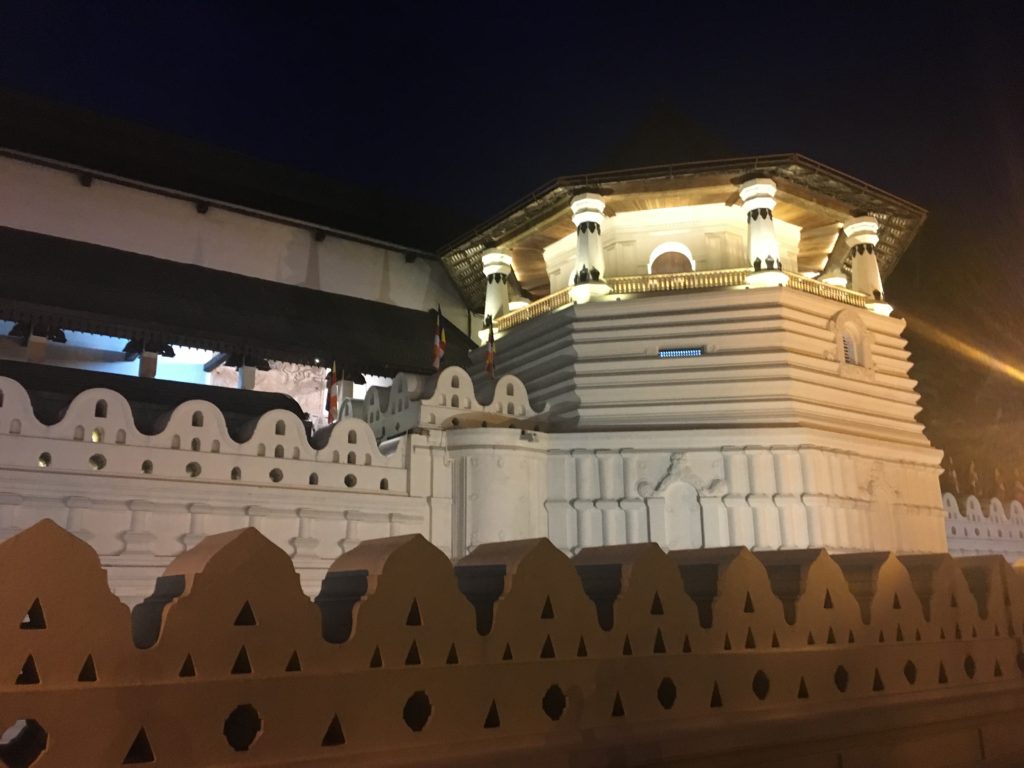
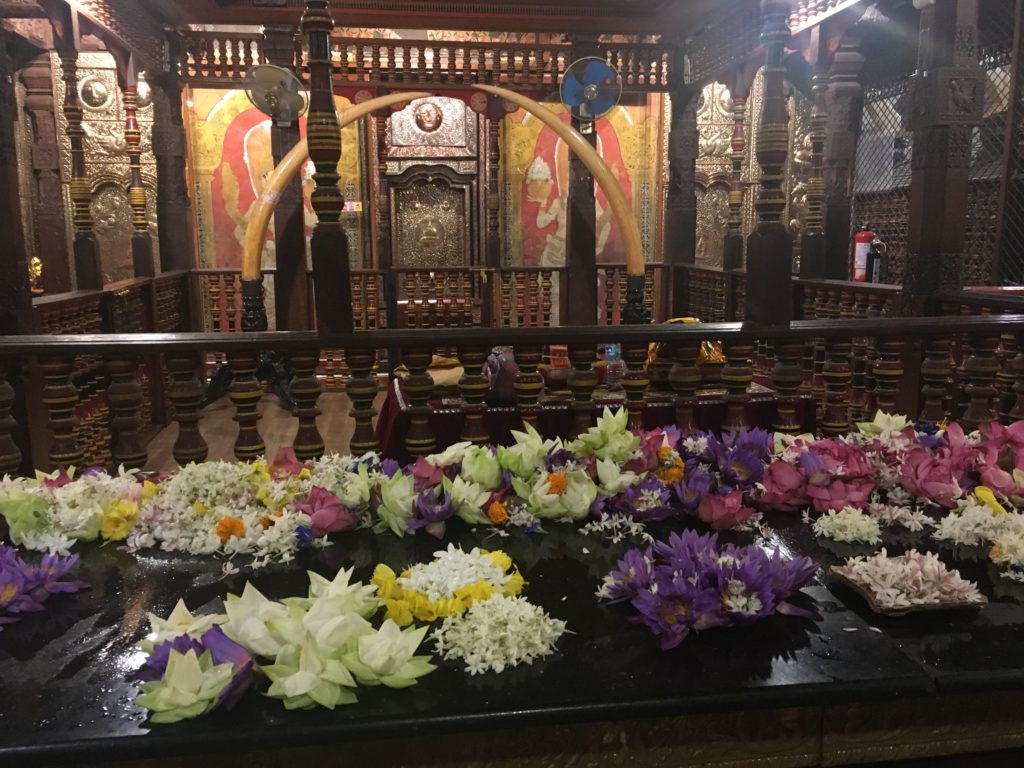
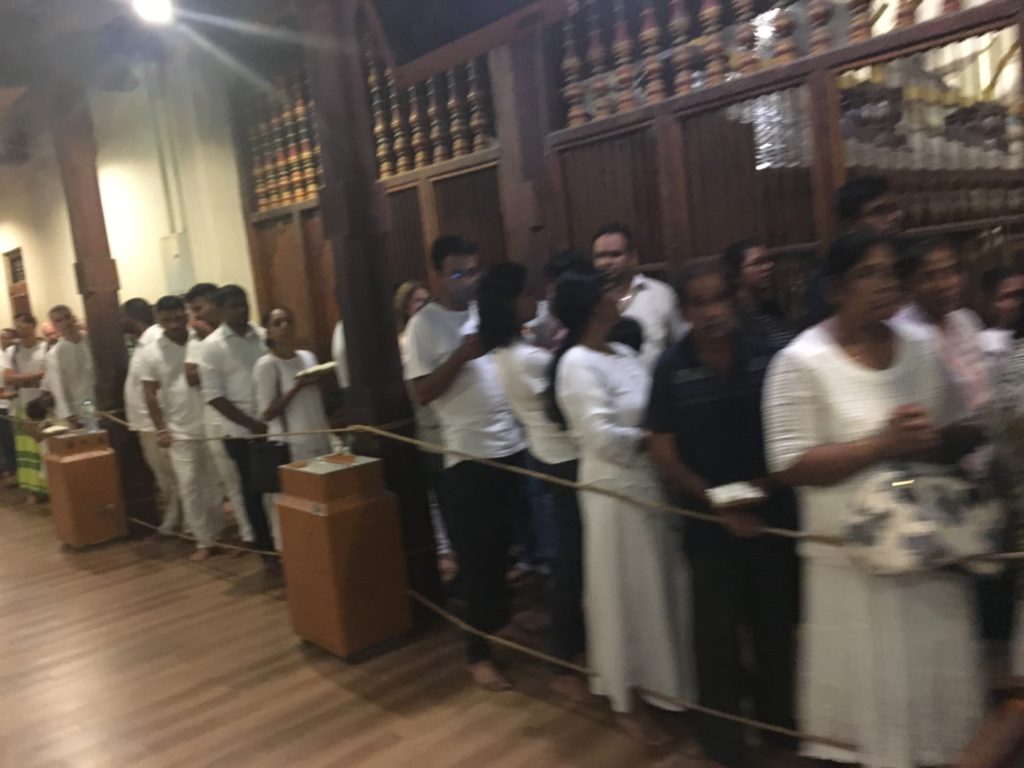
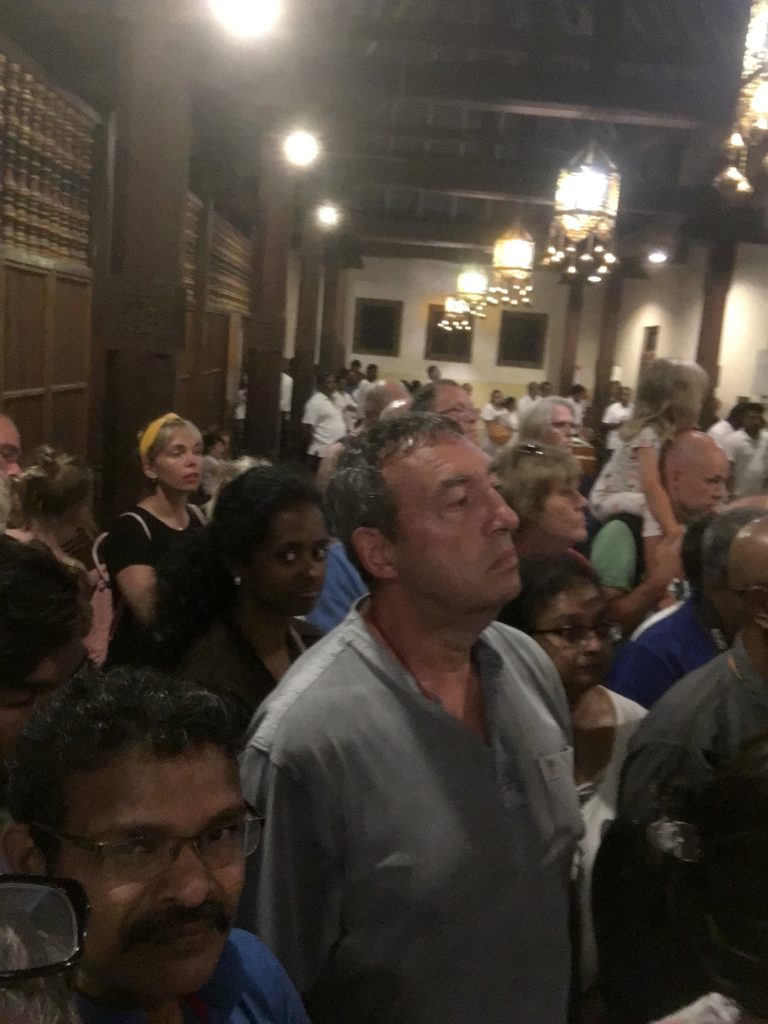
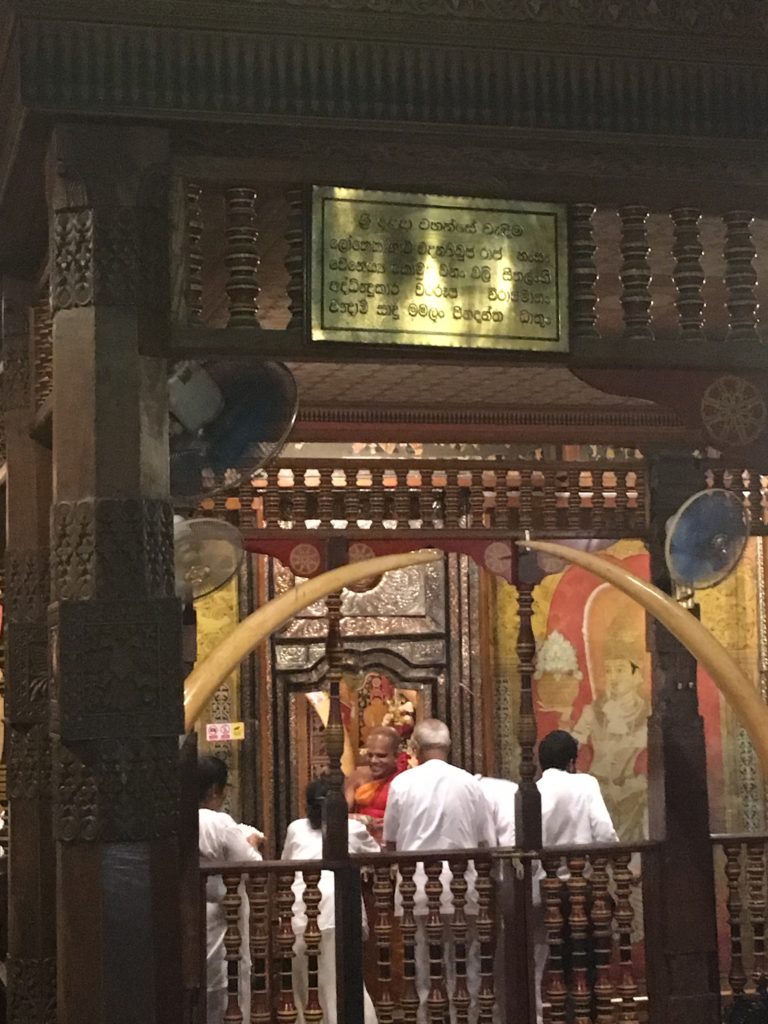
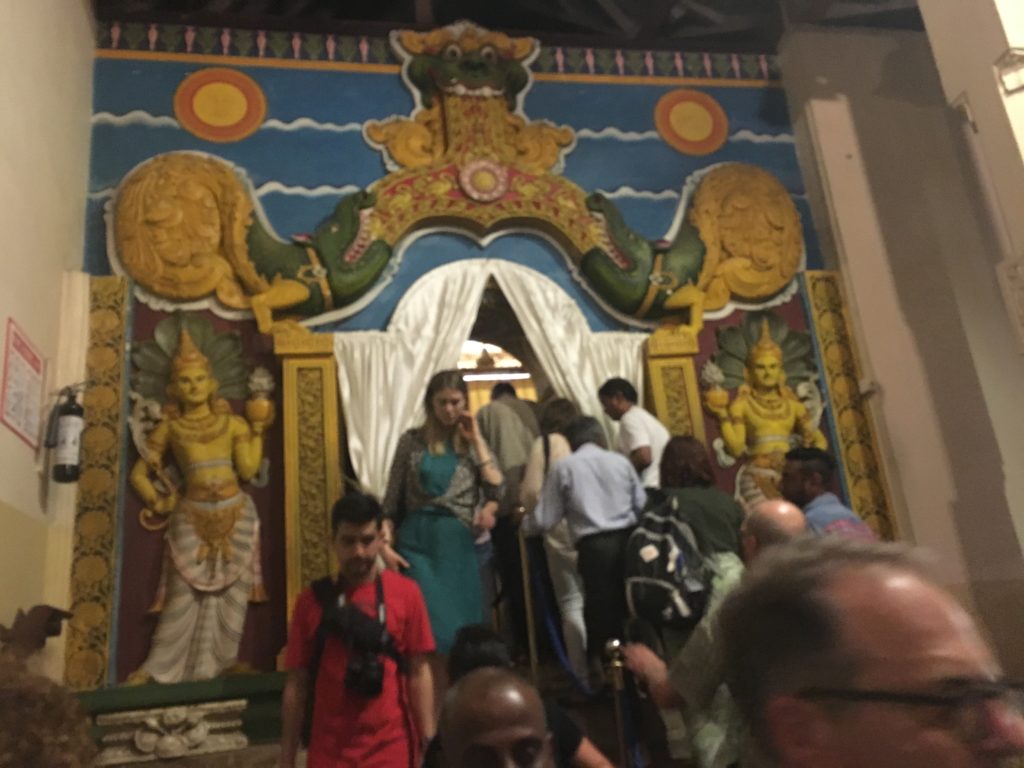
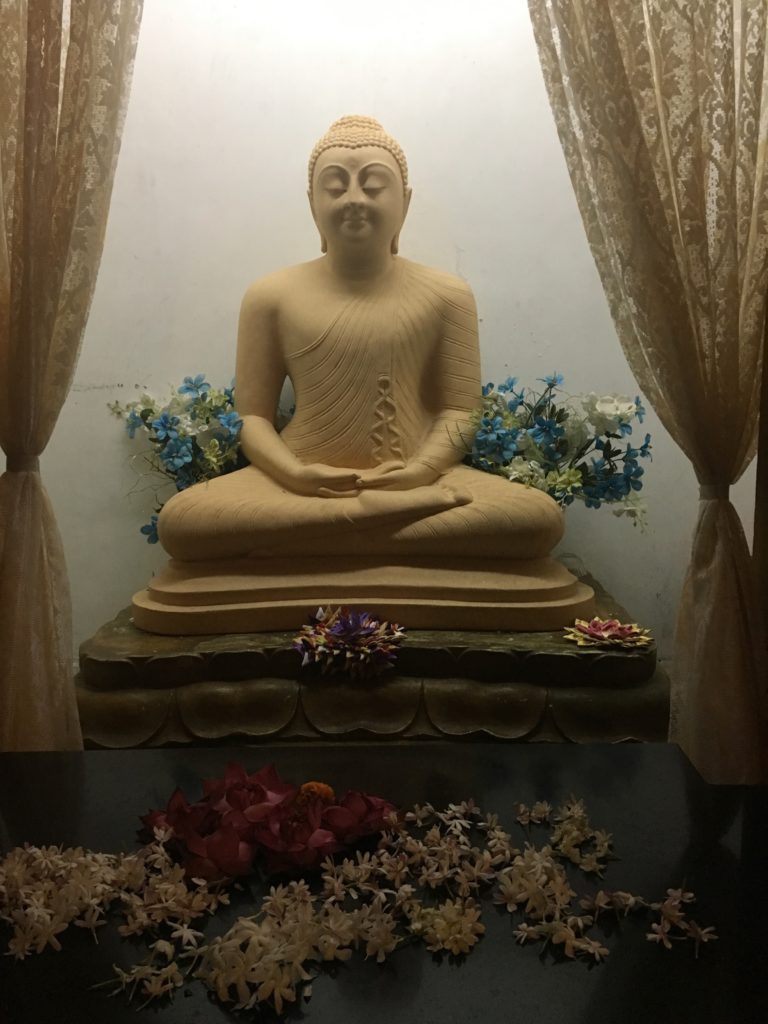
Thursday 21 November 2019
Cinnamon Lodge
Habarana
We arrived here after a long drive- three hours or so- from Kandy. The ride gave us all a chance to catch up on a little sleep and, in the moments that we were awake, we checked out the landscape outside, watching the transition from city to country, and from an area of commerce and bustling activity to a largely rural, lush and economically poor environment.
After settling into the hotel, we broke into two groups. We had the option of going on a Jeep Safari or climbing Sigiriya (Lion Rock) to see an ancient fortress built on the top of a mountain pillar of granite in Dambulla. I had originally signed up for the safari, but not one to let a fun hike pass me by, I had a change of heart and changed into my climbing gear.
We had a guide to hike with us and give us the history of Sigiriya which was, first, the mountain top palace of a Sri Lankan King, King Kashypapa, who selected the site for his capital in the 5th century . The ornate palace included two moats at the bottom (the outer one filled with quicksand, the inner one filled with crocodiles), water gardens and gravity fed fountains, reception halls, dance halls, bathing pools for his hundreds of concubines, a stone throne overlooking the valley, and myriad other adornments that one can only imagine in its day. A special feature of the splendor of the palace that remains are the frescos that are painted in caves on the side of the rock. Following the King’s death, this amazing place became a Buddhist monastery, and then fell to ruin, only to be re-discovered and renovated as a UNESCO World Heritage site in the 1930s. For hundreds of years, as the jungle grew up around the vacated monastery, this incredible site lay hidden from view. (When you get a look at it in the accompanying post with photographs, you will wonder how this 200 meter (660 ft) high hunk of granite could go undetected for so long…
Our party included 5 intrepid hikers who were willing to ascend the more than 1200 steps to the top… and a guide who offered us the history of the place and took more than a few photos for us.
We had many, many photos at the top of the hike, several along the way with the bands of monkeys and dogs that accompanied us, and we waited, hushed by the wonder of God’s creation watching the sunset from this sky high perch. It was a trip that was well worth the effort that it took to reach the peak. Out trip back down was quick, as we raced against the setting sun and the lengthening shadows, meeting a snake charmer with giant boa on the way, and several craftsmen selling trinkets made of wood.
Arriving back at the hotel we got to hear from the rest of the party and learned about their fantastic safari amid hundreds of elephants.
Friday 22 November 2019
Cinnamon Lodge
Habarana
As I wake this morning, it is raining- a soft but persistent, and very warm rain. It started last night with a great thunderstorm around 9 PM as we were finishing dinner and, my guess is that it has continued all night. We are between the monsoon season for the western, southern and central region (May-July) and early for monsoon season of the north and east (Dec-Jan) so I’m not sure what is going on… perhaps it is just raining, lol.
We had a very long day yesterday driving far, far north from our position in the central region of the island to the village of Killinochchi near the Jaffna peninsula. We were there to learn about the micro-loan enterprise that is a partnership between Episcopal Relief & Development, the Sri Lankan government, and a group called ECLOF- the Ecumenical Church Loan Fund.
The premise of sponsored micro-loans is to assist in the rebuilding of small industry and personal livelihood following the tsunami of 2004 and the twenty-five year civil war which left many families in extreme poverty. Many of the women of the villages lost their husband soldiers and became war widows; they had to find ways to support their families with few resources. This partnership between ERD,ECLOF and the Sri Lankan government has been developed to counteract the opportunistic commercial lending programs that sprang up in the time of need and that took advantage of the vulnerable and needy; interest rates for these opportunistic loans was often 100% and the means of extracting payment were cruel and intimidating. ECLOF and the Episcopal Relief and Development were able to offer loans at a more gracious rate for the war survivors.
We were greeted in a formal ceremony at a Community Center by 50 women wearing beautiful saris and waiting to adorn us with woven garlands, bindis, handcrafted straw hats and baskets of flowers. The program included lunch (curries, rice, noodles and small whole fried fish), two traditional dances, speeches from program organizers that were translated into Tamil, one of the two dominant languages in Sri Lanka. The highlight of the entire day was a demonstration of a loan society meeting; 14 women sat in a circle on the floor and showed us how they operate their loan society. Rather than making individual loans to women one at a time, the micro-loan project dispenses seed money to small groups of women who hold each other accountable for their own projects and share of the money. These groups elect leadership- a President, Secretary, and Treasurer- and at each meeting the women make contributions from their businesses to the common treasury of their group and can also apply for loans from the same treasury. The business is conducted by consensus and voting. The circle that we observed had women paying their 300 rupee contribution to the pot and then two women applying for loans- one to buy materials for her daughter’s education and another to buy agricultural supplies for her business. The group decided to fund the agricultural request; the woman requesting educational materials withdrew her request for the time being seeing that the other application was more urgent and that the money available for lending was better spent on agricultural goods at that time. The meeting was serious, efficient and tightly run. It was thrilling to see women empowered in this way. When we got to ask questions about the loan circle and what it was like to be empowered in this way (especially wondering about the various husbands’ reactions to this empowerment of their wives,) the women laughed and said “they can’t stop us!” I asked if the group met socially as well as for their monthly business meetings and was told that since they were from the same village, that they did gather for birthdays and other occasions. I thought about different book clubs in the US that I have known women to belong to that is often less about discussing the book… and more about conversation, wine and the nurturing of friendships.
Back to the hotel for dinner and bed (did I mention that accompanying the giant buffet each night the hotel has an entire refrigerated room full of desserts from which to choose?!?).
Saturday
23 November 2019
Habarana
Yesterday may have been the highlight of the trip for me, so far.
We traveled to the Oppuravillam Center for Peace and Justice to learn about reconciliation work that is taking place in the borderlands of the civil war in Sri Lanka. We drove about 2.5 hours to reach a small village in the north that is in “no man’s land-“ a zone about 10 KM Wide
That was vacated during the decades of fighting and is now slowly becoming repopulated. In the center of this zone, Episcopal Relief and Development supports several efforts of reconciliation that extend into the lives of the villagers in this torn and saddened place.
The Oppuravillam Center for Peace and Justice ruins a preschool that brings students and families from the two opposing sides in the war- the rebel Tamils and the Sinhalese- together to learn and form relationships based in trust and common experience. We were greeted by two, three and four year-old students and their parents in a ceremony that included the lighting of an oil lamp, bestowing us with flower garlands and bouquets, and a charming dance performed by the children. We learned how this tri-lingual school not only educates the children in ways beyond what their local community can do, but how the parents have made connections across tense ethnic boundaries. We heard from the parents of about 15 of the school’s 24 students and had a chance to ask questions. After a delicious luncheon, Bishop Curry, Bishop Ed and Sharon participated in a tree planting ceremony before we bid them farewell. (Bishop Curry’s calendar required him to leave us at this juncture; our pilgrimage will continue for four more days).
After lunch, we walked down a grass covered lane to visit with one woman at her home- she has a chicken farm- and to hear about her life in the village. She greeted us at the door of her 12ftX12 ft. Cinderblock dwelling and politely told us about her daily routine as a farmer. Her husband works in the village at one of the shops. We were led down the lane to a small Hindu temple and were invited to remove our shoes and sit on the grass mat in the portico of the temple with other women and children while the (male) elder of the group offered incense and prayers and a young woman chanted. We were marked with bindi, offered the smoke of incense to purify us, and fed congee (sweetened sticky rice with sugar and nuts) on banana leaves, as an act of thanksgiving and hospitality. It was so moving to worship in this tiny neighborhood temple and to share so intimately with the people. Following our time of worship, we remained seated in the temple and talked with 6 women who have been trained to serve as “befrienders” or counselors to those in the area who suffer from the after effects of war and the stress of living in poverty. Again, I was so moved to see women empowered to use their skills of leadership and their compassion for the healing of the nations.(Revelation 22:2). They spoke with hope for the future as their children played in their laps. It was a stunning moment.
We returned to the Center and the rest of us were asked to plant trees. We enjoyed tea (sweetened with brown sugar and milk) and cake and bananas, and made our goodbyes.
It was an amazing day, filled with color, music, children, the stuff of village life, worship and hope.
Rice paddies and street scenes
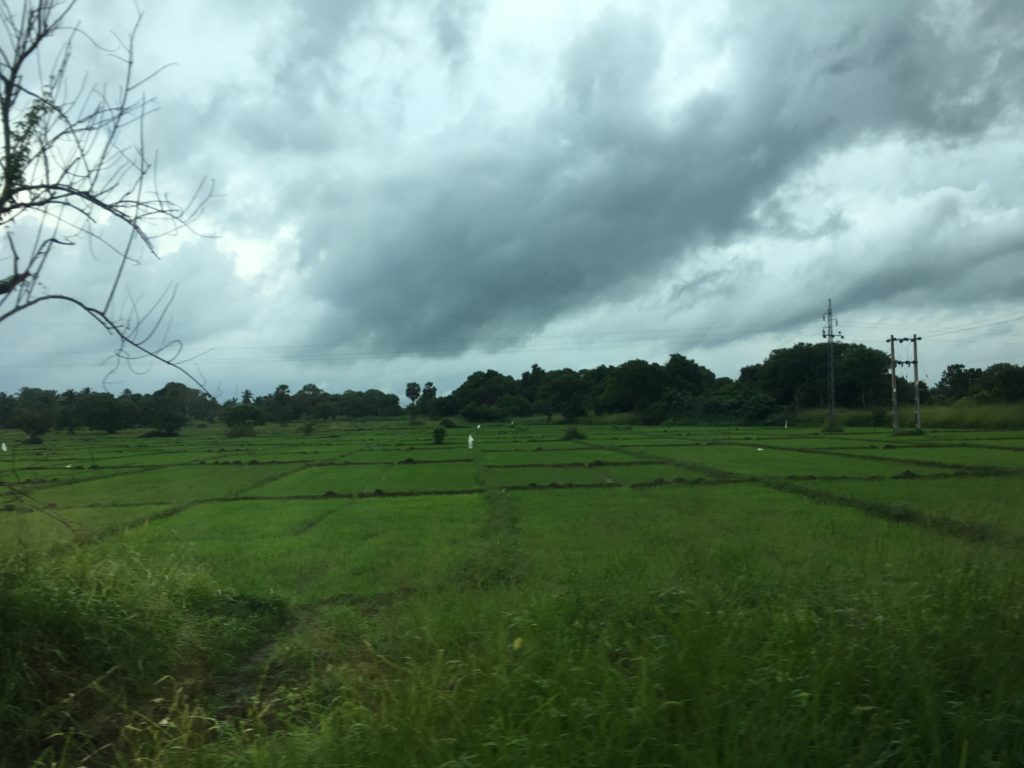
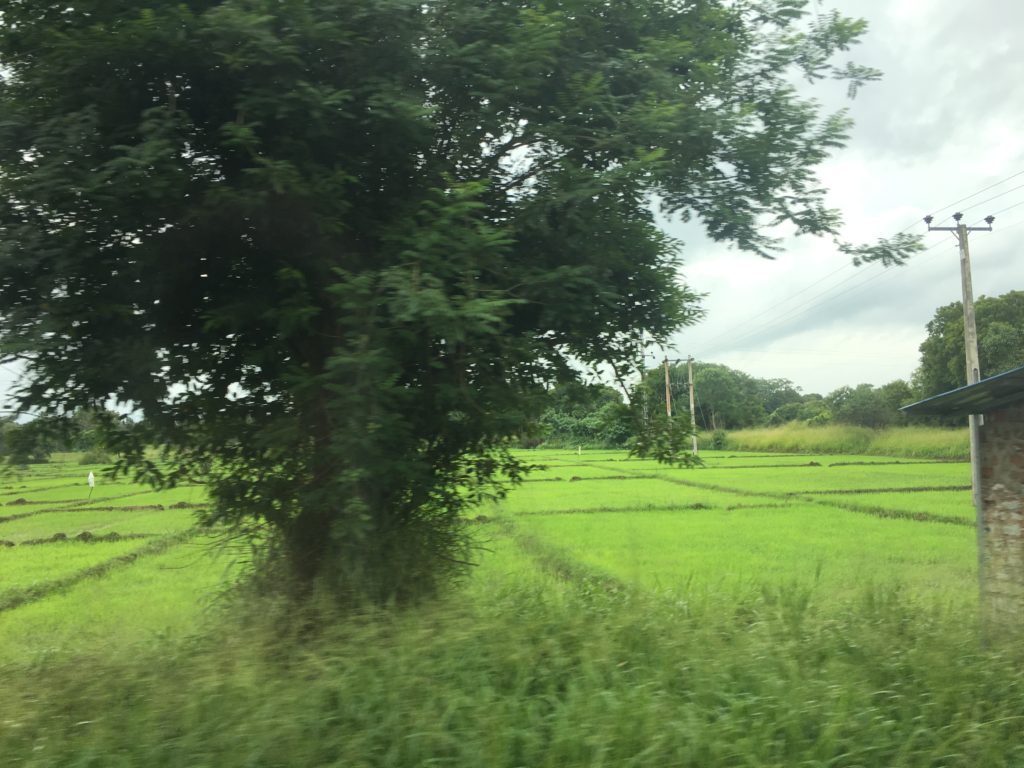
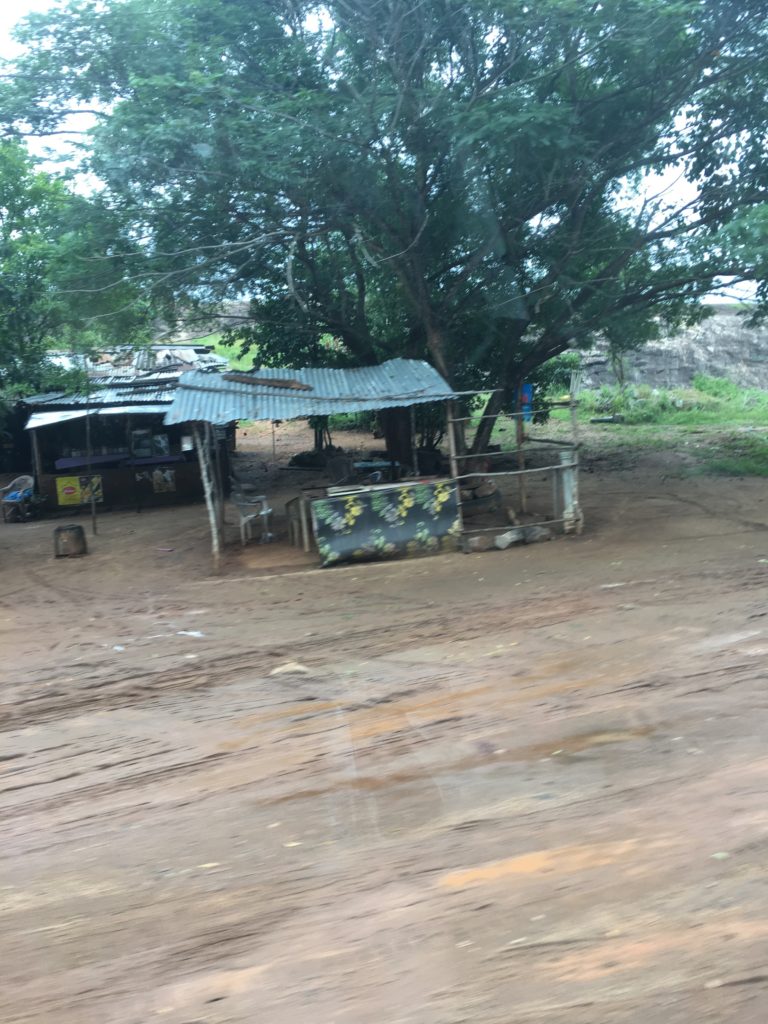
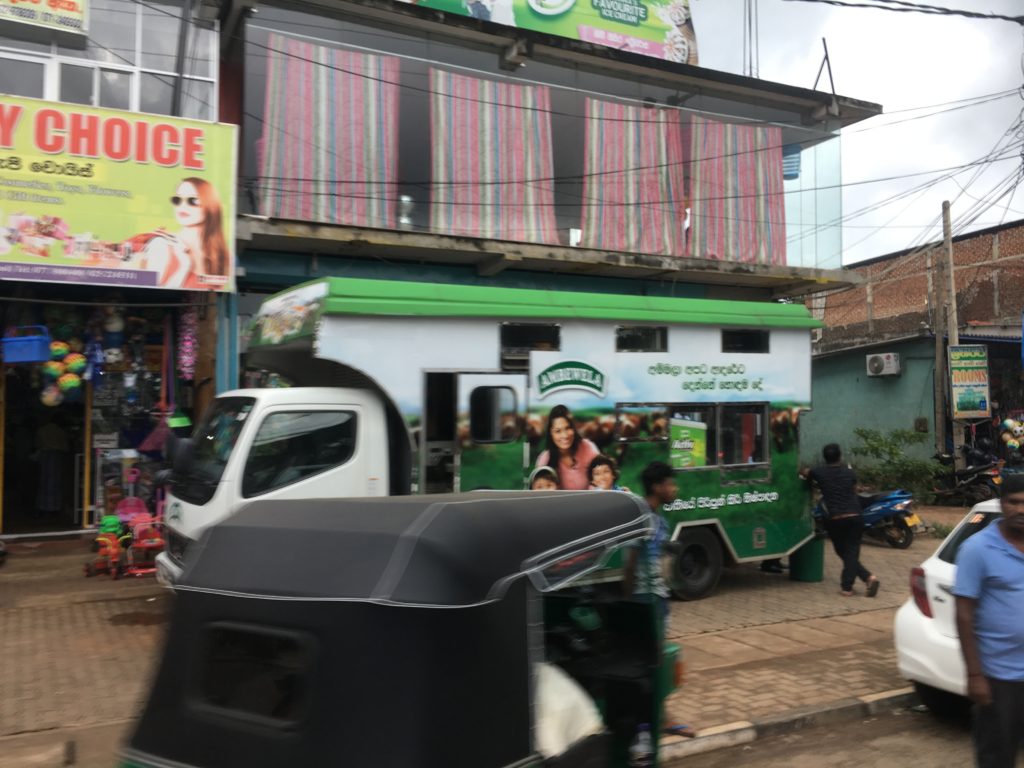
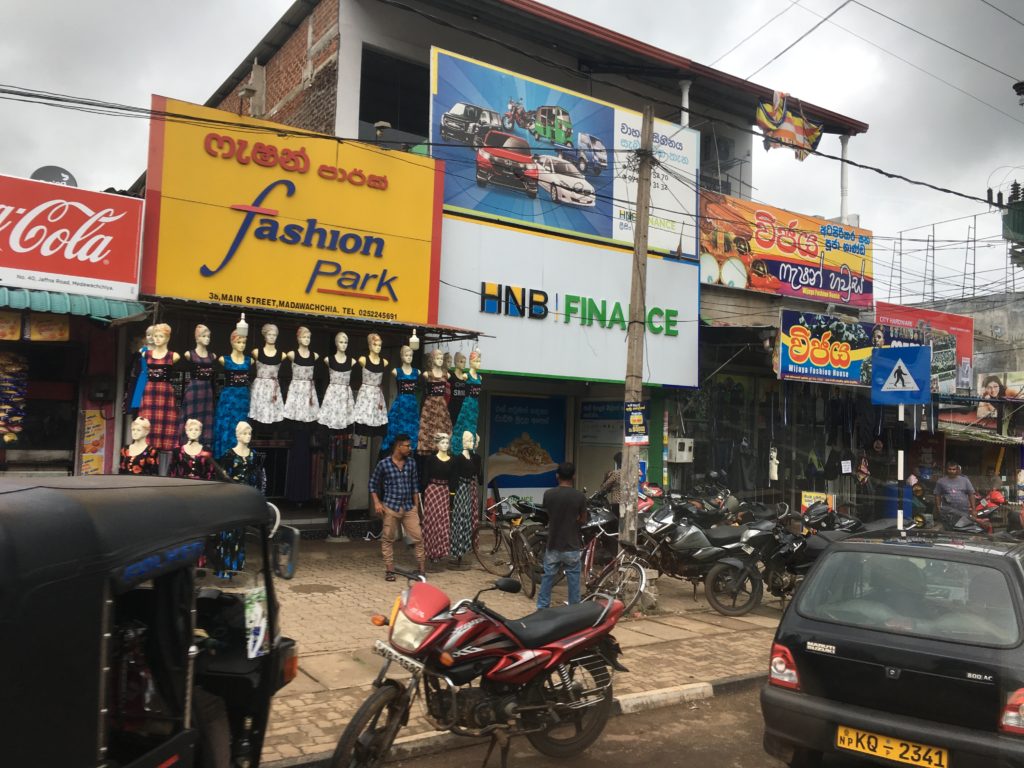
Hiking Sigiriya (Lion Rock)
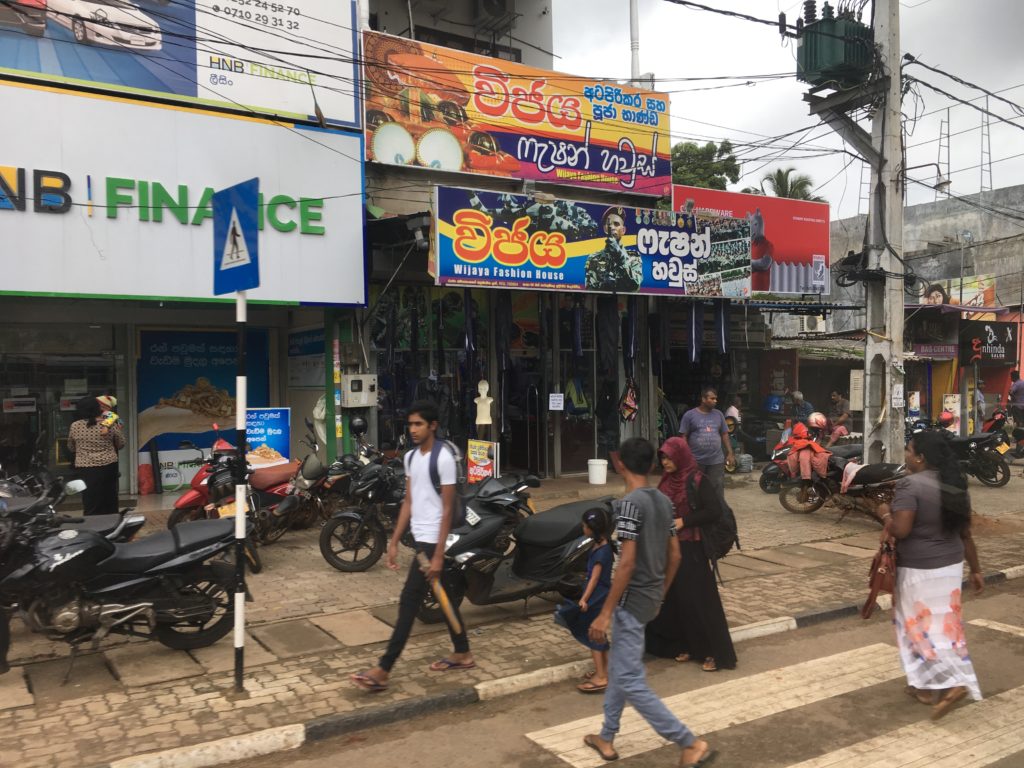
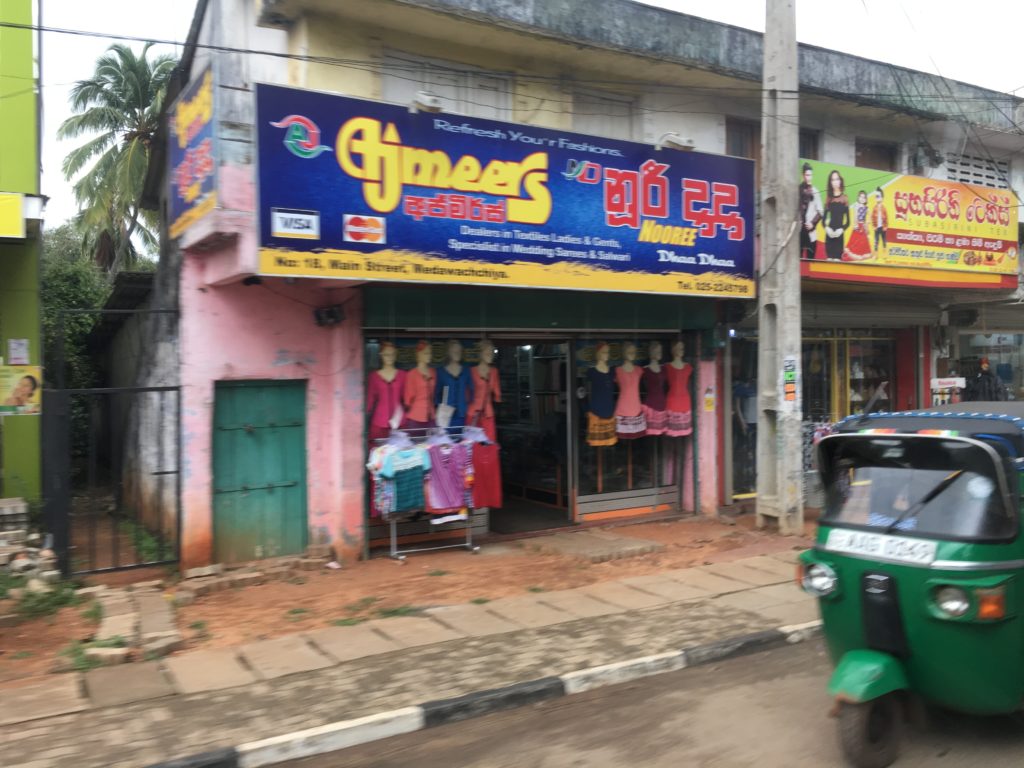
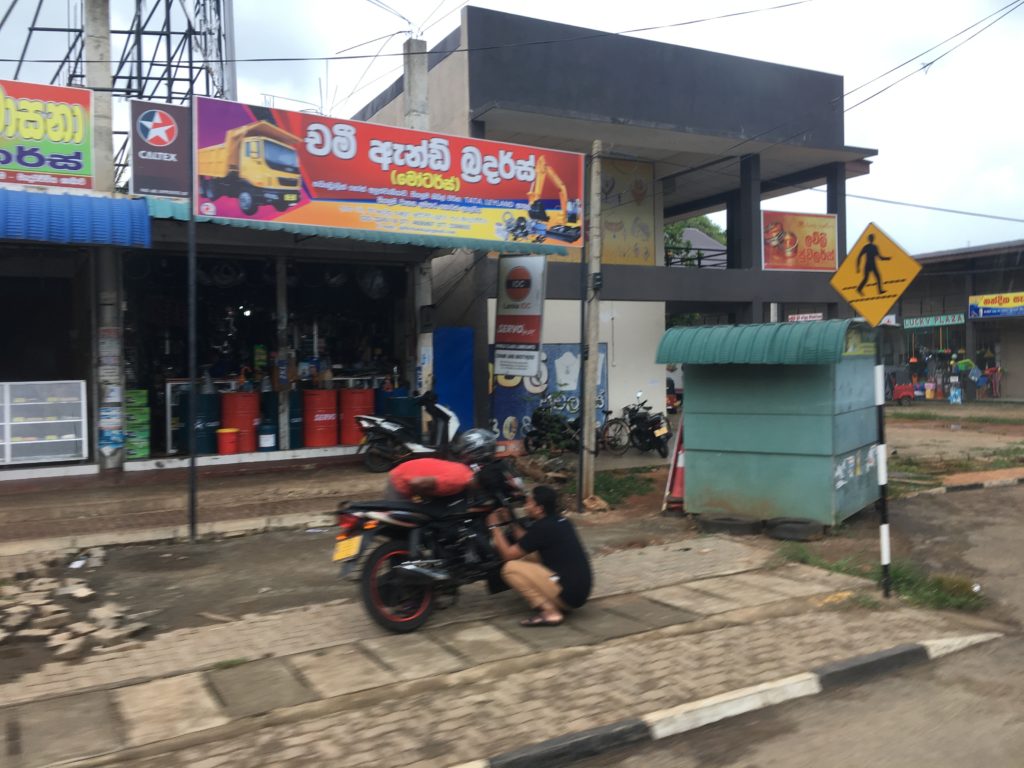
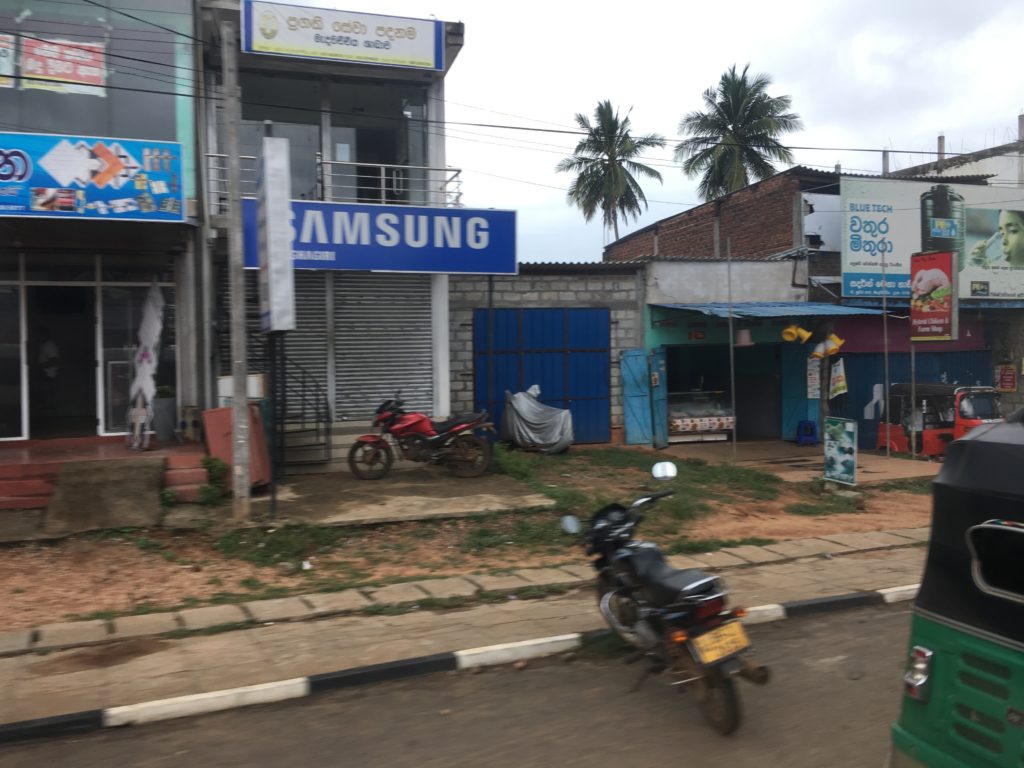
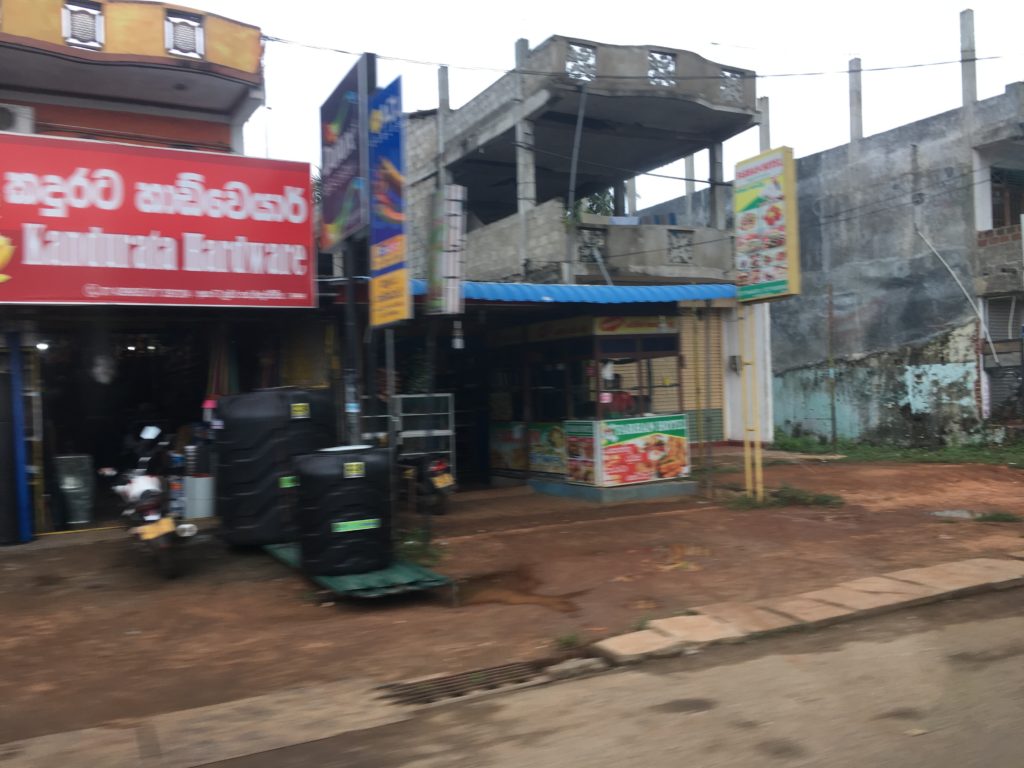
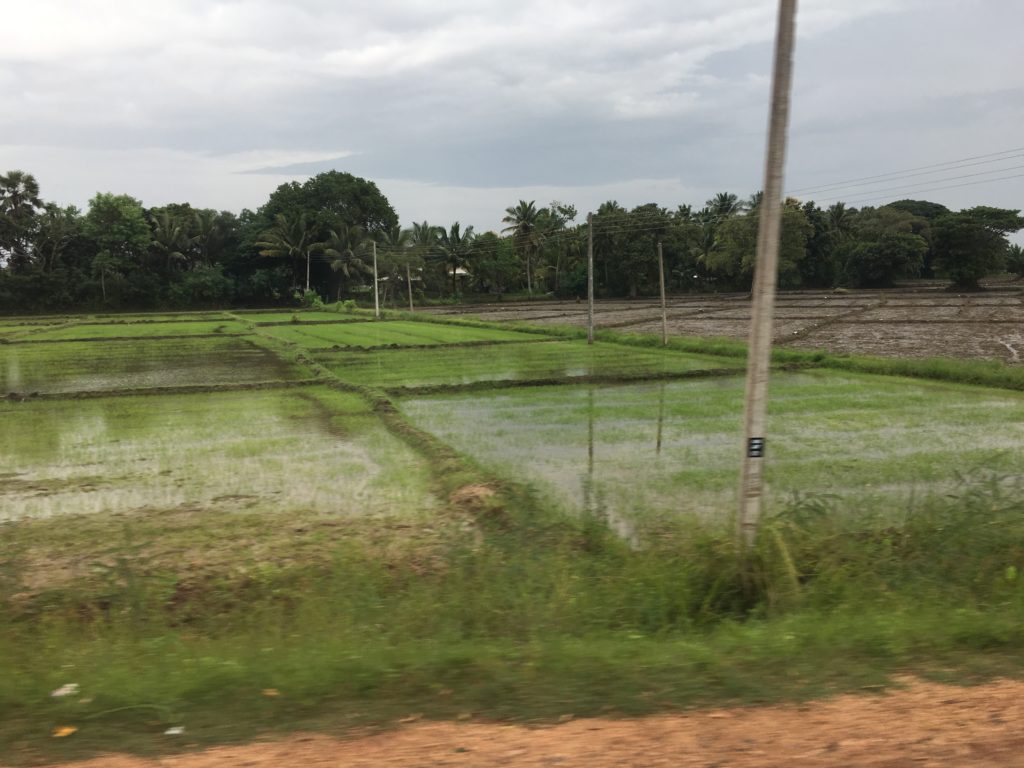
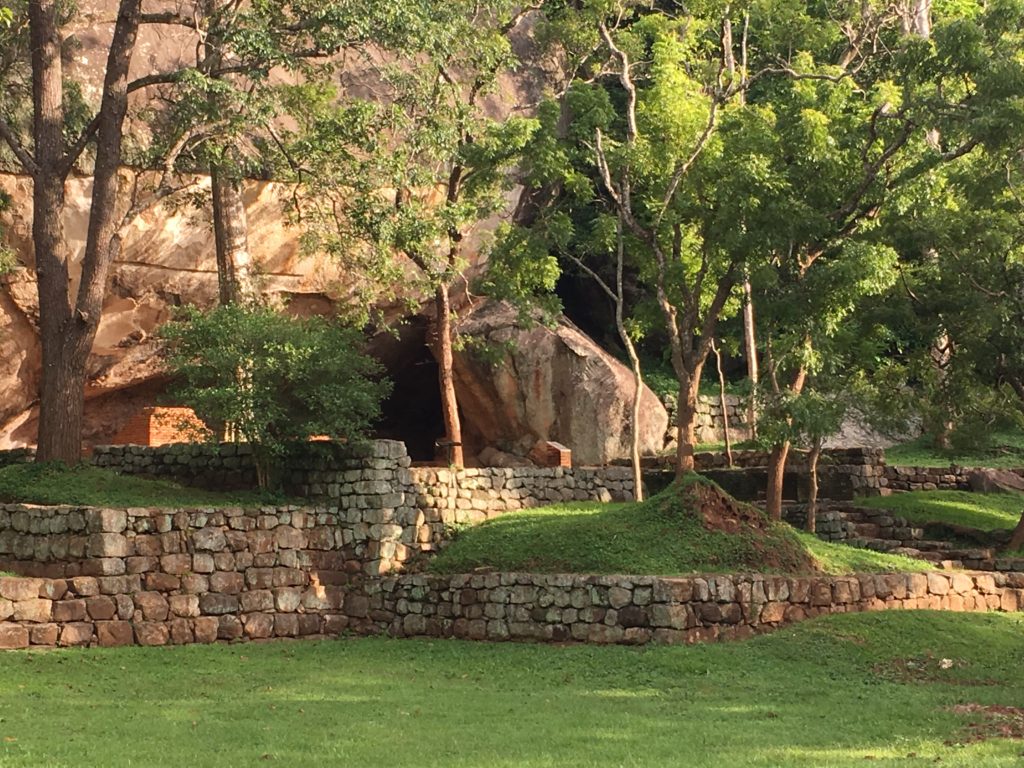
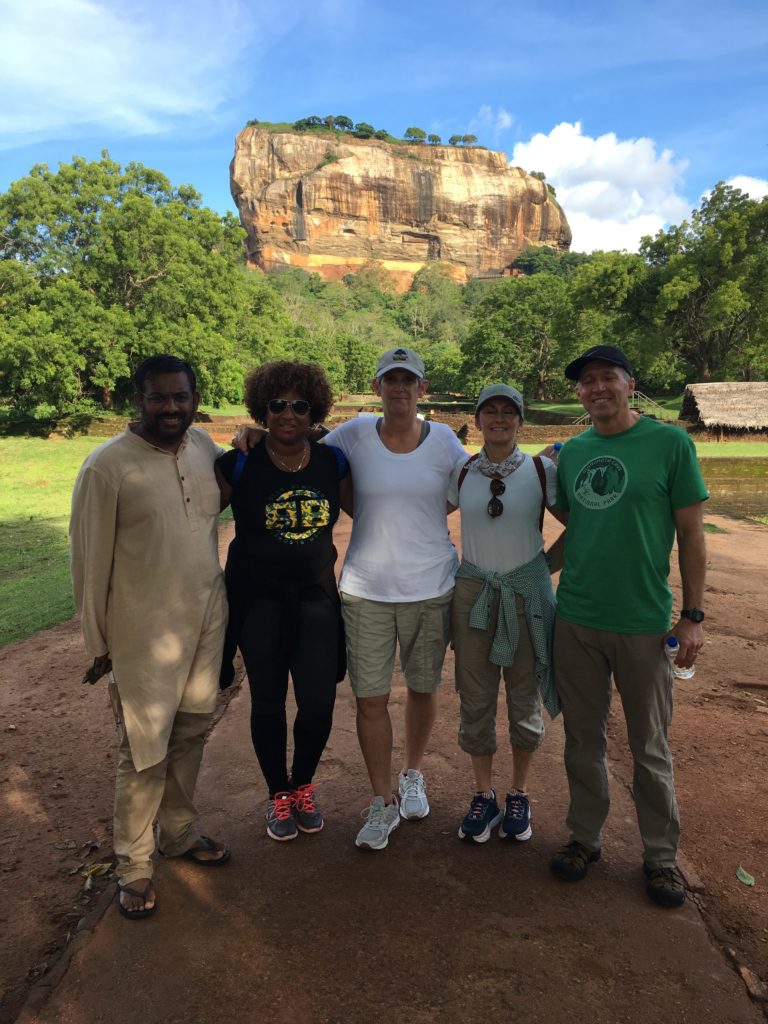
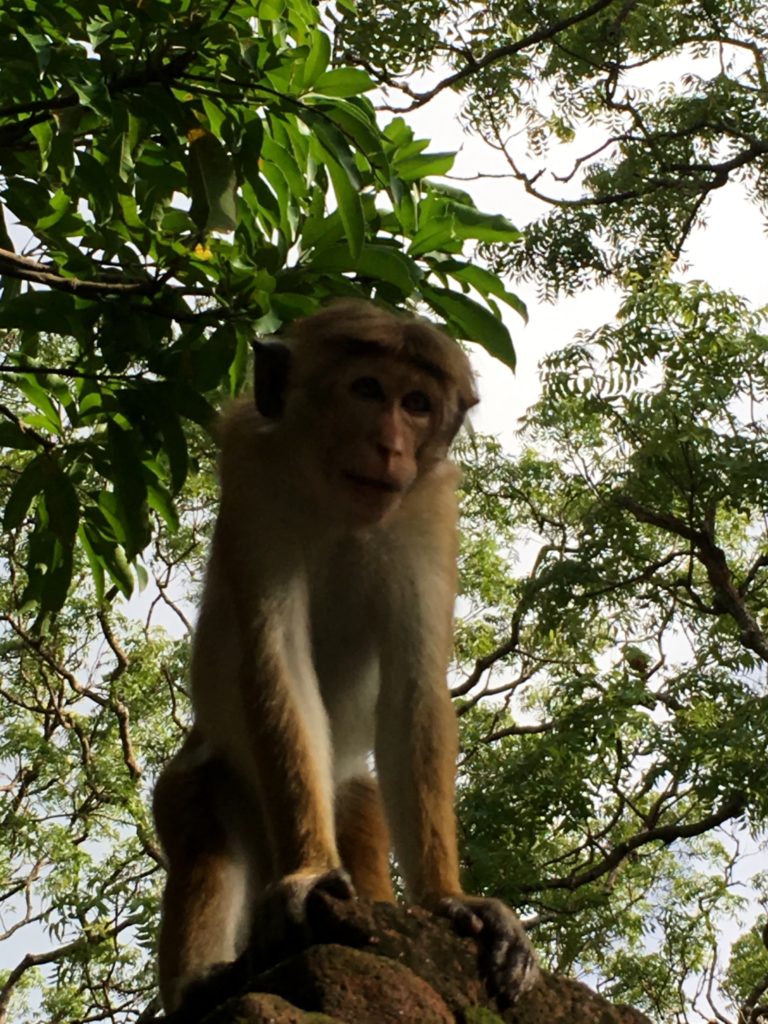
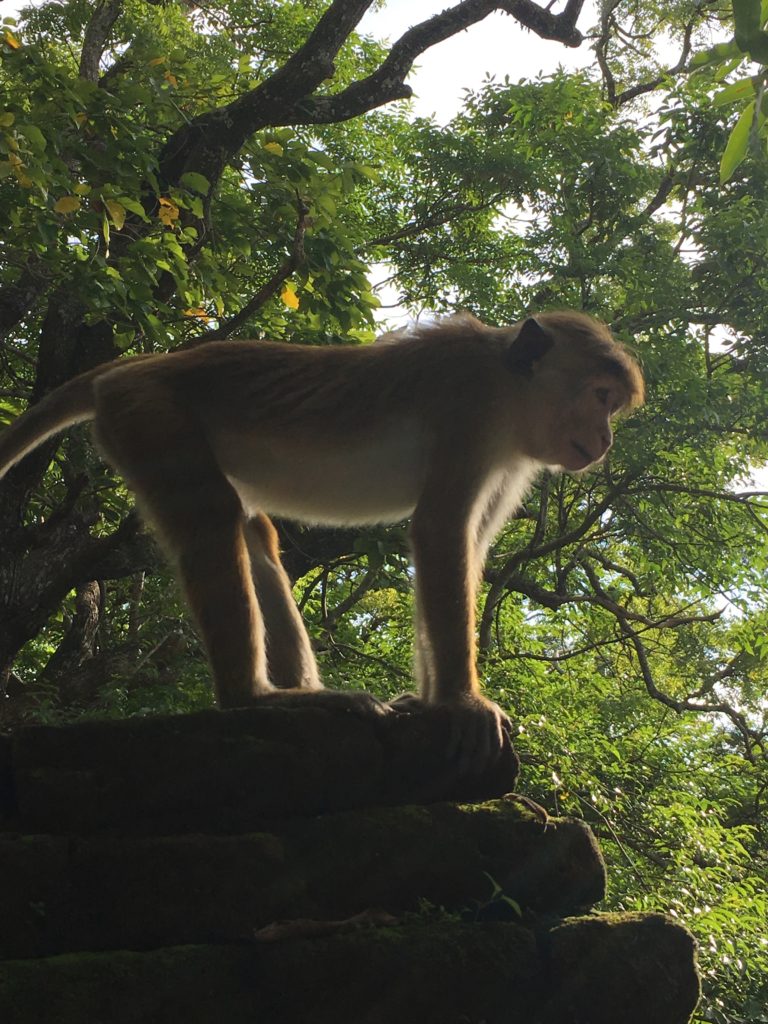
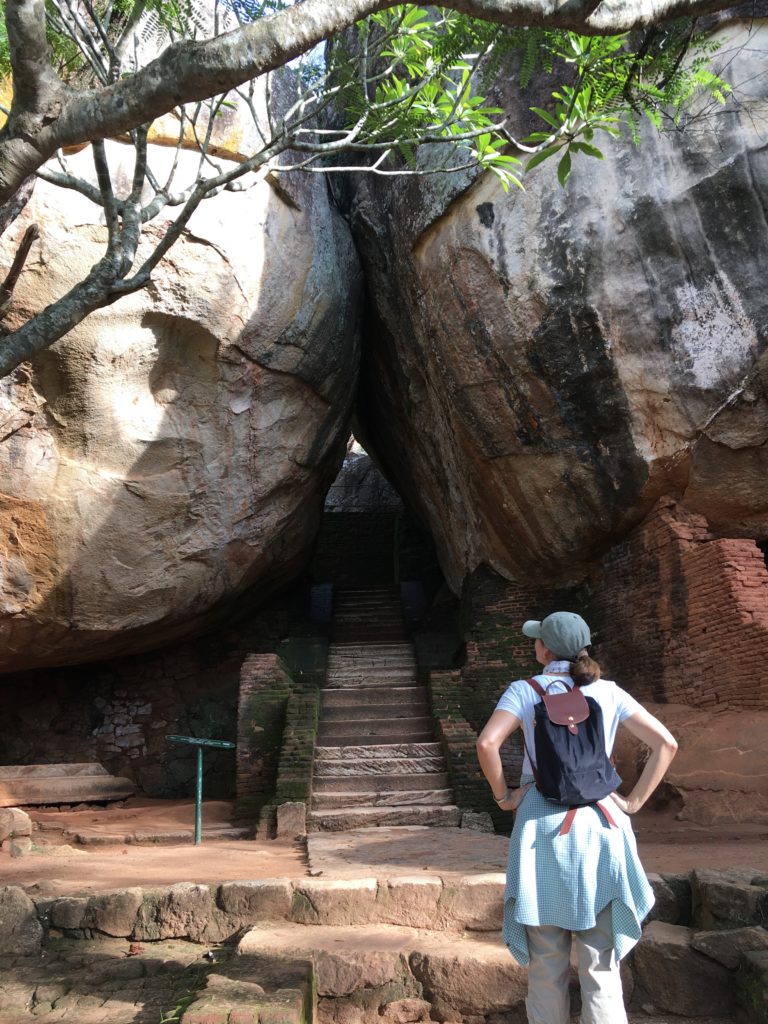
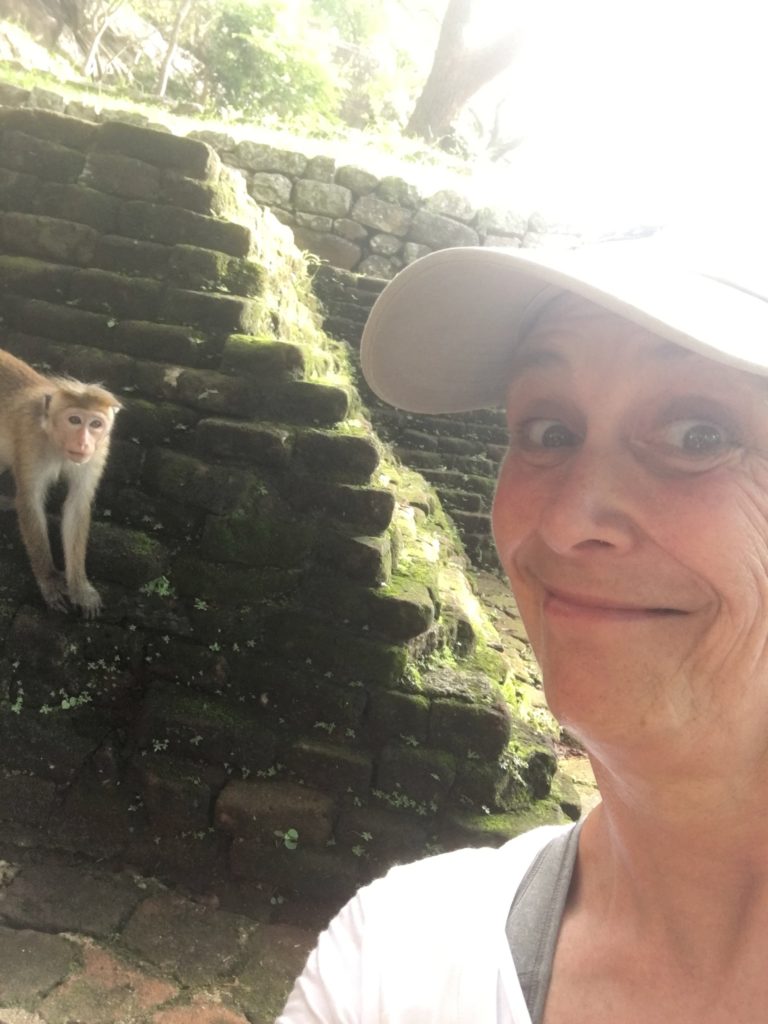
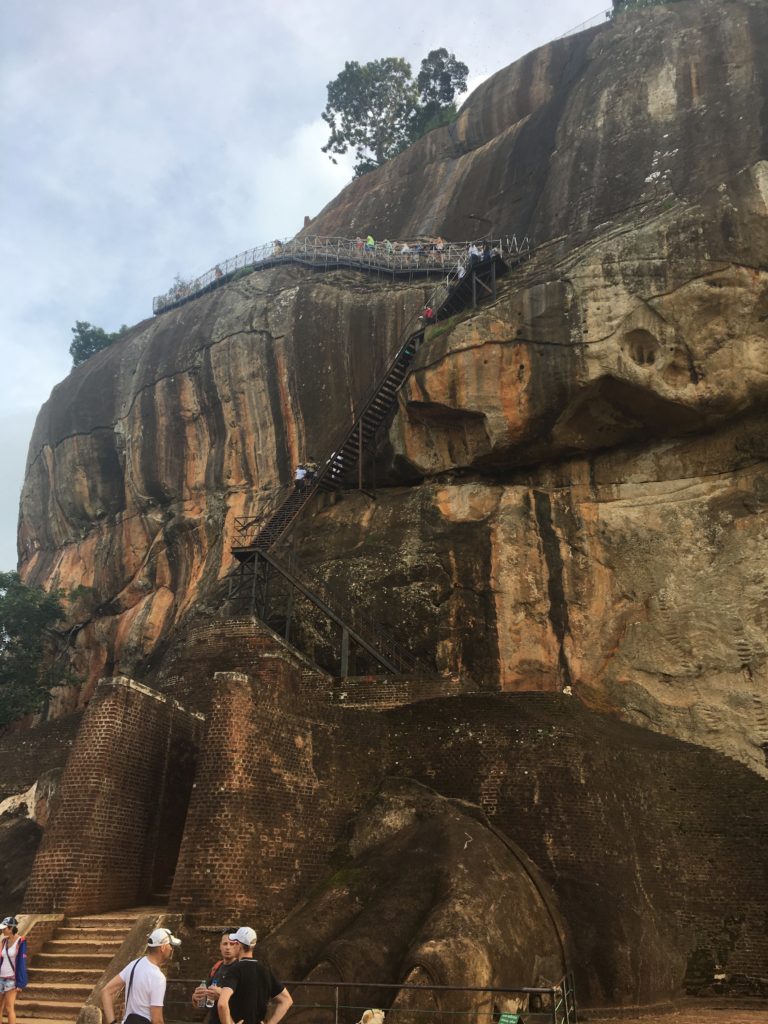
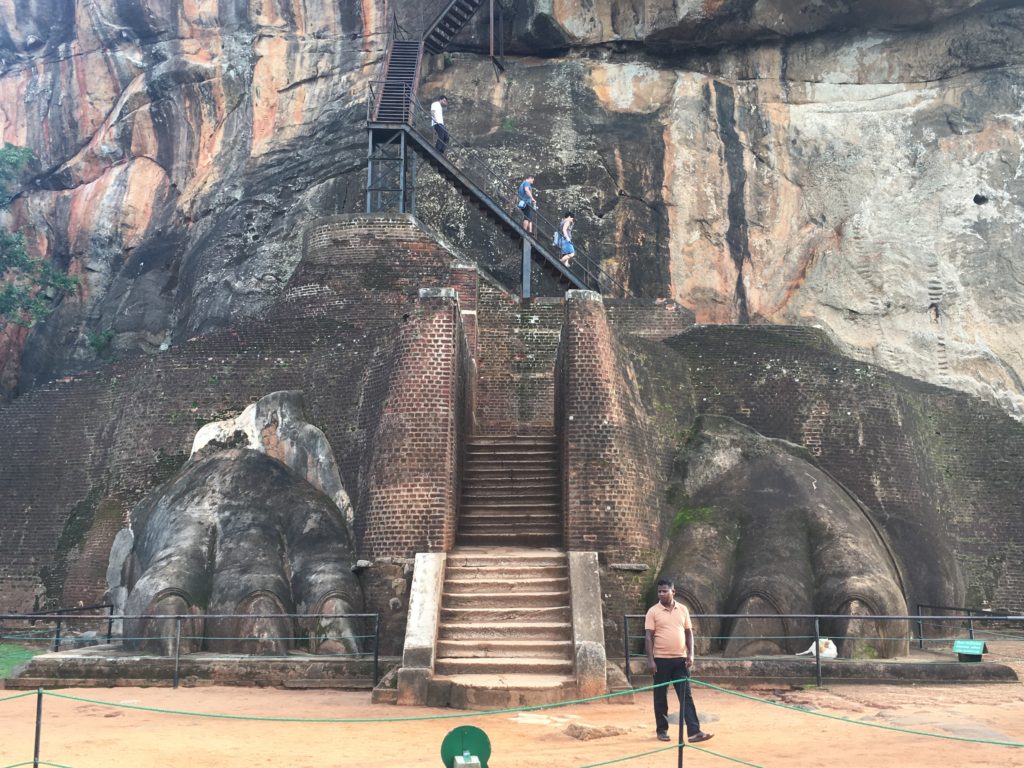
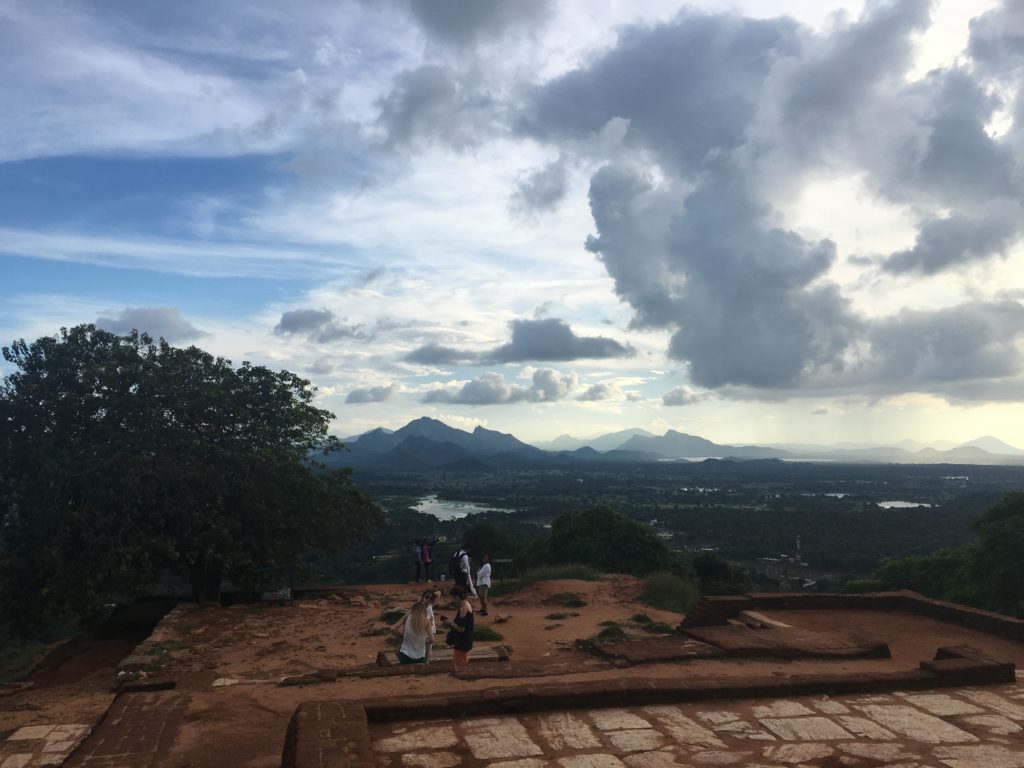
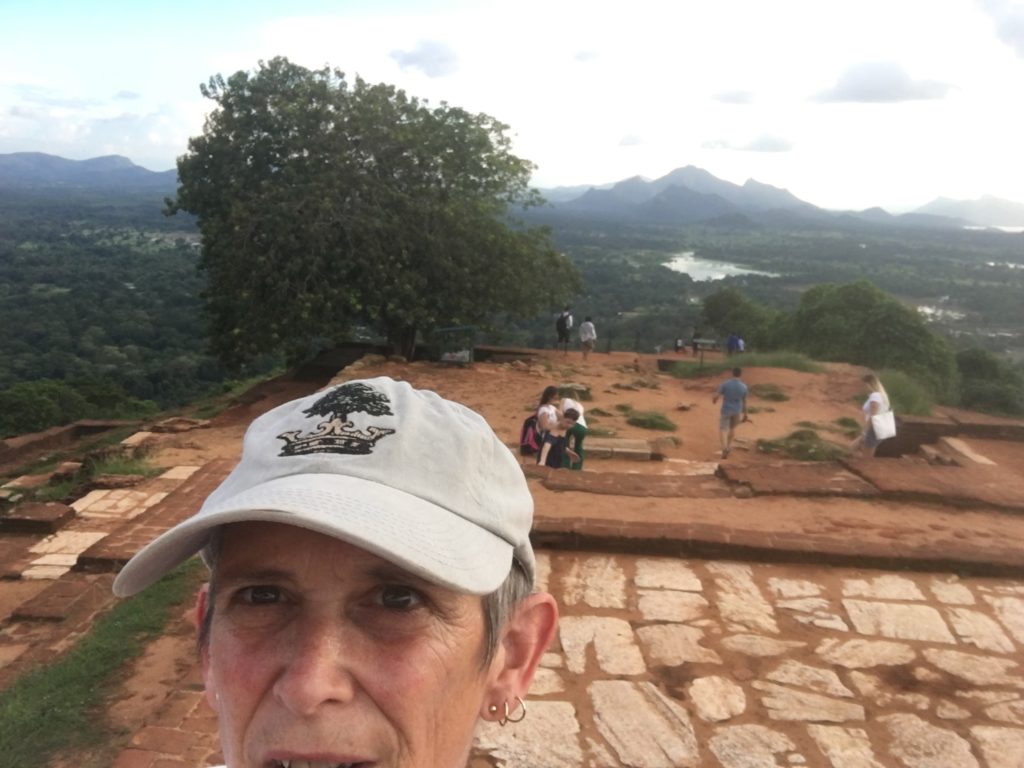
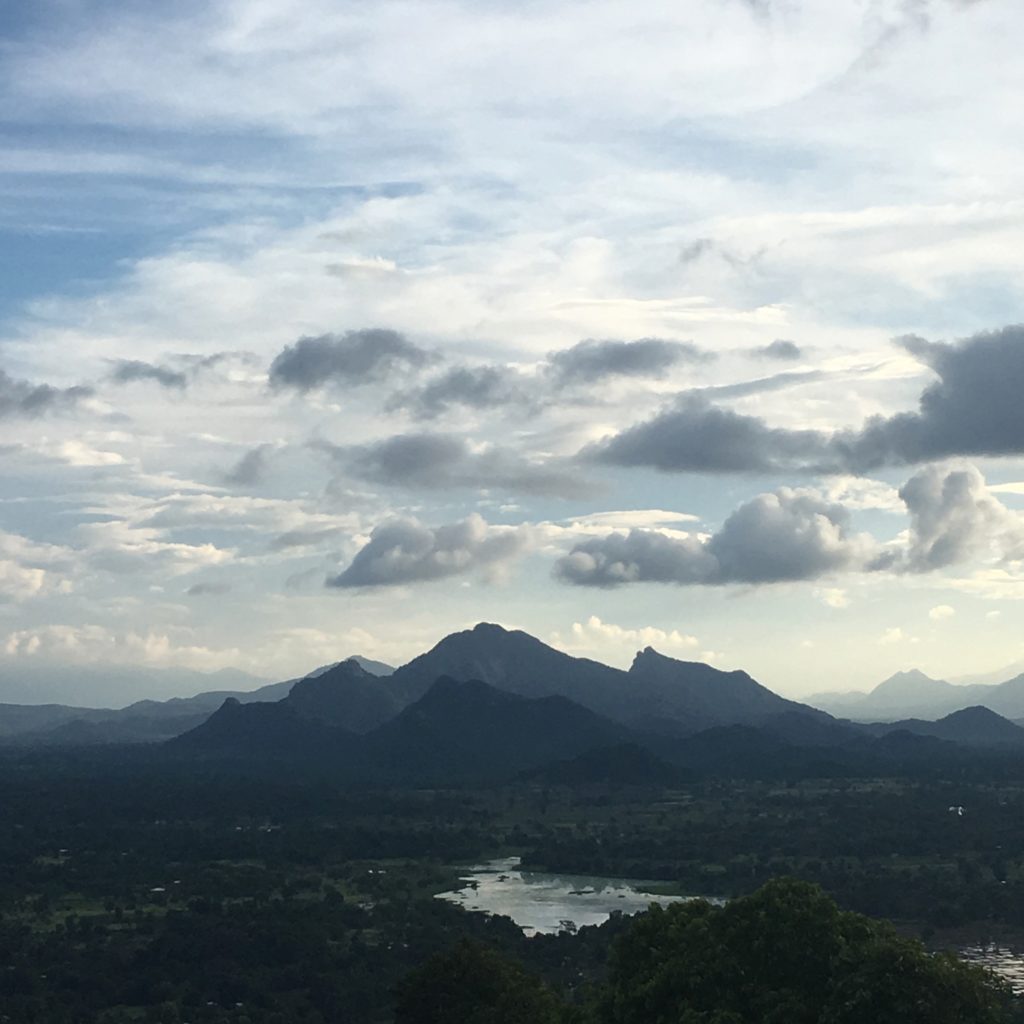
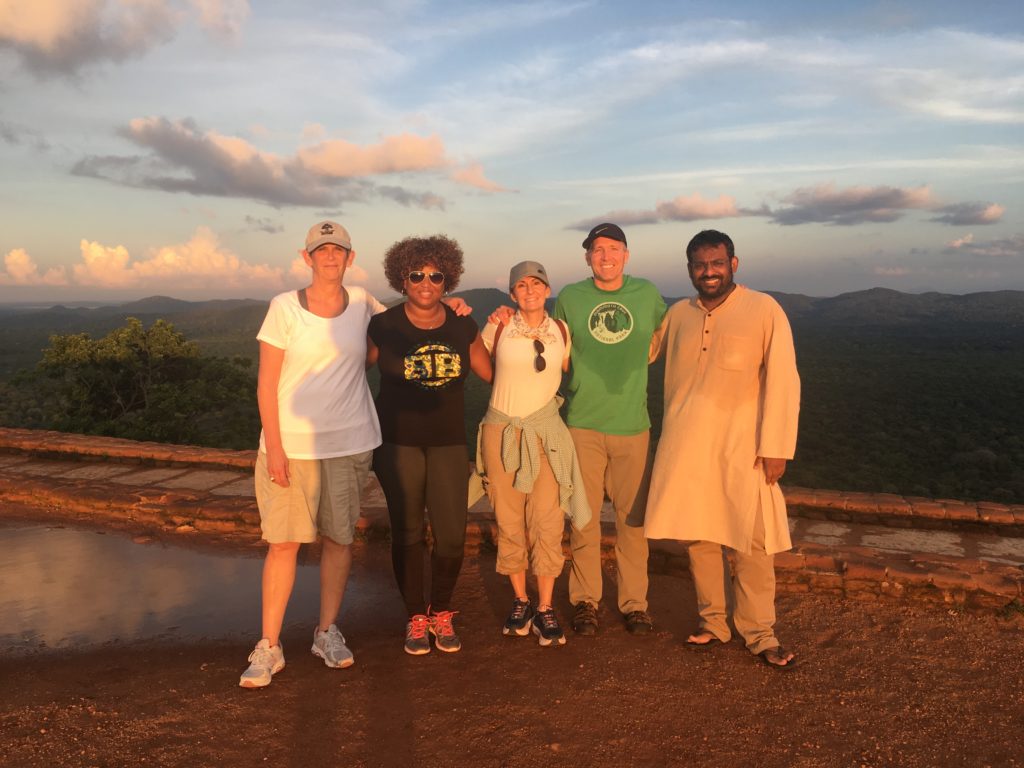
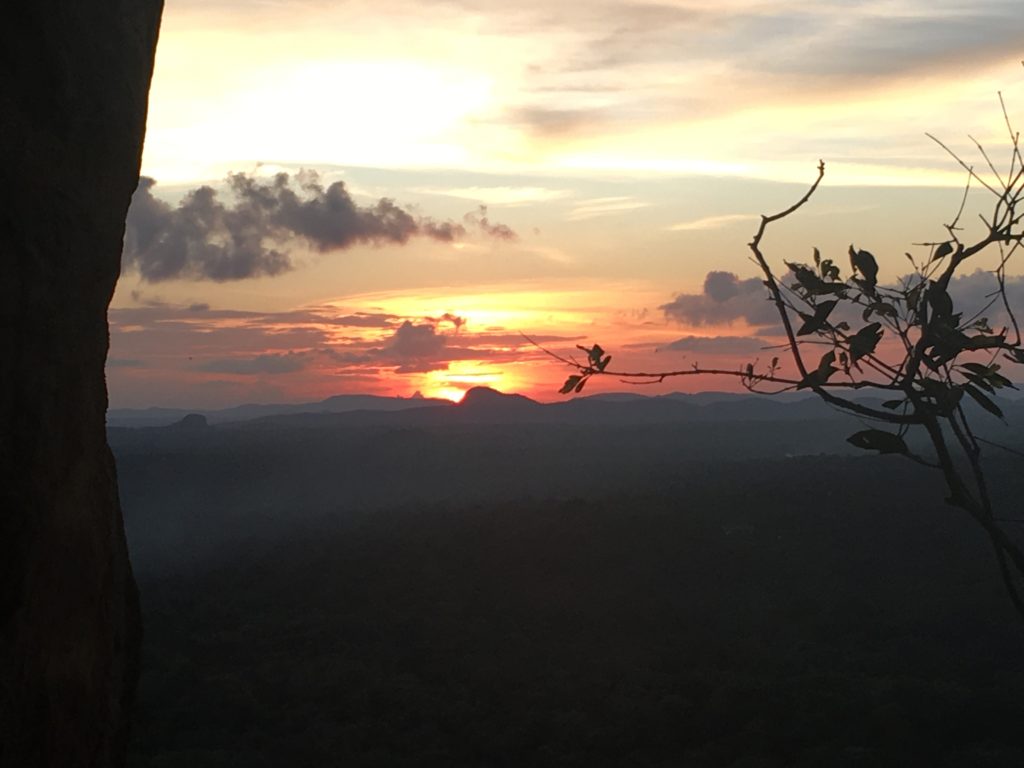
Building peace and hope after war and Planting Relationships and Hope for the Future
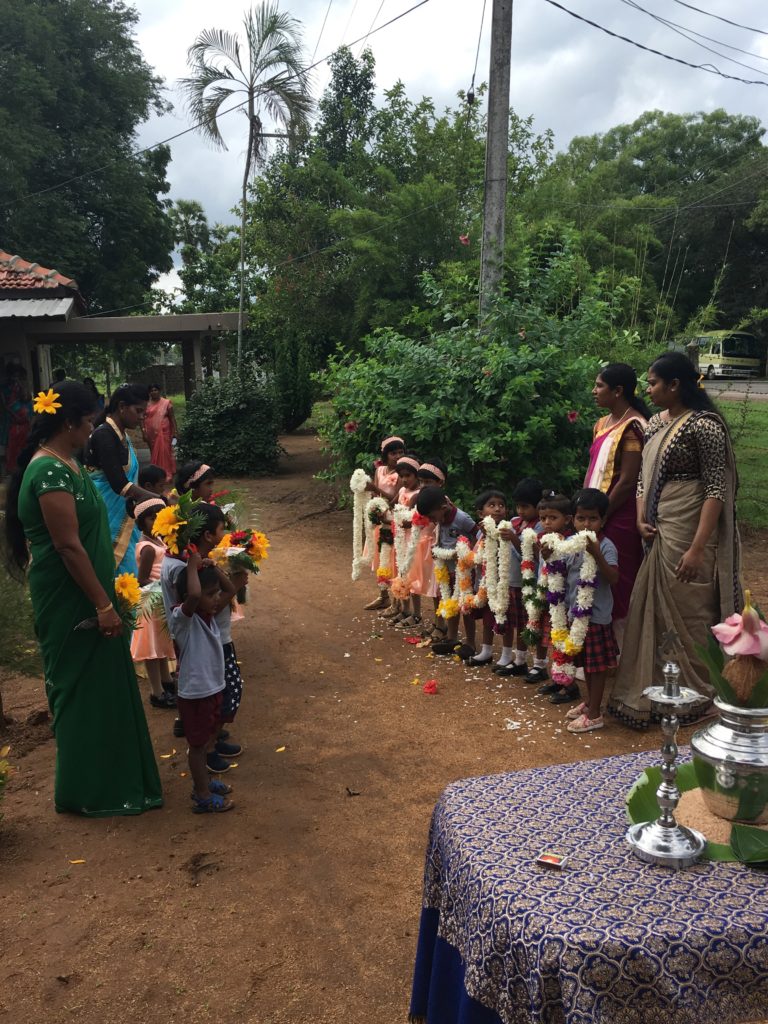
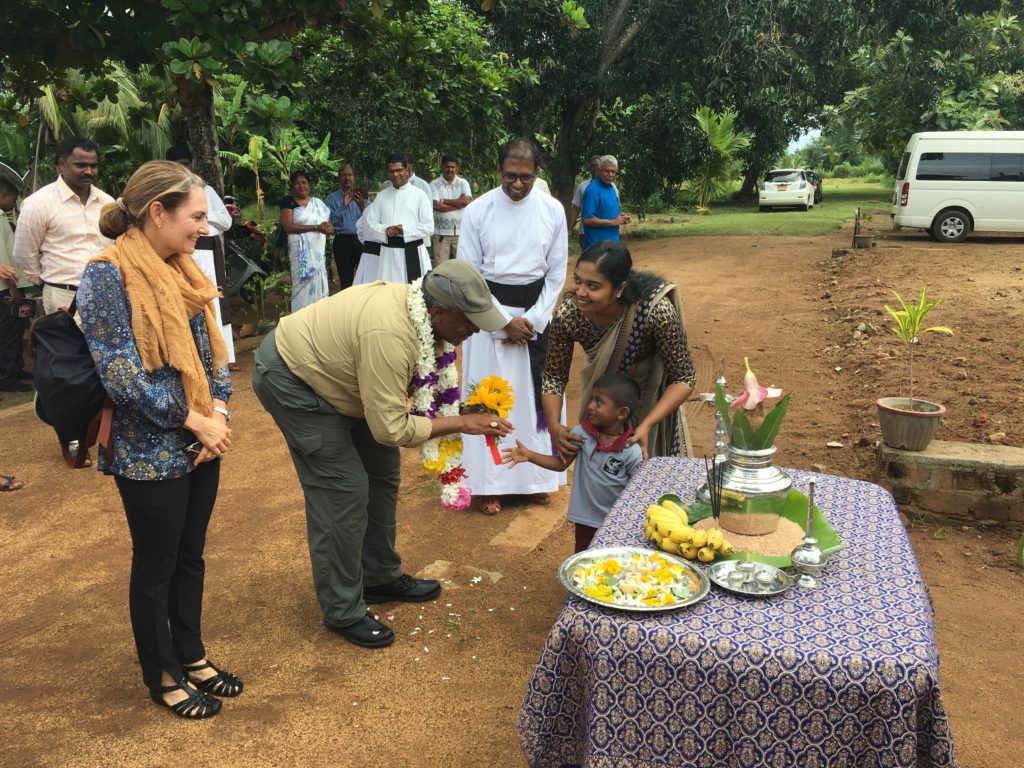
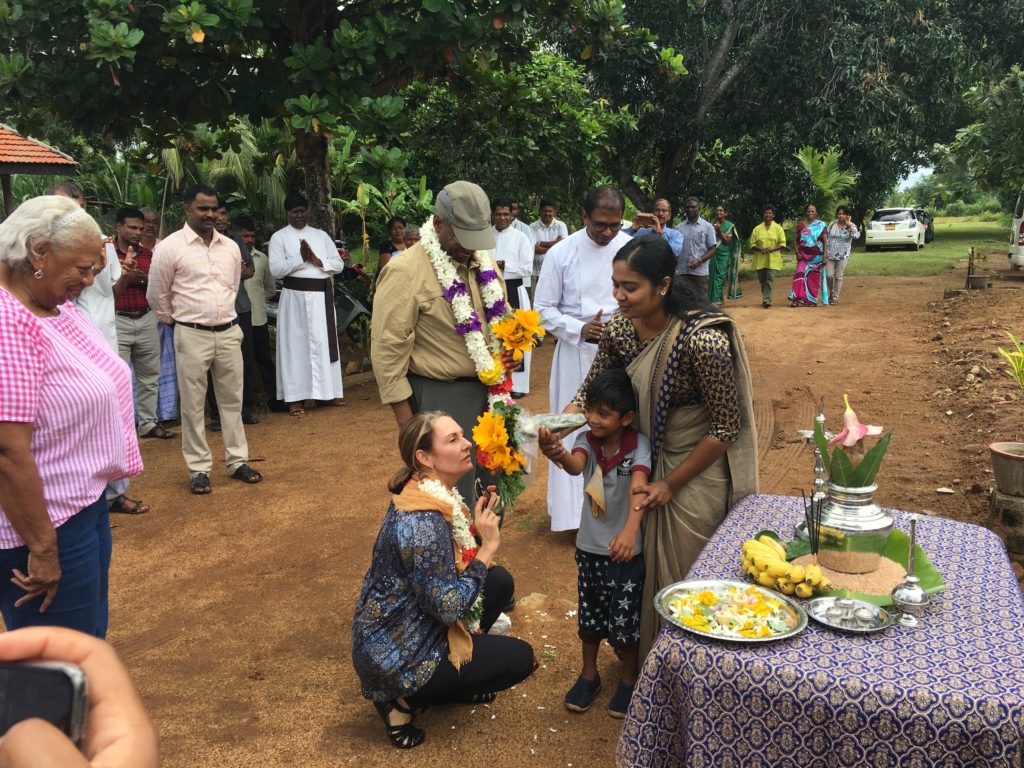
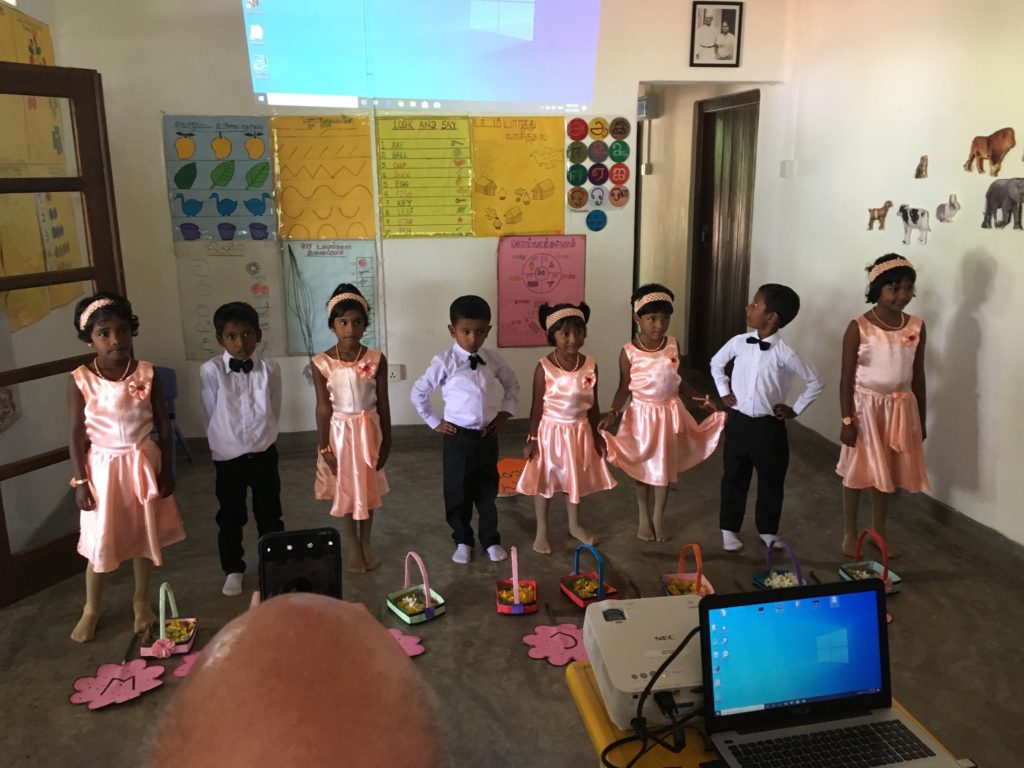
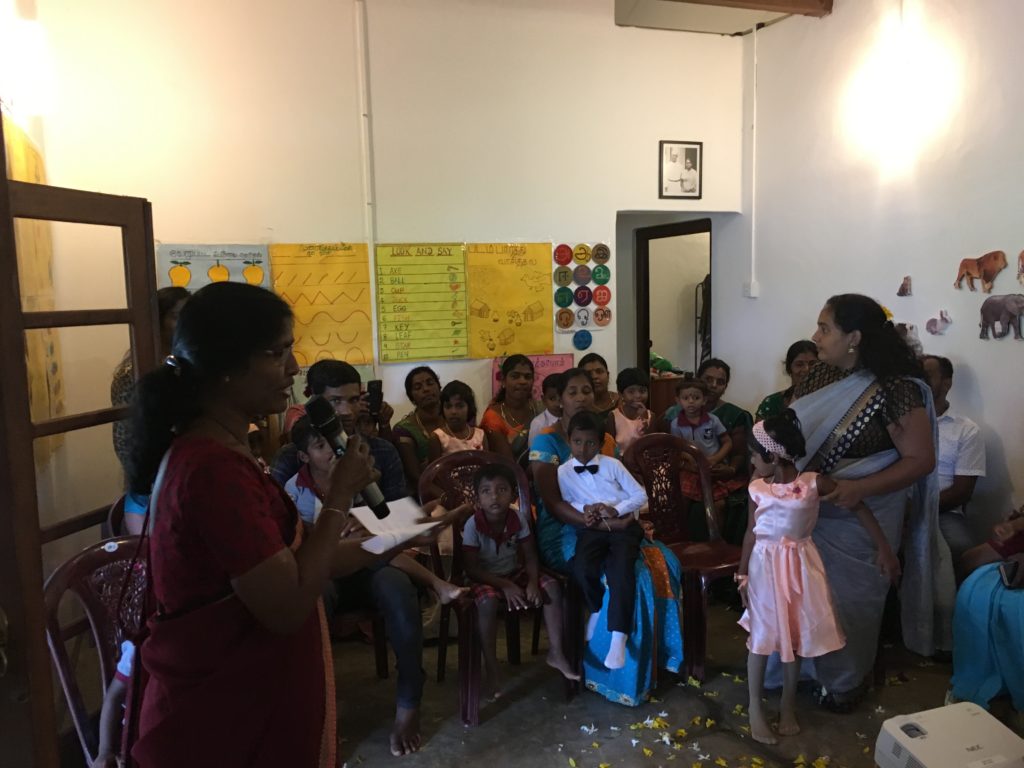
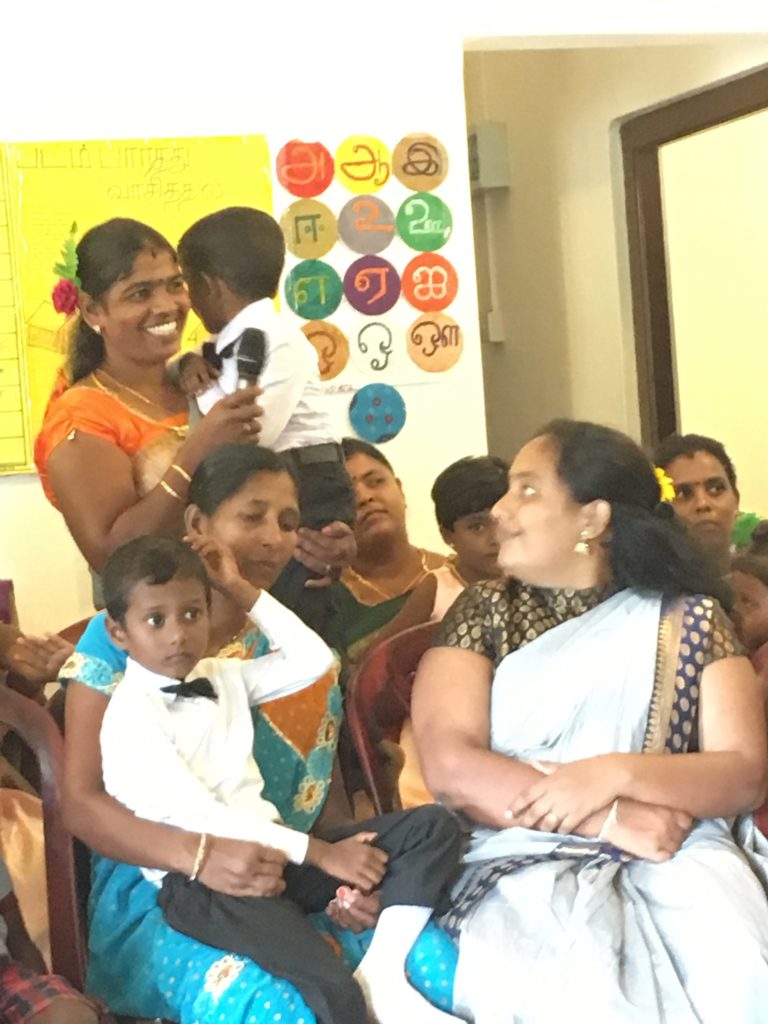
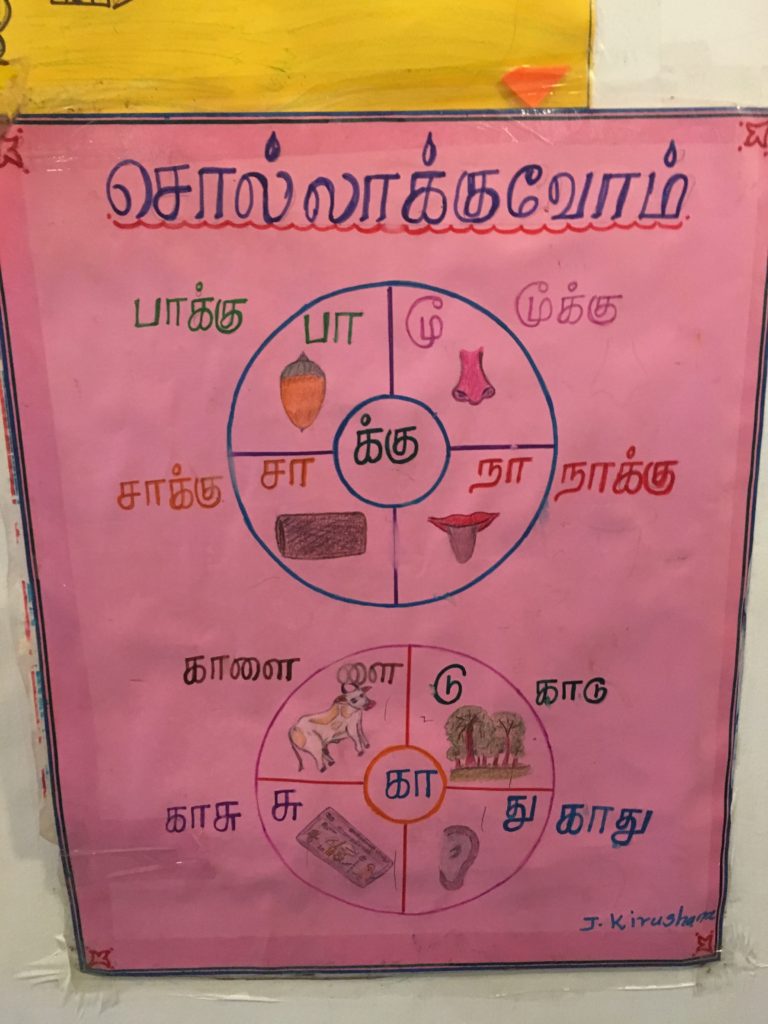
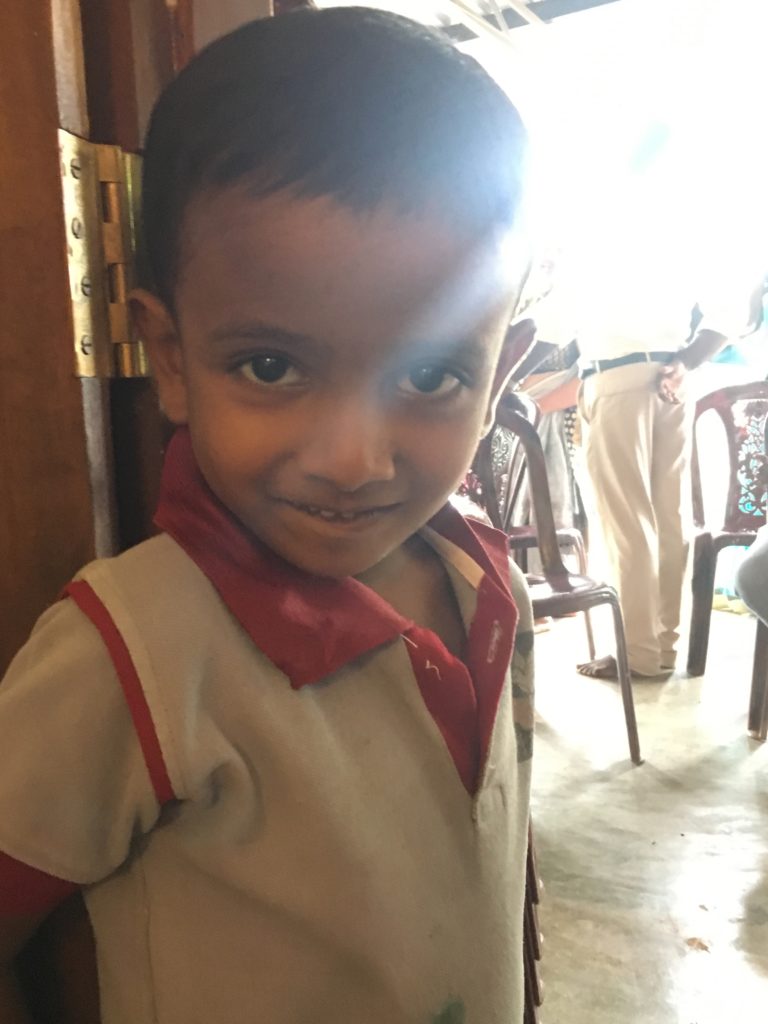
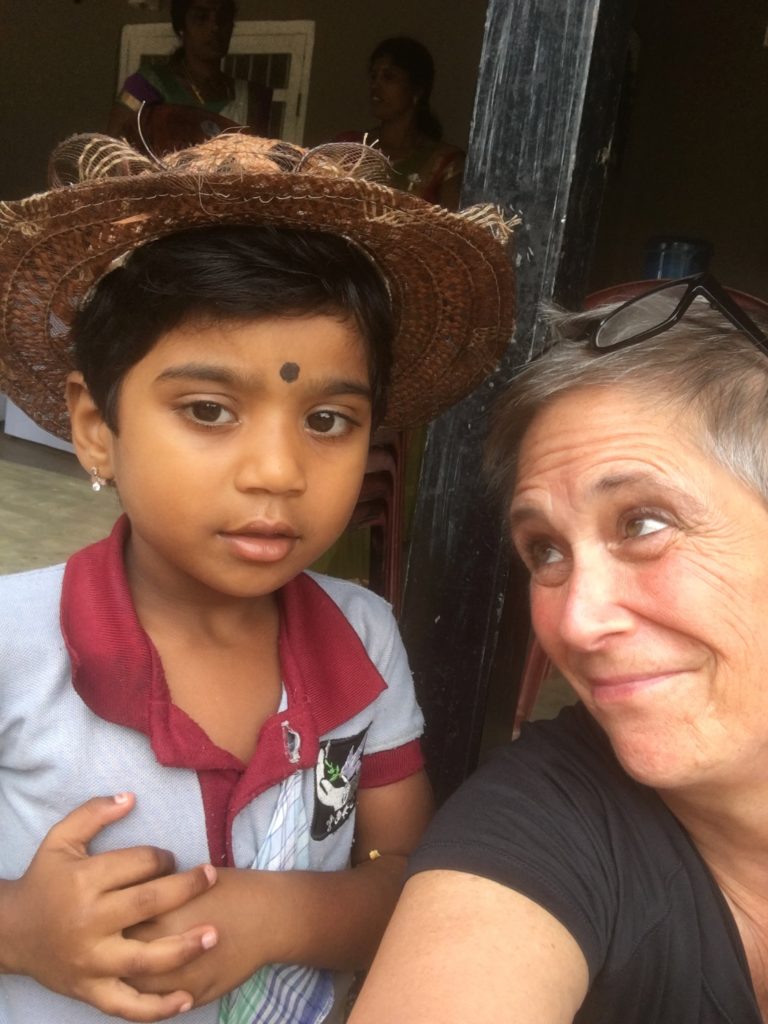
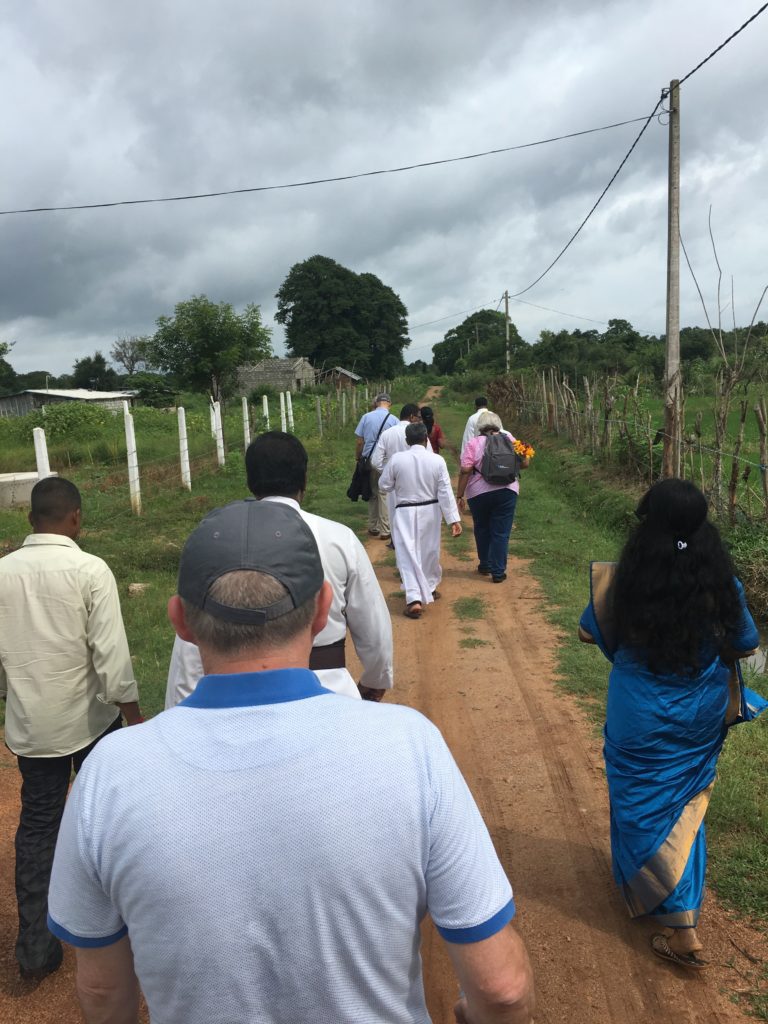
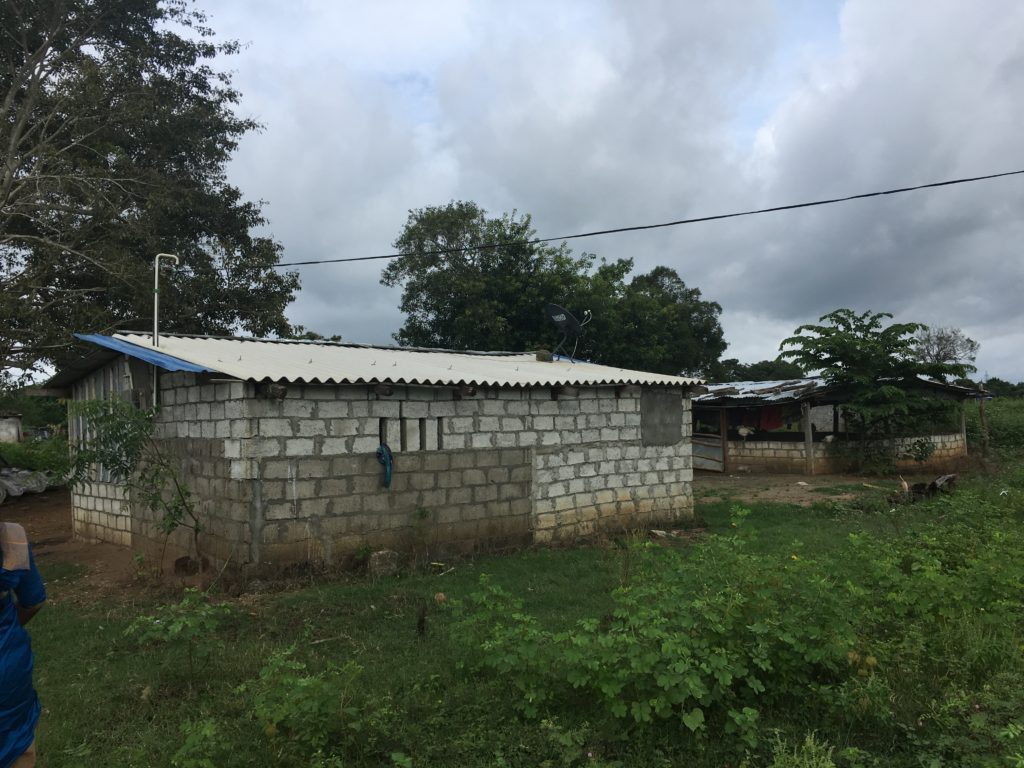
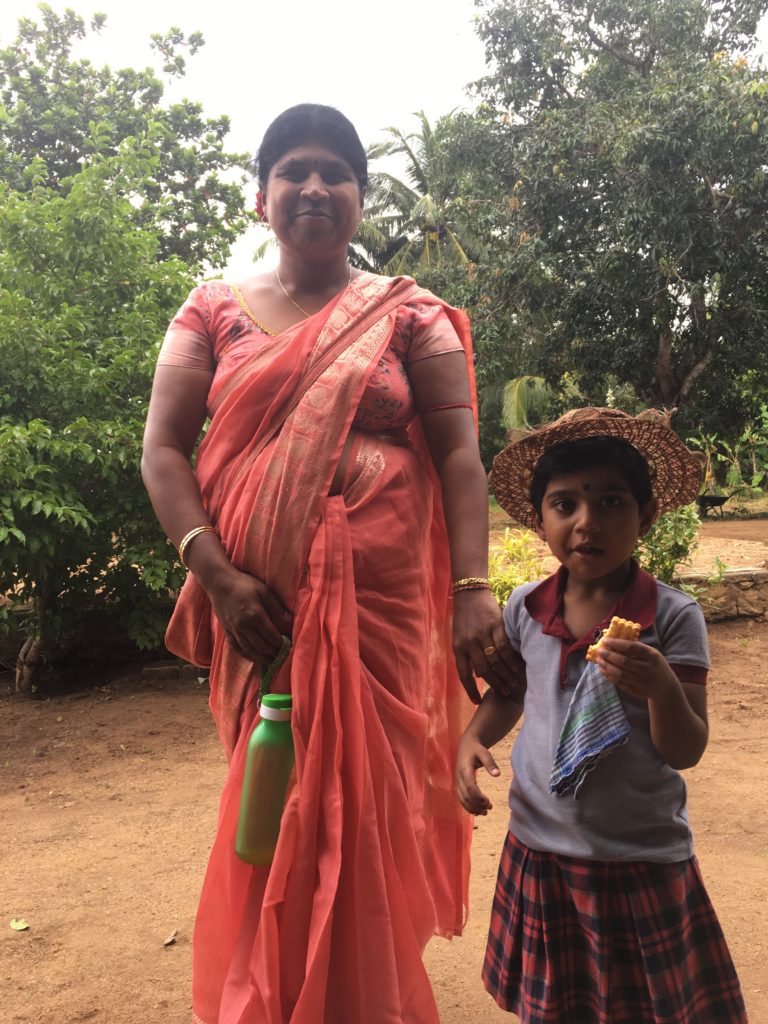
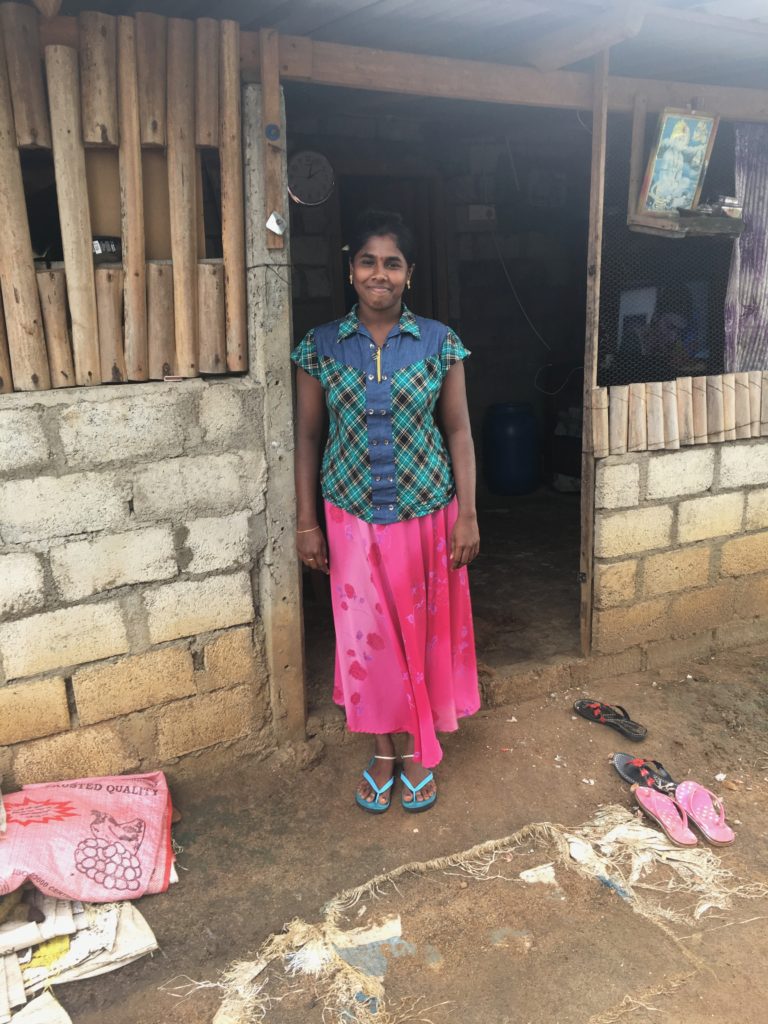
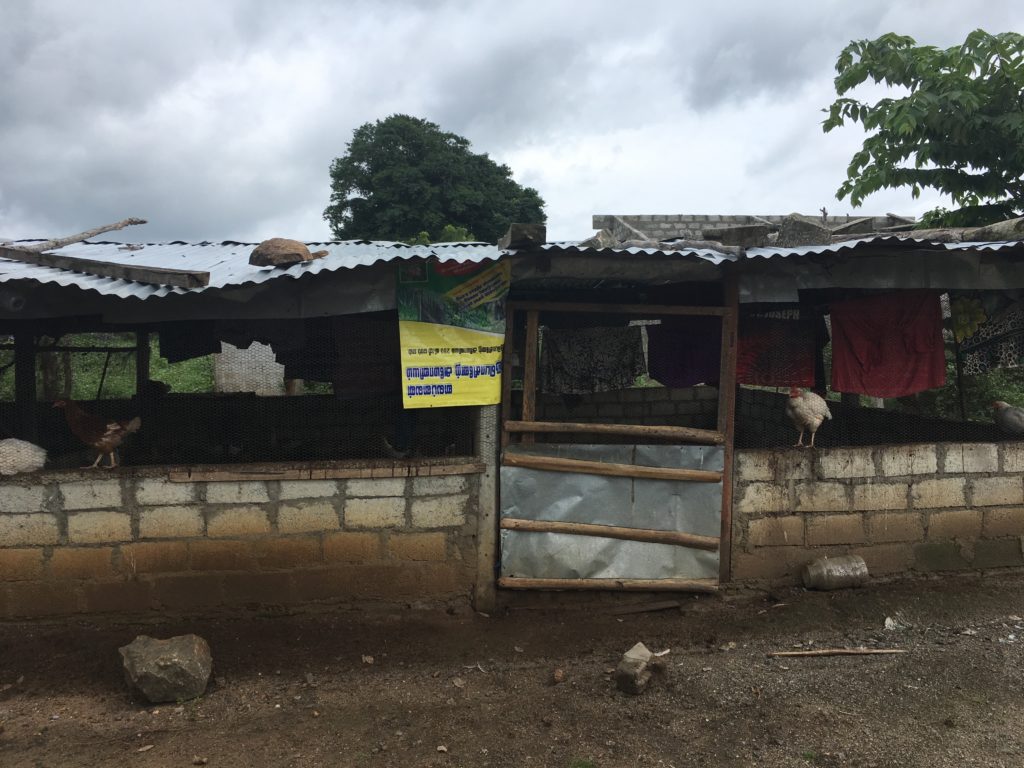
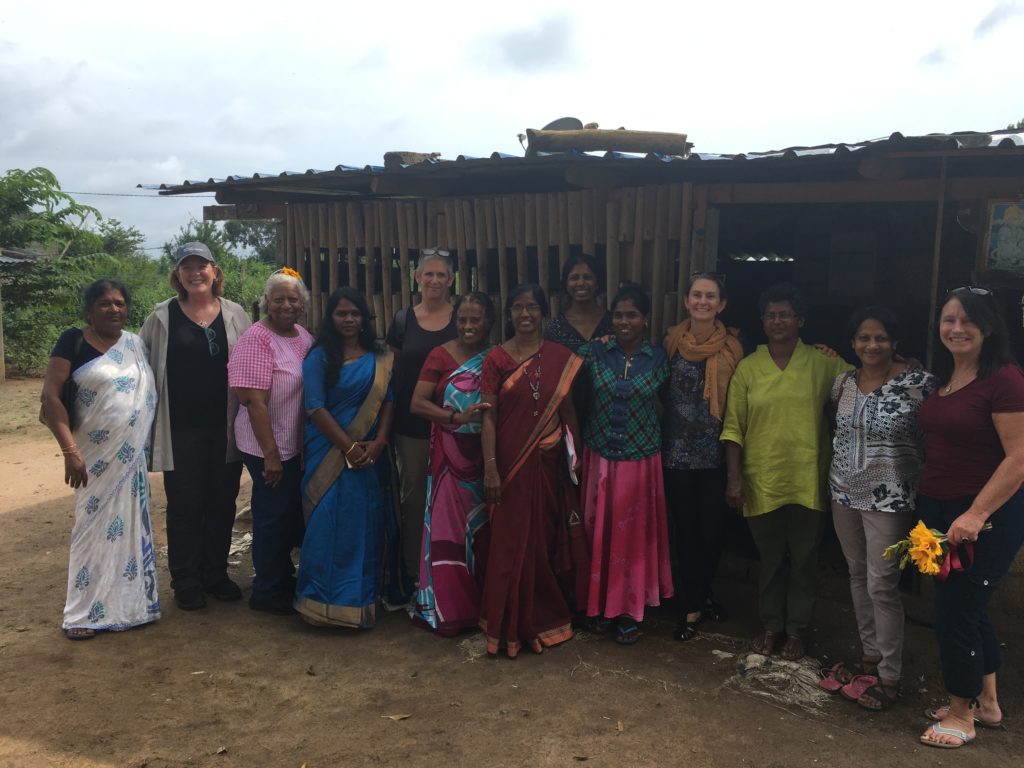
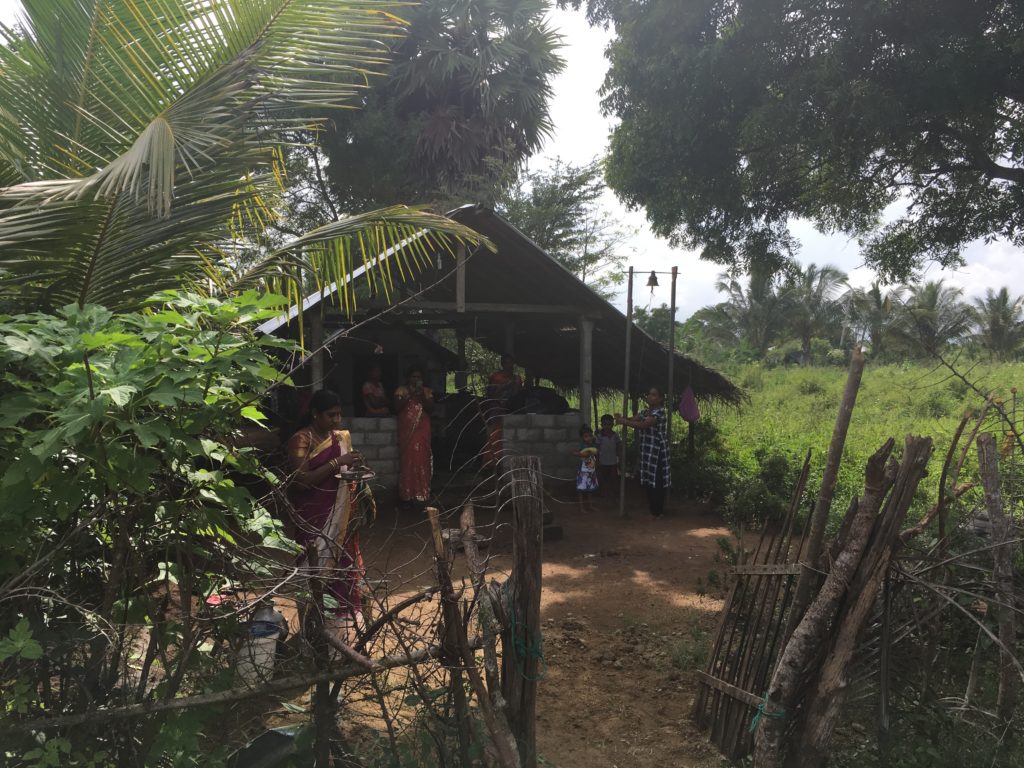
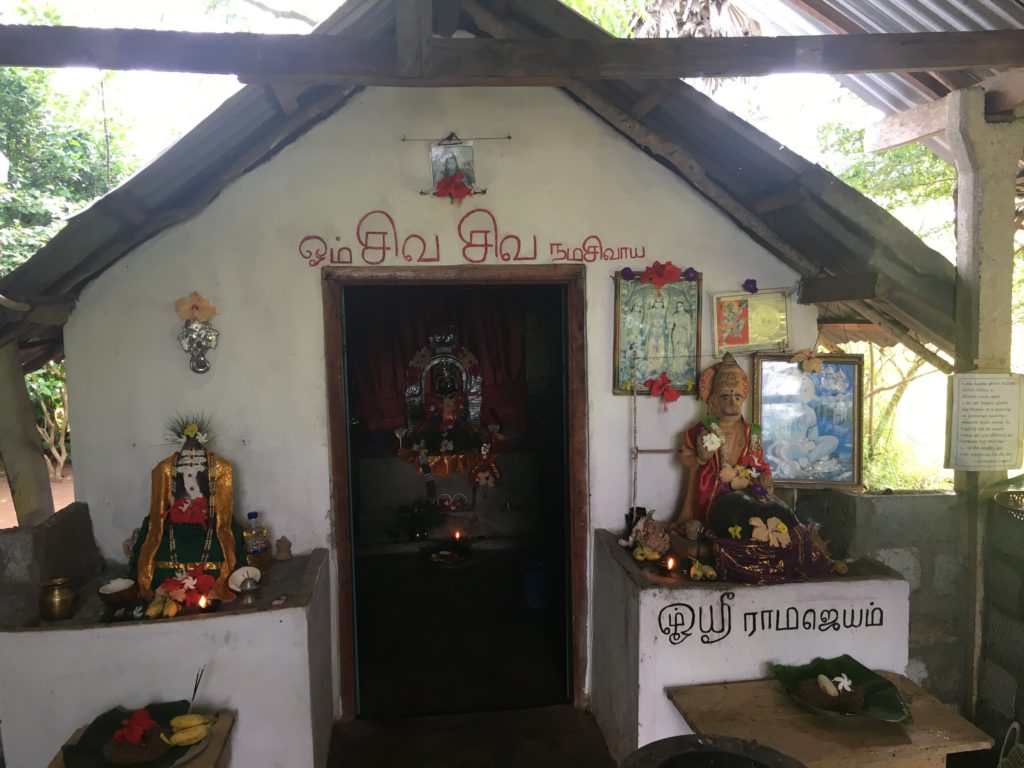
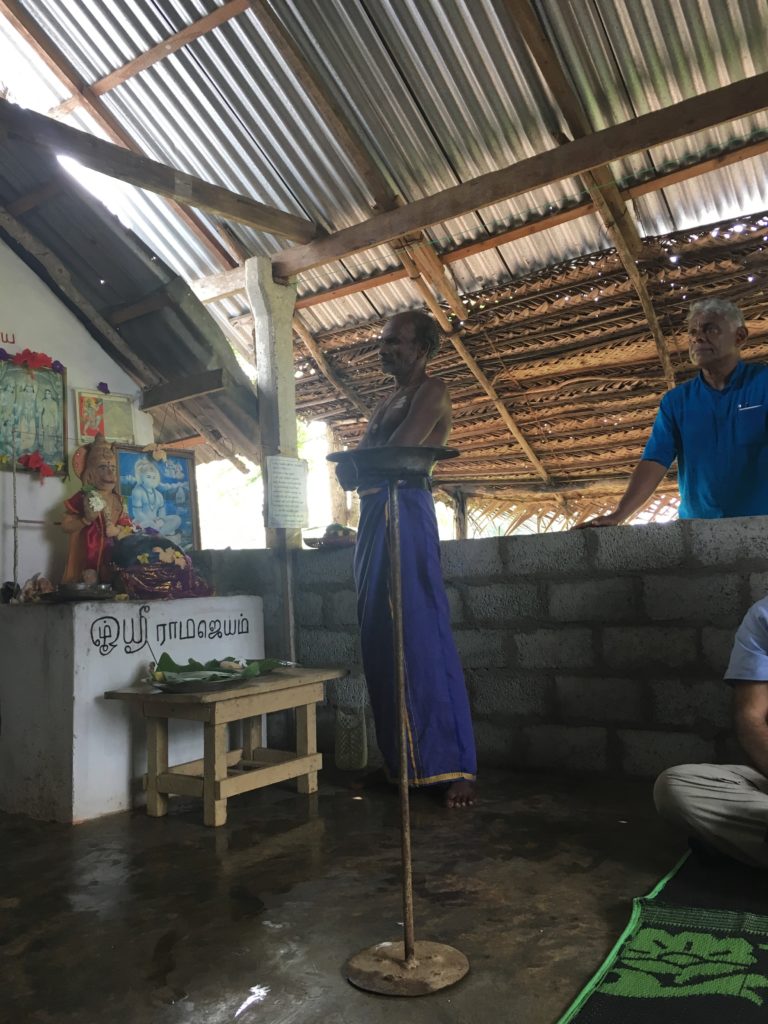
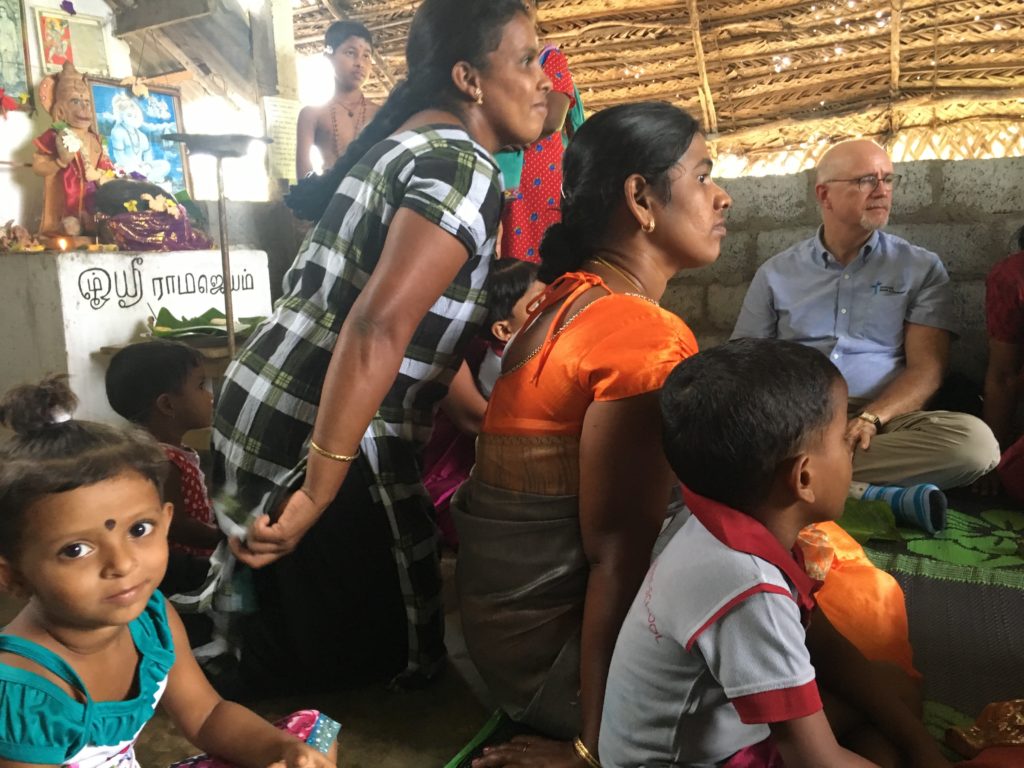
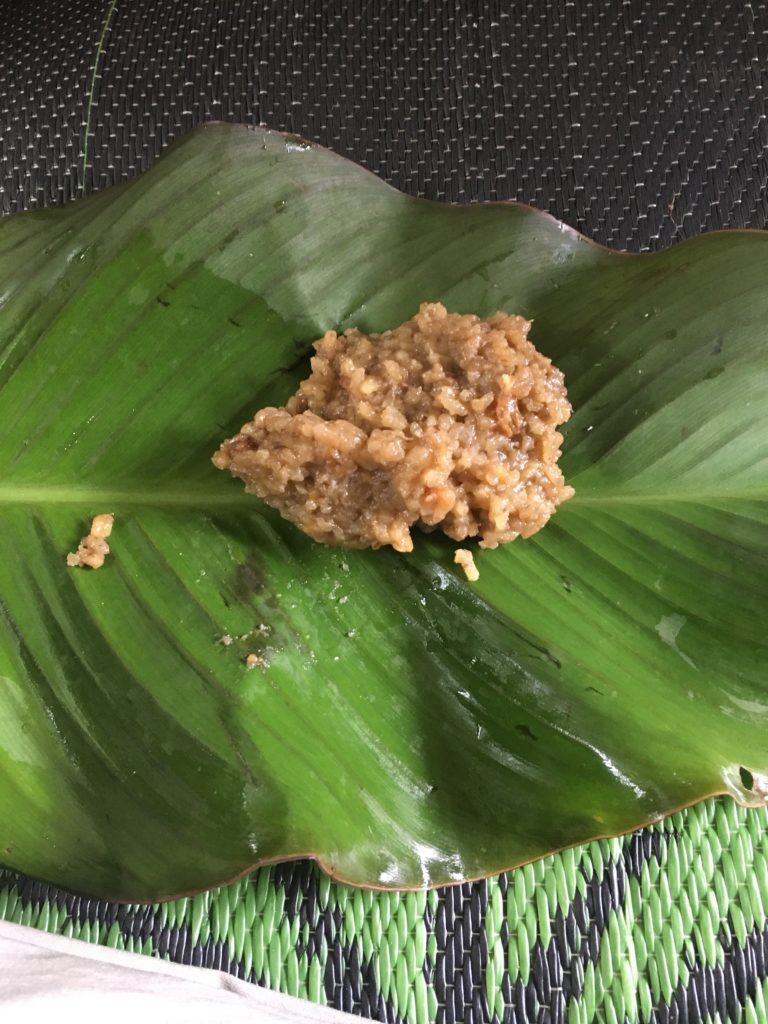
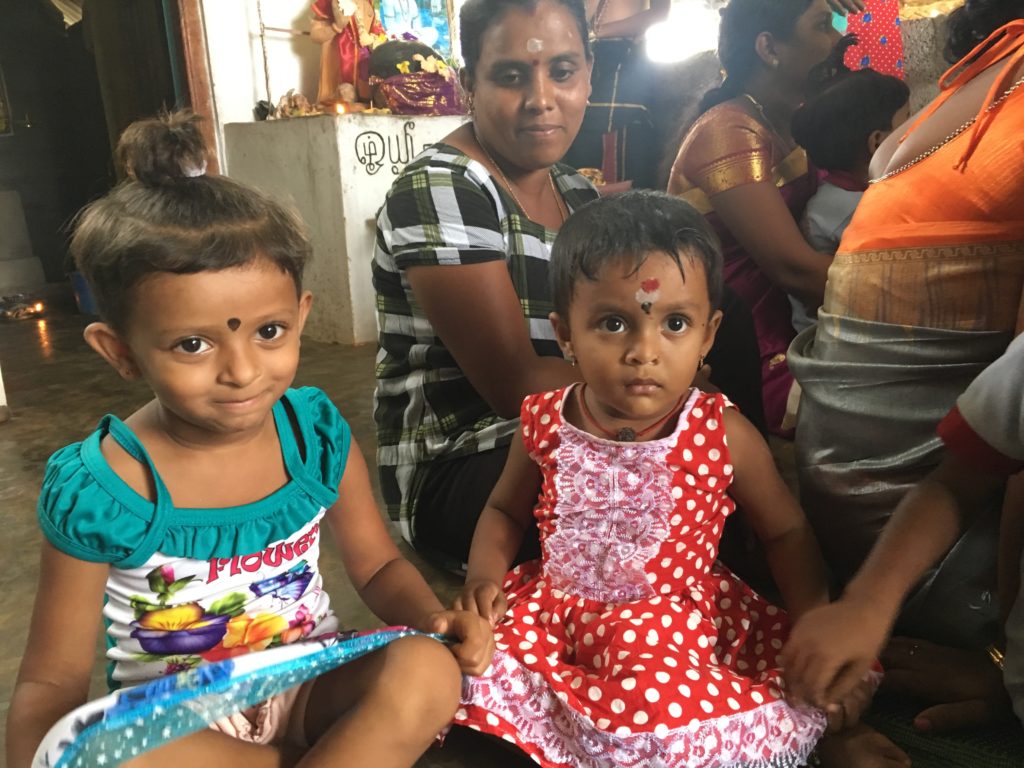
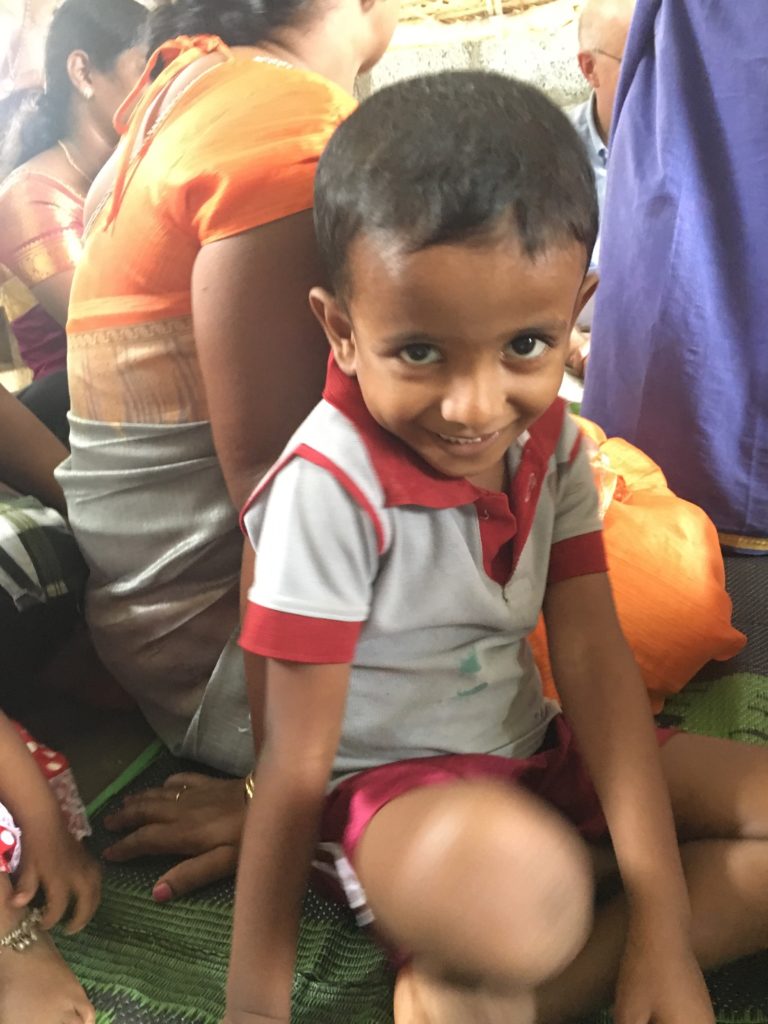
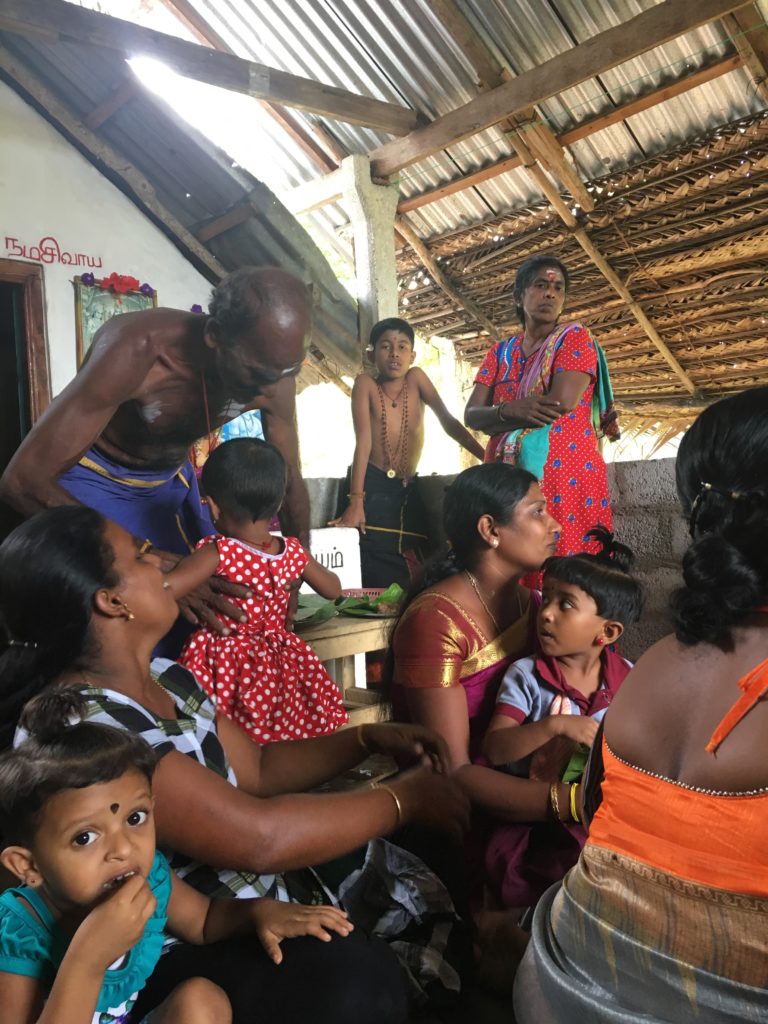
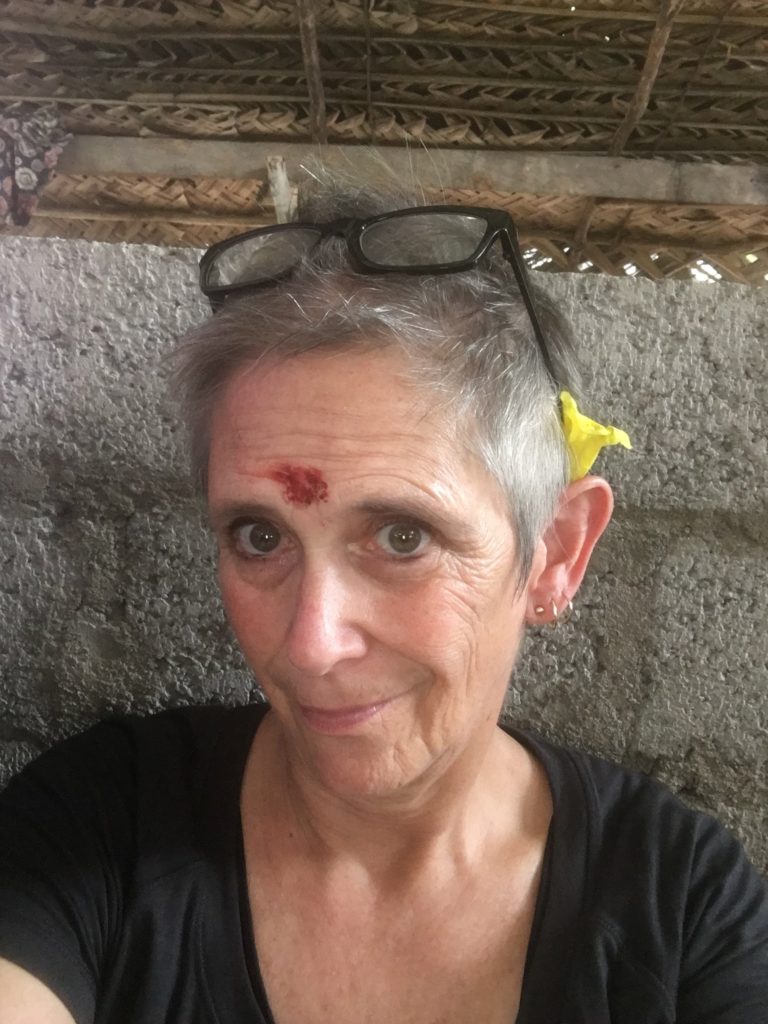
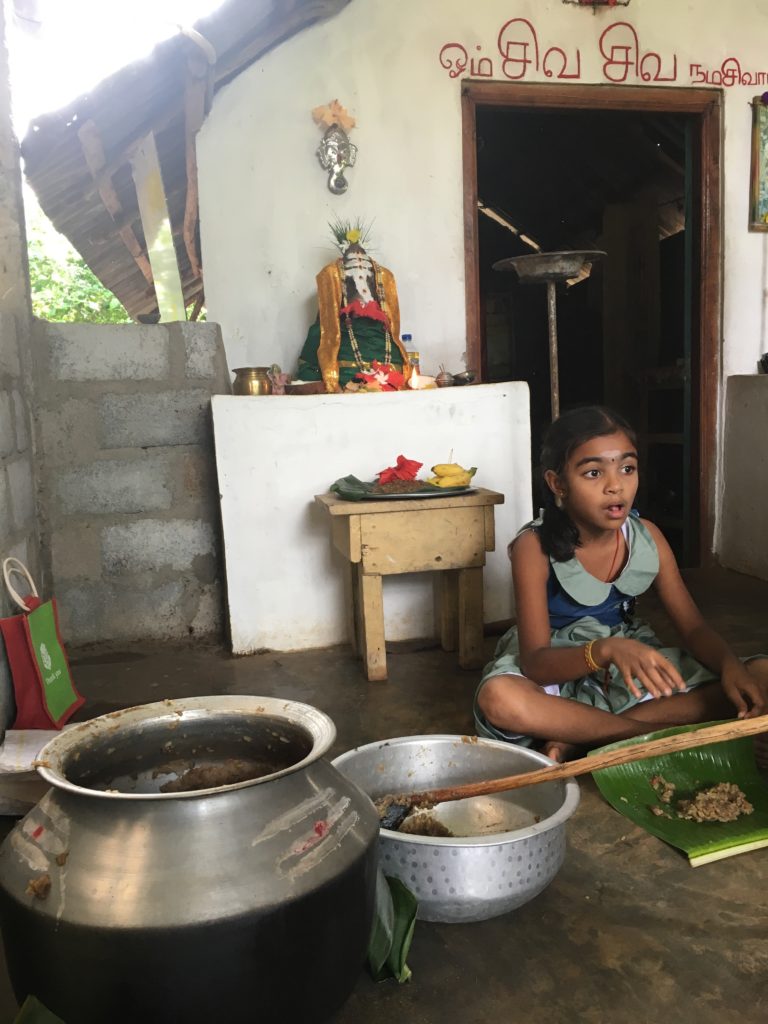
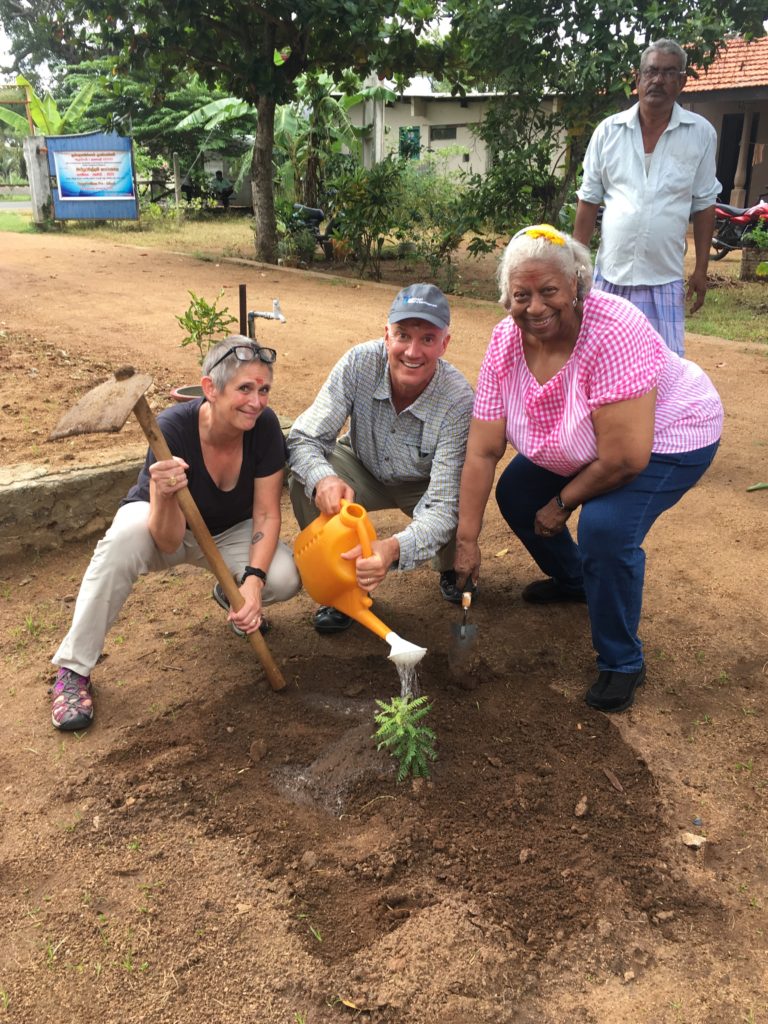
Micro loans in Sri Lanka
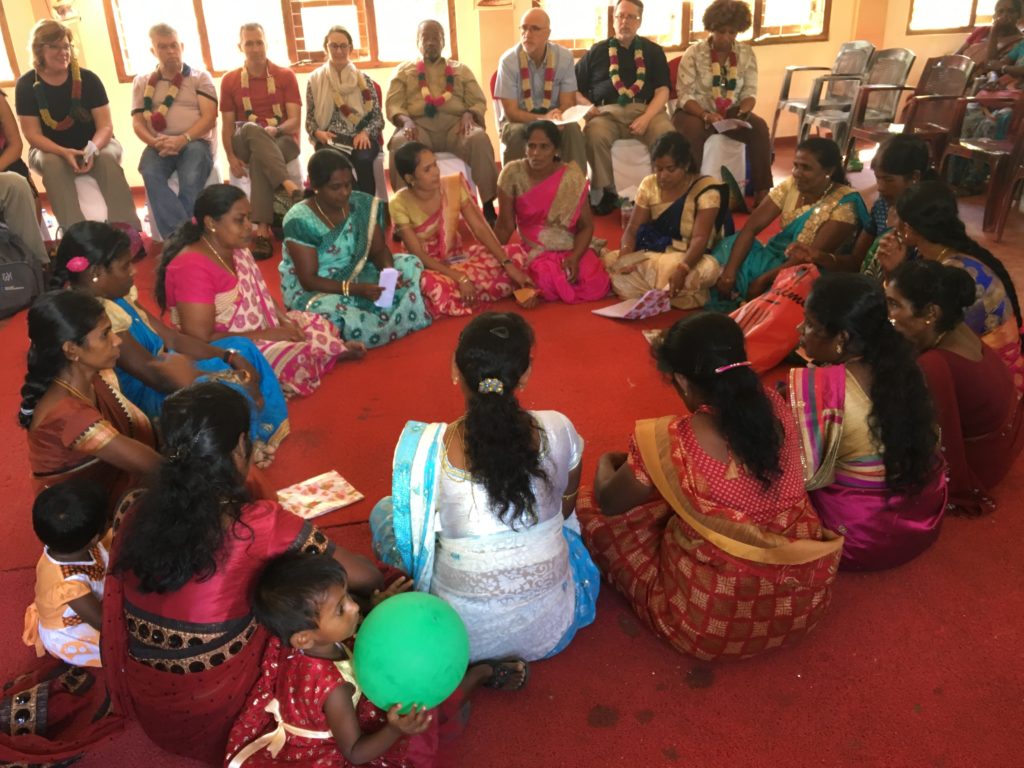
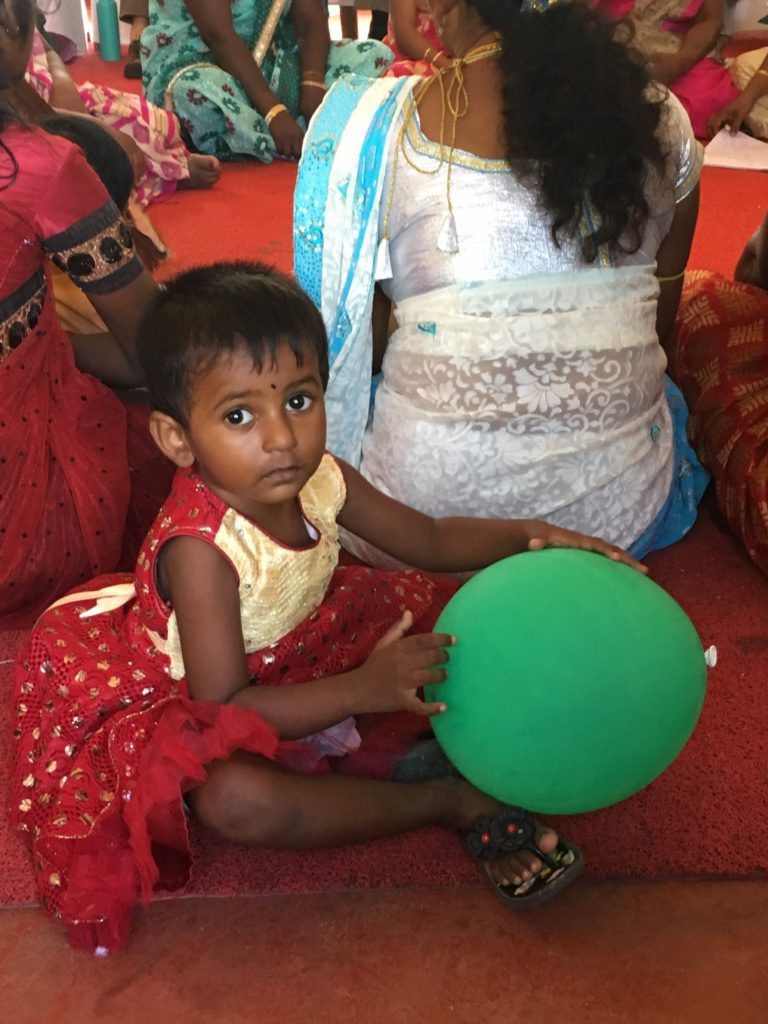
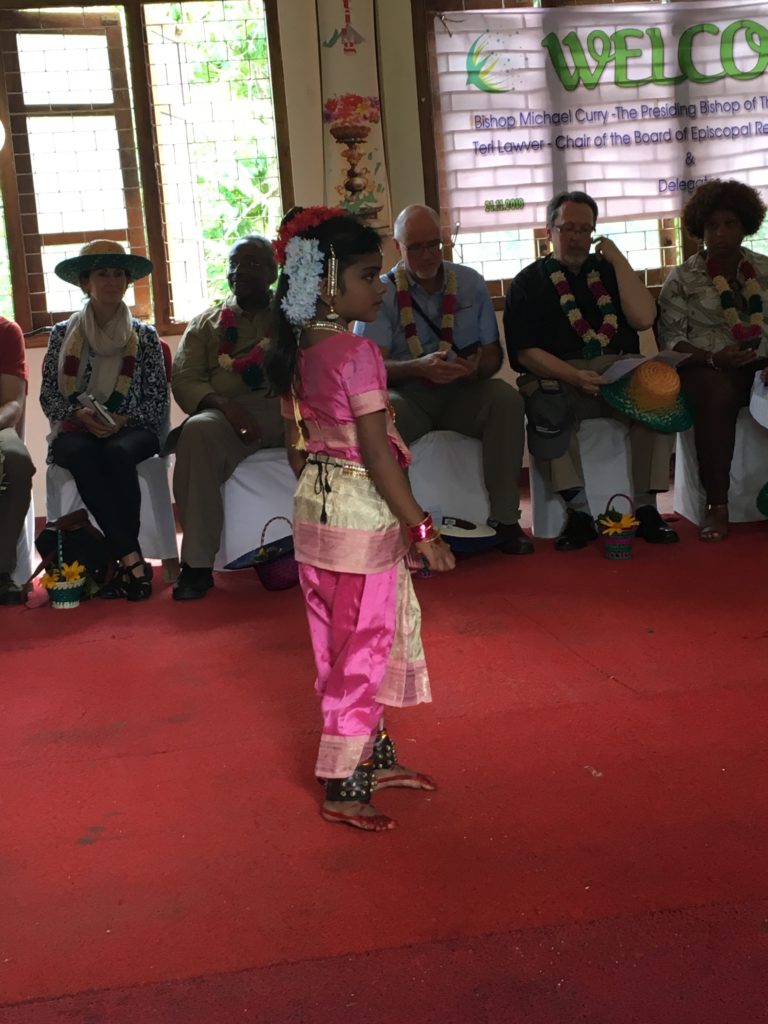
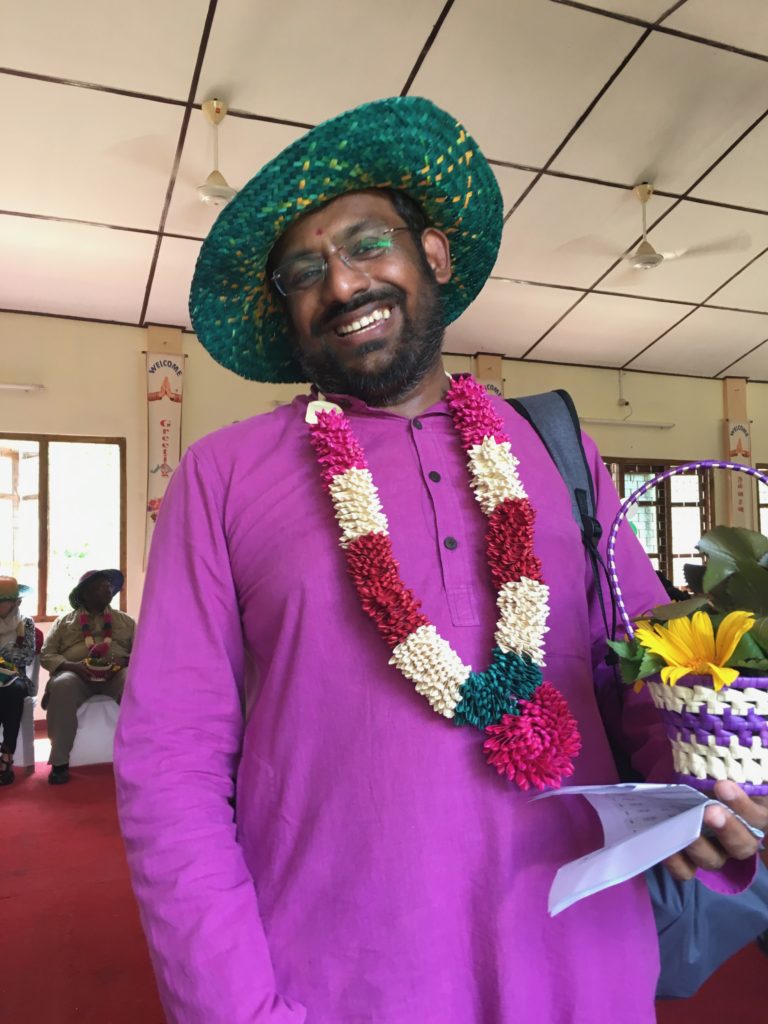
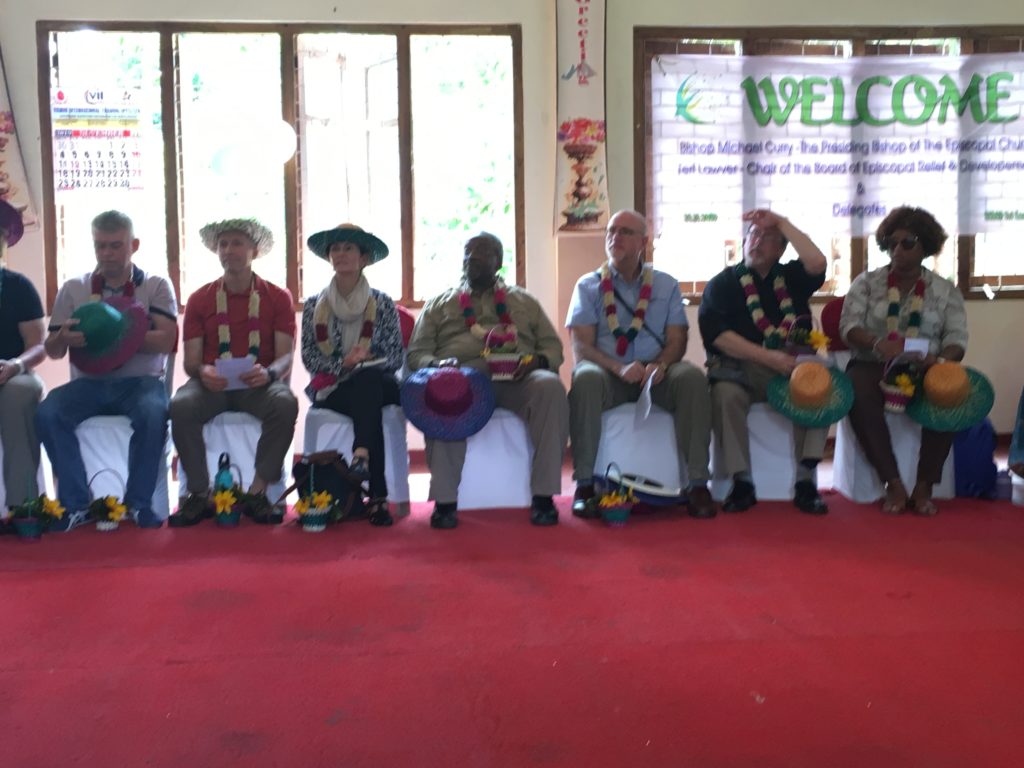
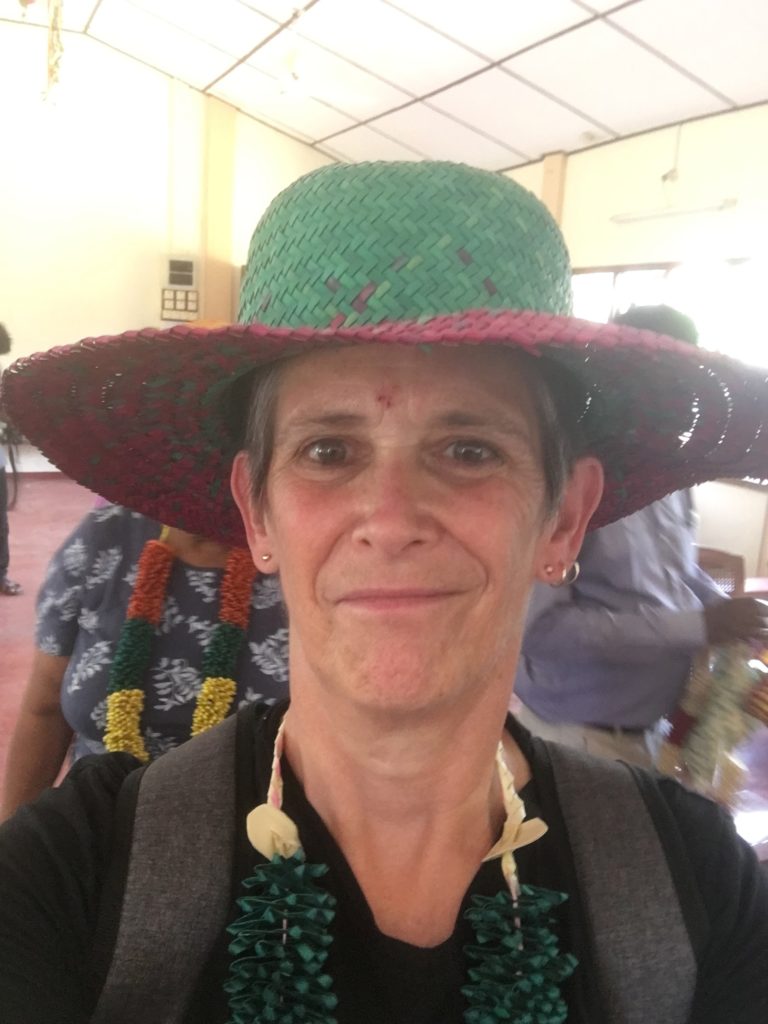
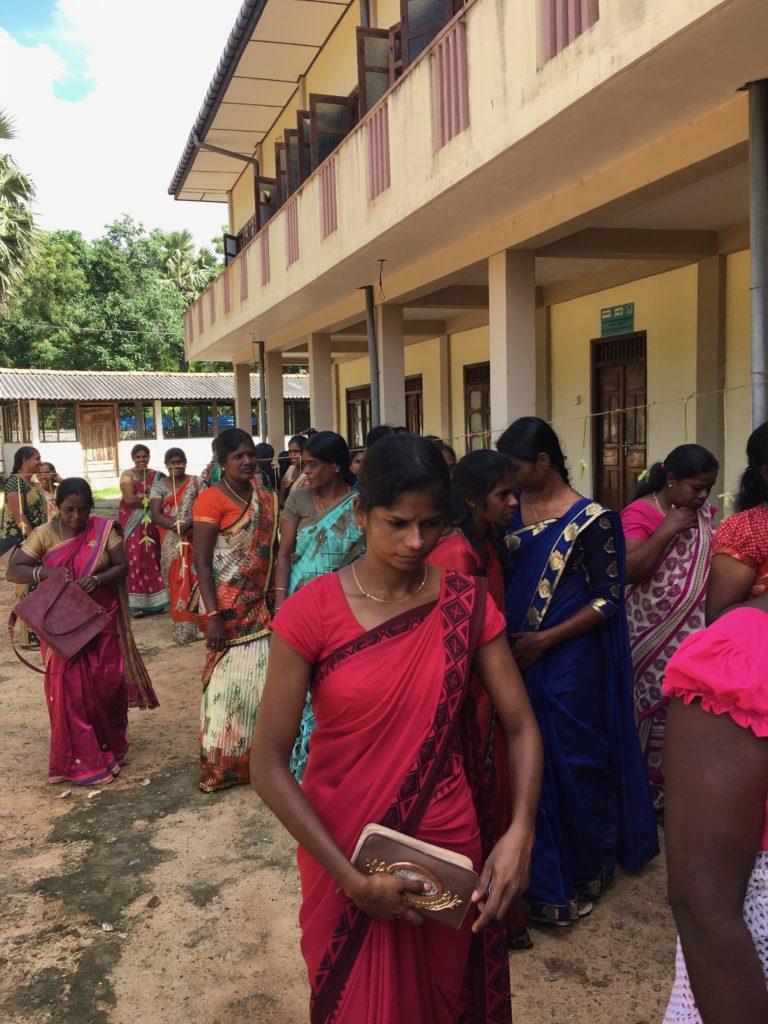
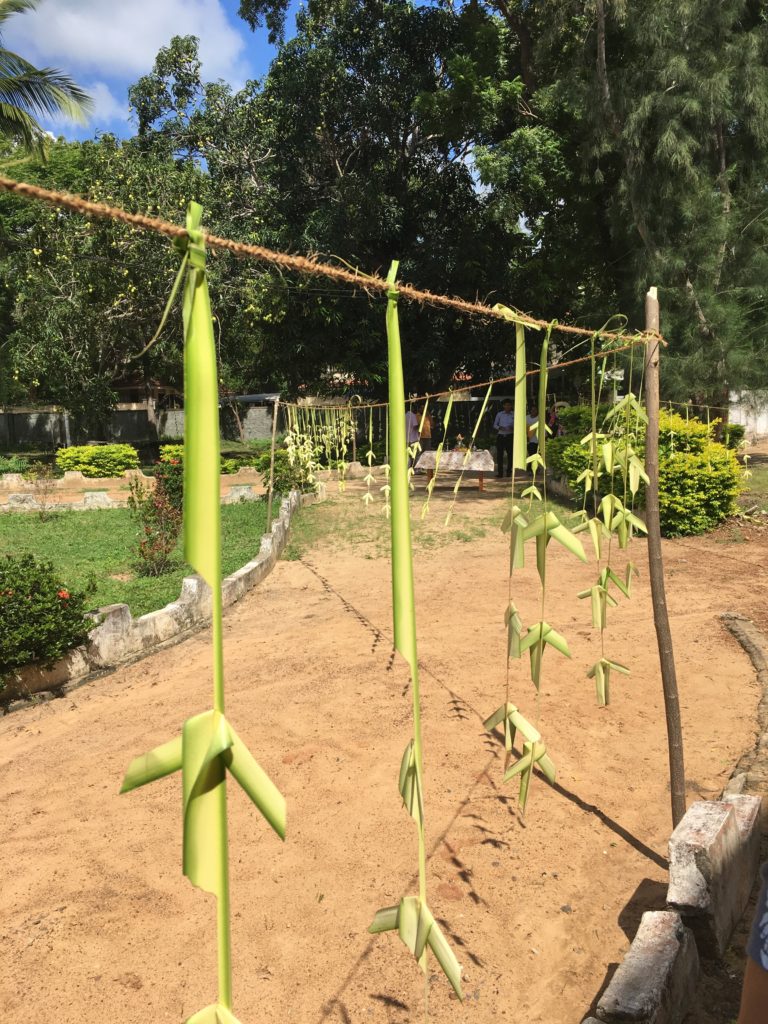
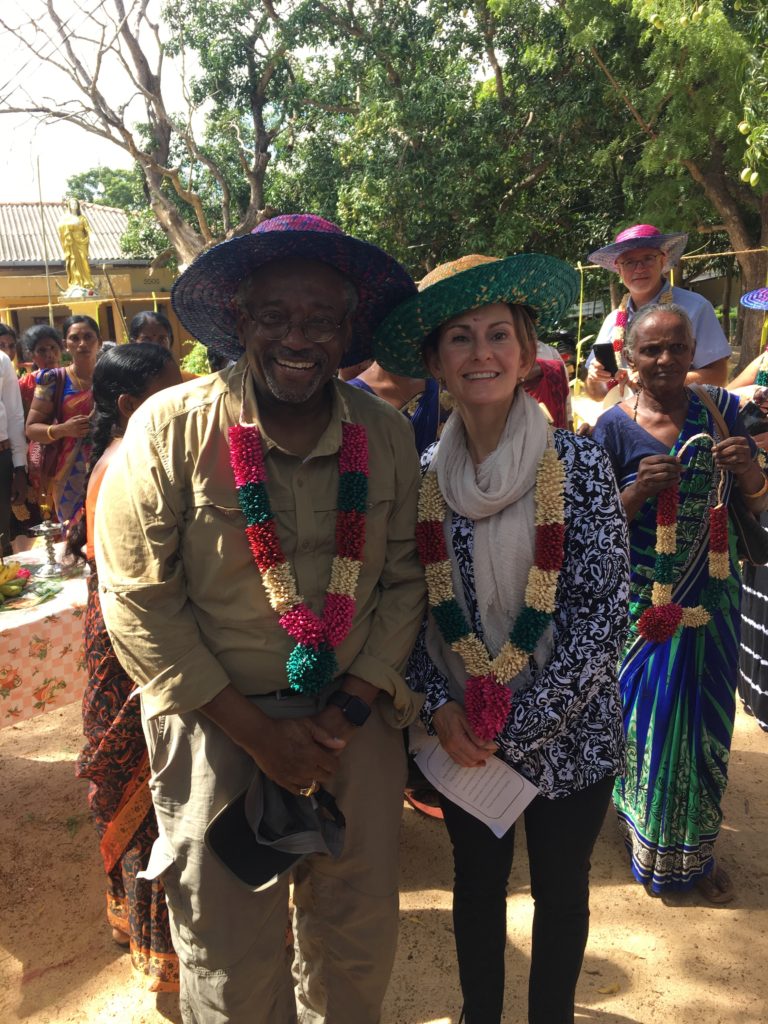
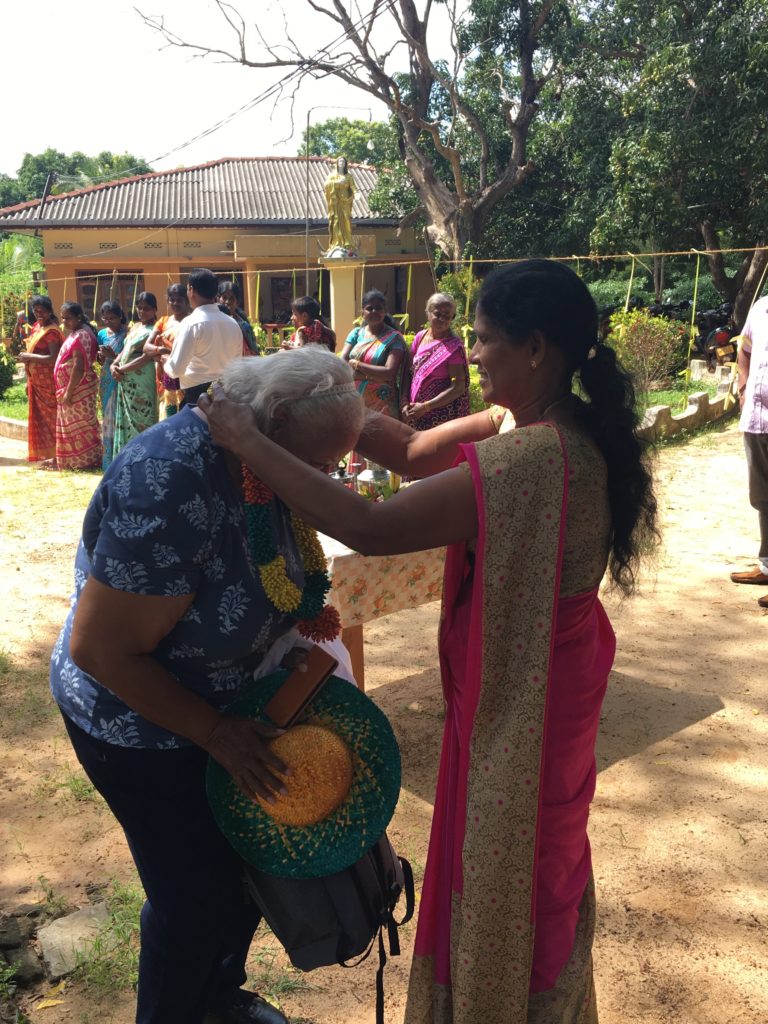
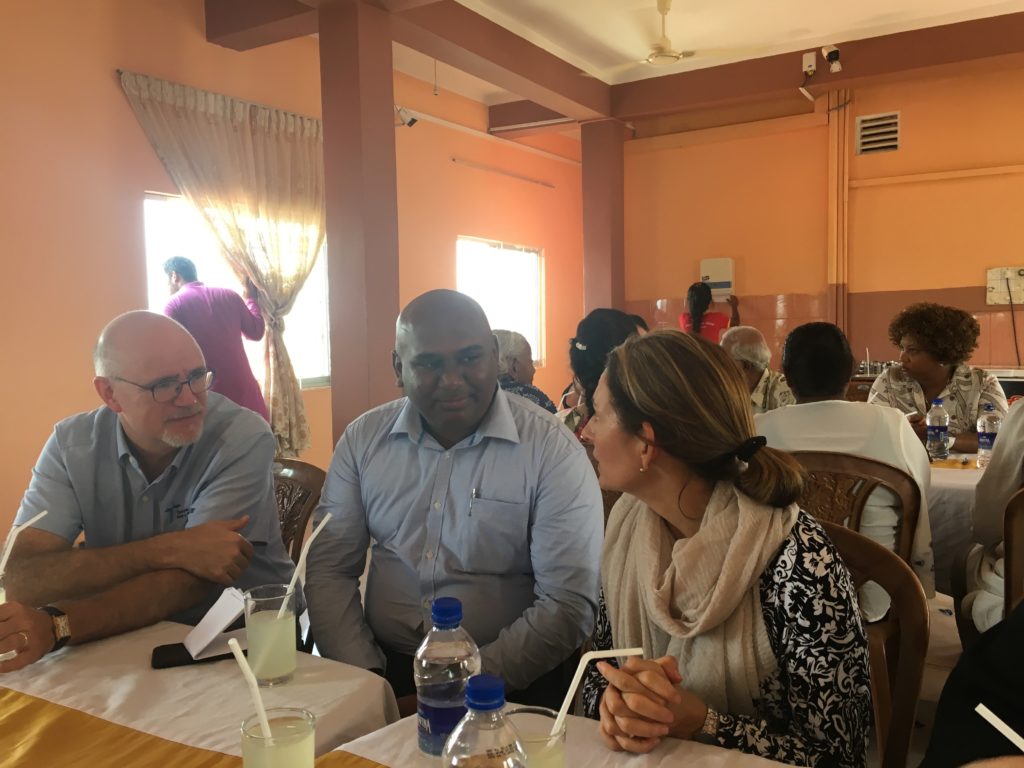
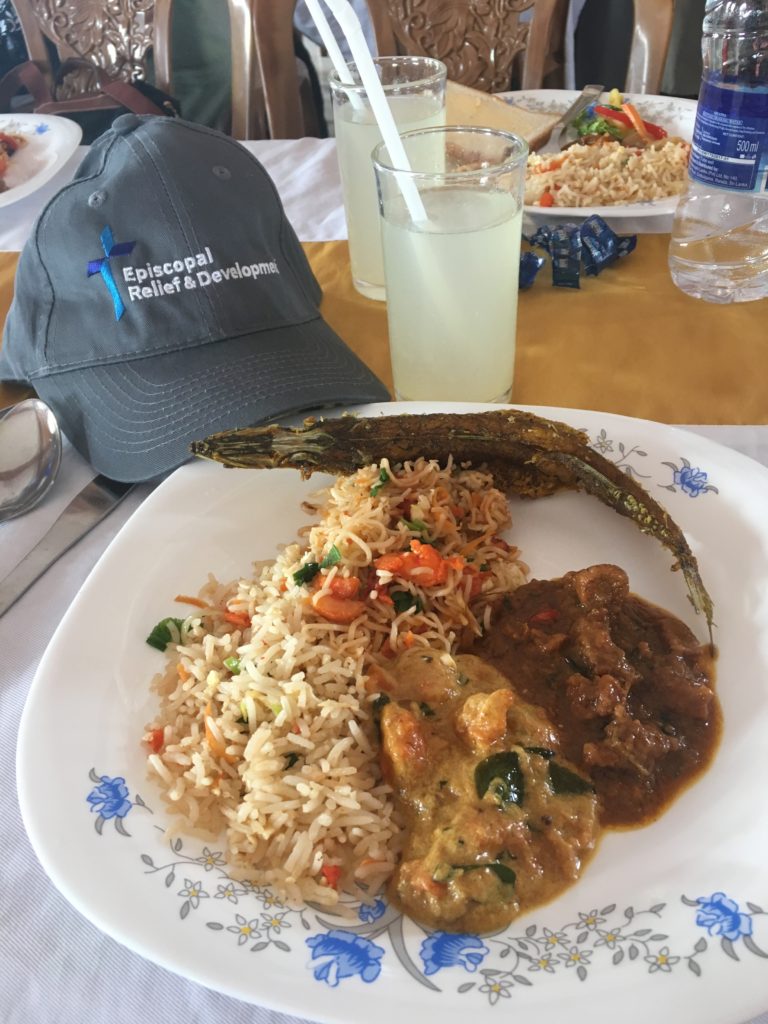
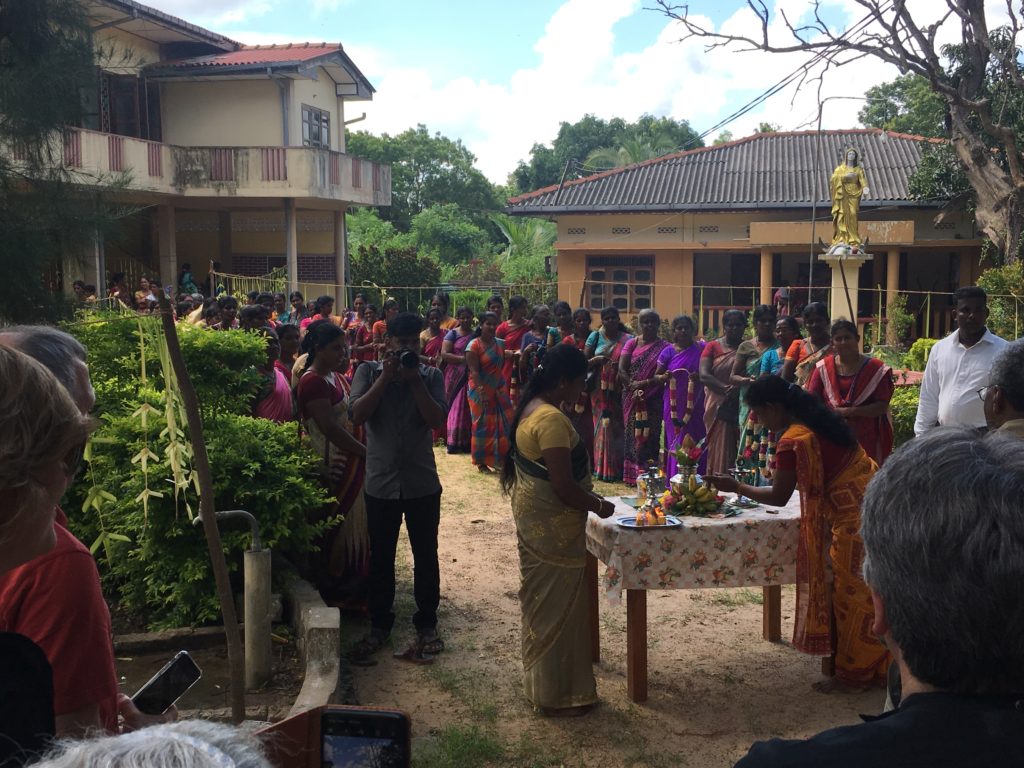
Sunday morning
24 November
Nuwara Elia
A short post today, as we are preparing for church, and then for a day trip in the country.
We spent yesterday touring a tea plantation and St. Paul’s (Anglican/Church of Ceylon) Church that is situated in the mountainous region of Sri Lanka- smack dab in the center of the island. Honestly, it looks like Switzerland but without the snow! Beautiful!
The hills here are covered with tea. Tea grows on small shrubs, about three feet high, and the women of the village are the appointed tea pickers. They spend 8 hours a day in the fields picking a minimum of 18 kilos each (two very large baskets-full) and then the tea is transported to the tea factory where it is put through a process of drying, sorting, grinding, roasting, and packaging. The work is labor intensive… and… the women earn 4.00 a day for their efforts.
We met, first, at the church and learned about the parish’s efforts to assist in educating the children of the village and to provide guidance and support for the families here. It is a system that is economically oppressive; few individuals are able to break away and move to the city to attend university and receive training in anything other than agricultural manual labor. So it is a generational system of benign oppression with generation after generation taking their place in the fields. The people live in “line houses” that are provided by the tea plantation owners. To say that they are modest dwellings would generous; many of the homes are simple shacks with outdoor kitchens. We had the privilege of visiting one family in their home and hearing about their life in the tea plantation. The father did most of the speaking. He was very proud of his son, a 12 year old cricket champ who dreams of leaving the plantation and becoming an engineer someday. We met the family’s matriarch and patriarch- the grandparents- who also had served in the plantation. We did not meet the mother, as she was out in the fields, picking.
The people of St. Paul’s spoke with confidence about the work that they are doing with the children of the village and the young mothers. The deacon-in-charge of the parish spoke with a lot of energy about his ministry to the people of the village. He repeated over and over that he was there to serve the community. The people in his church- about 120- would show up on Sundays no matter what he did…. but his fullest ministry was seen as being out and about in the line houses, eating, visiting, caring for the tea workers regardless of their religious affiliation. (Reminder, Sri Lanka is 80% Buddhist, then Hindu, with Islam and Christianity represented last.)
Please look at the accompanying post with photographs… they tell a much better story.
I know that I will never put a tea bag in a cup again without thinking of these people.
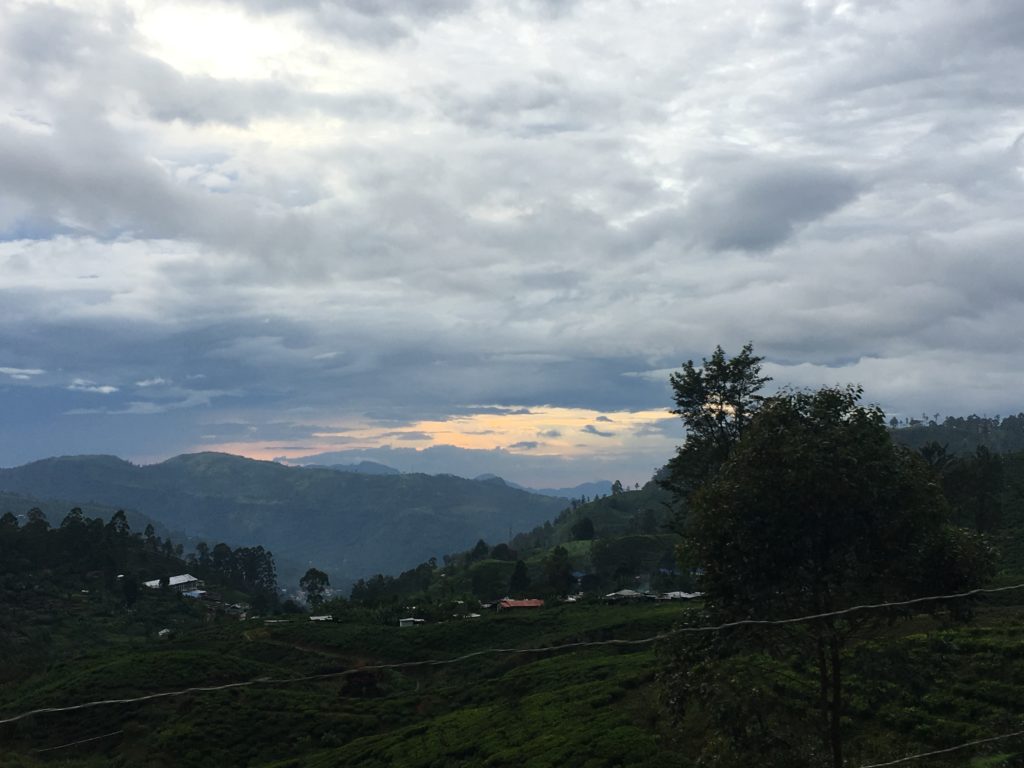
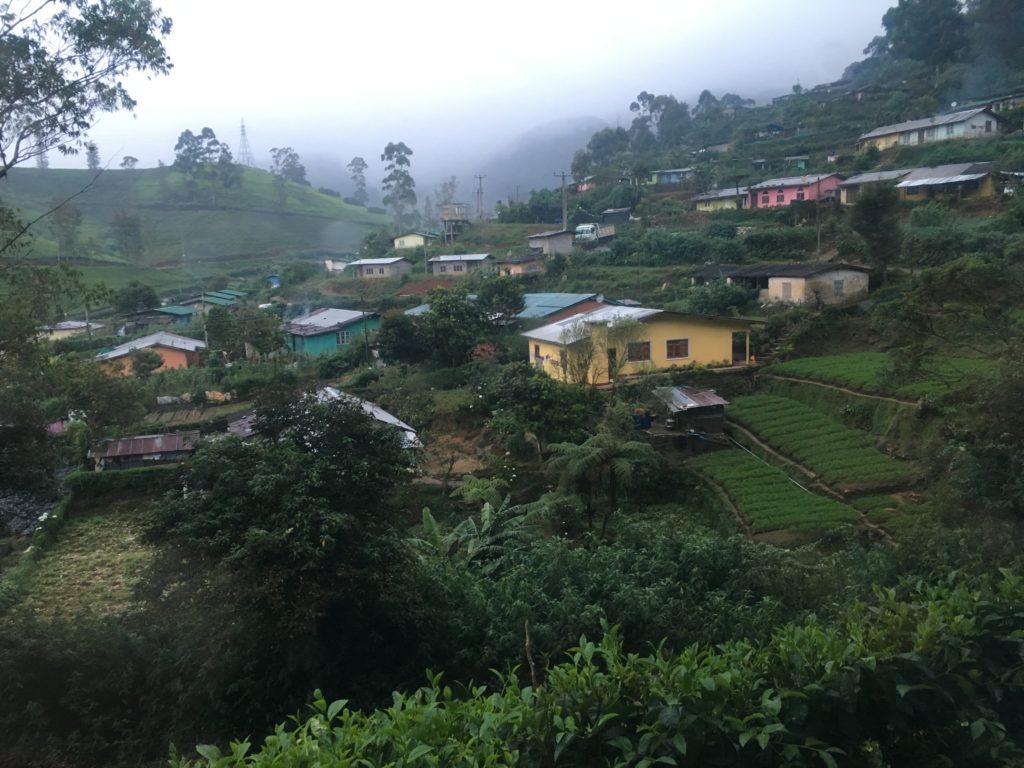
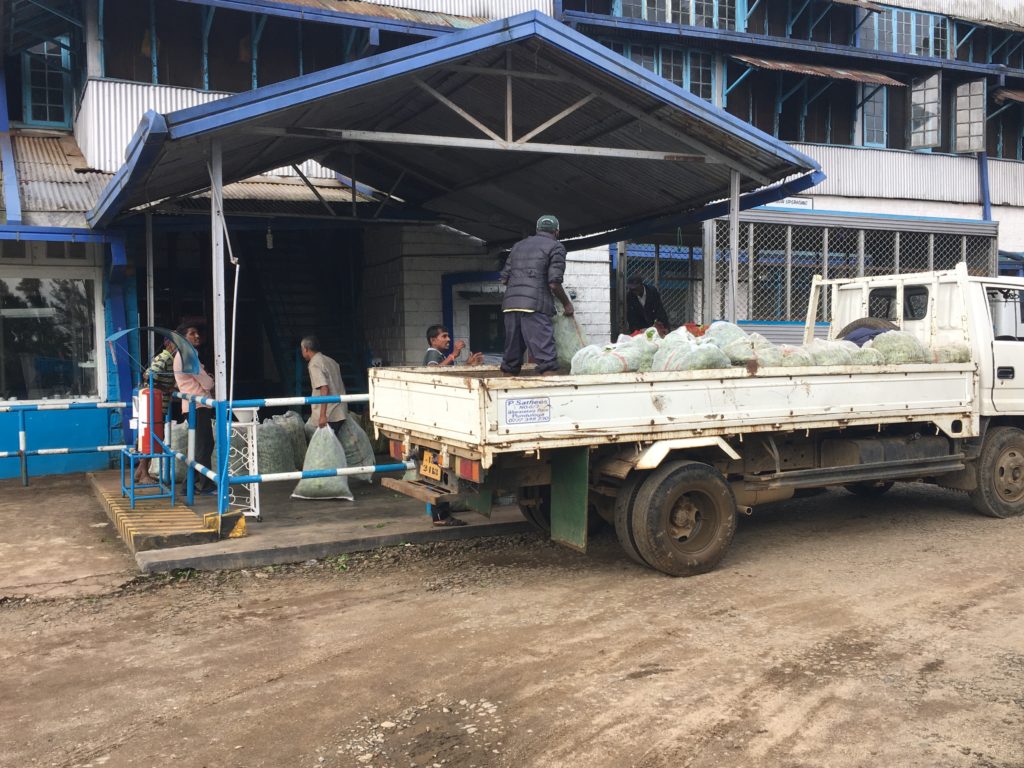
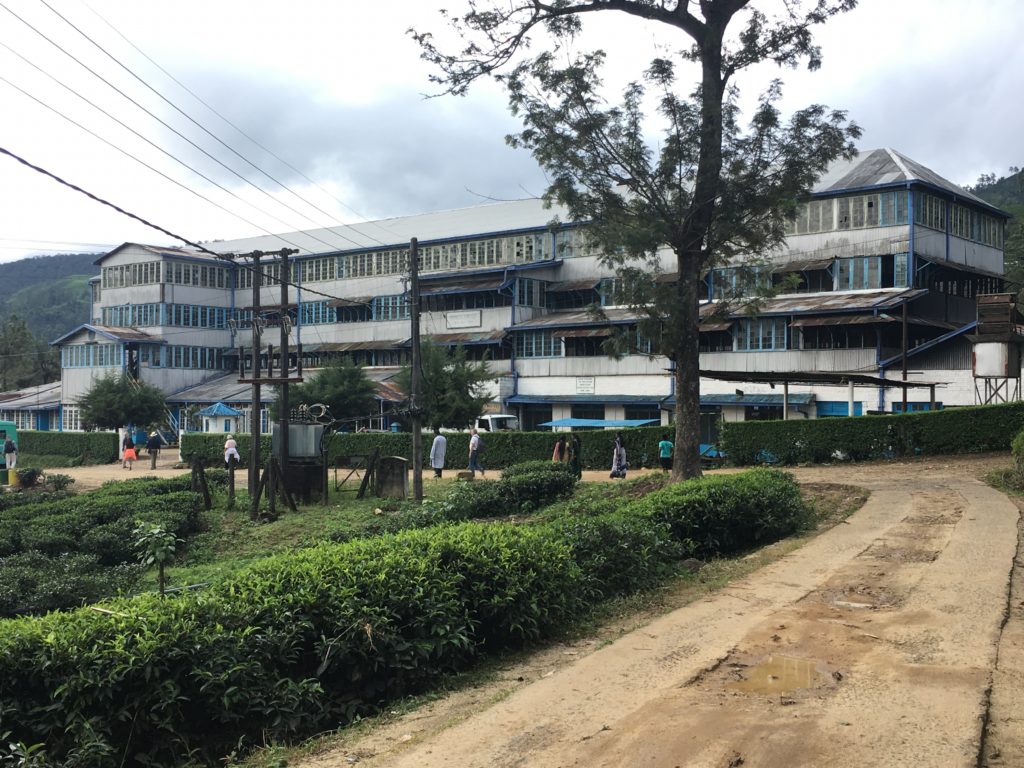
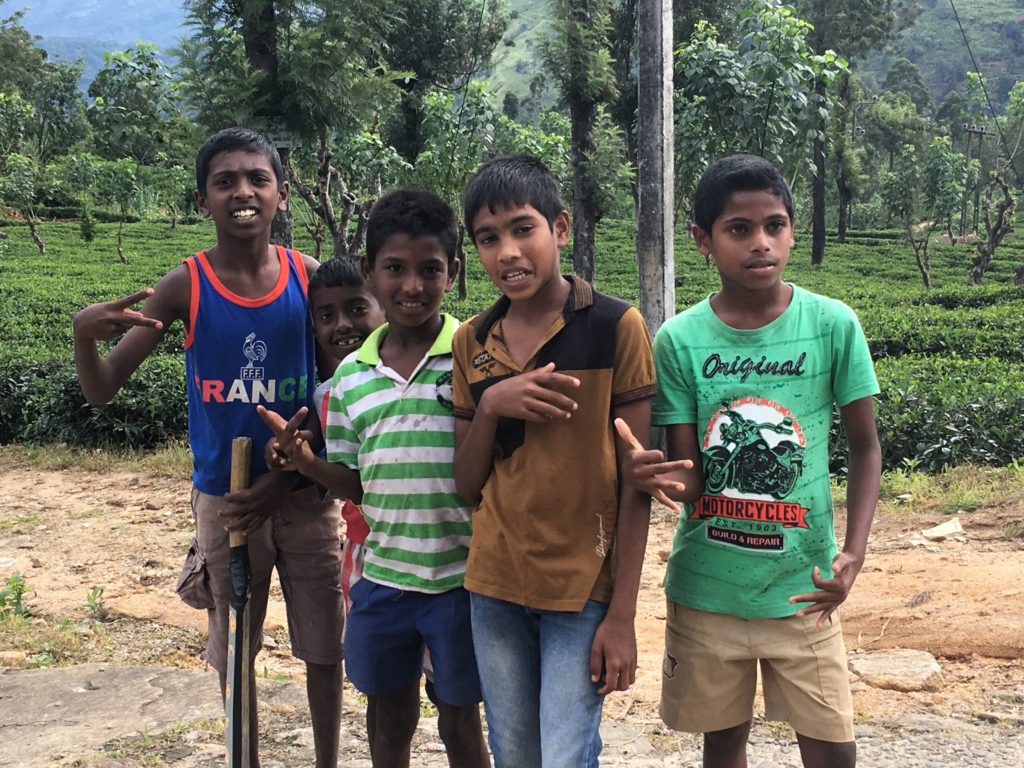
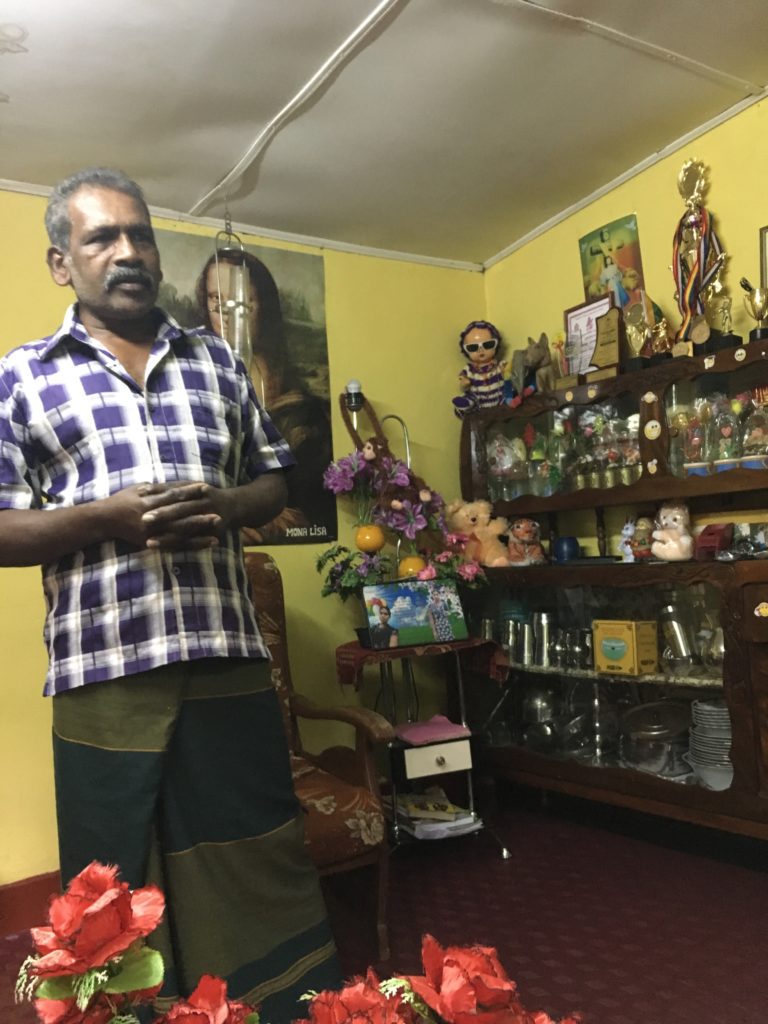
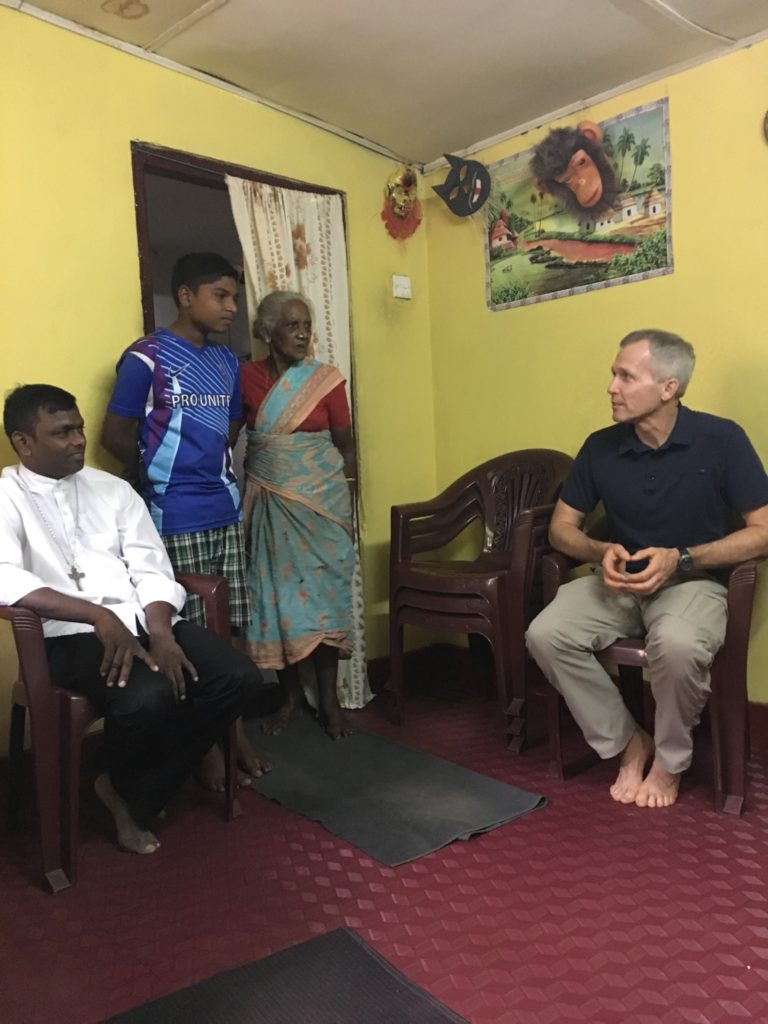
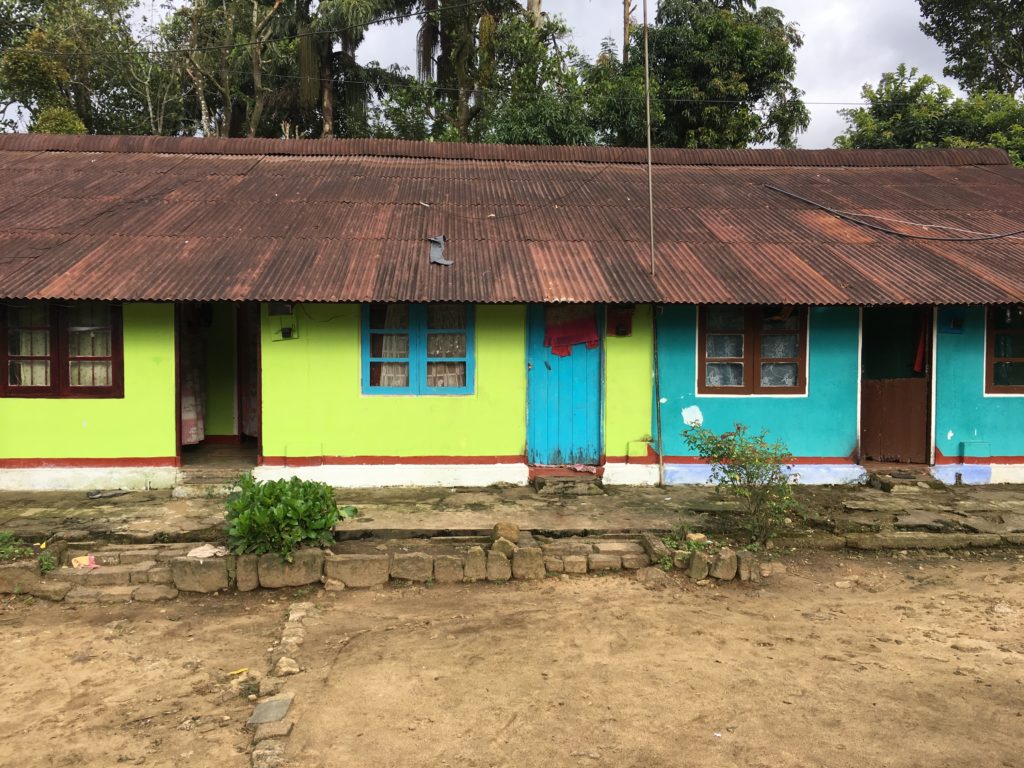
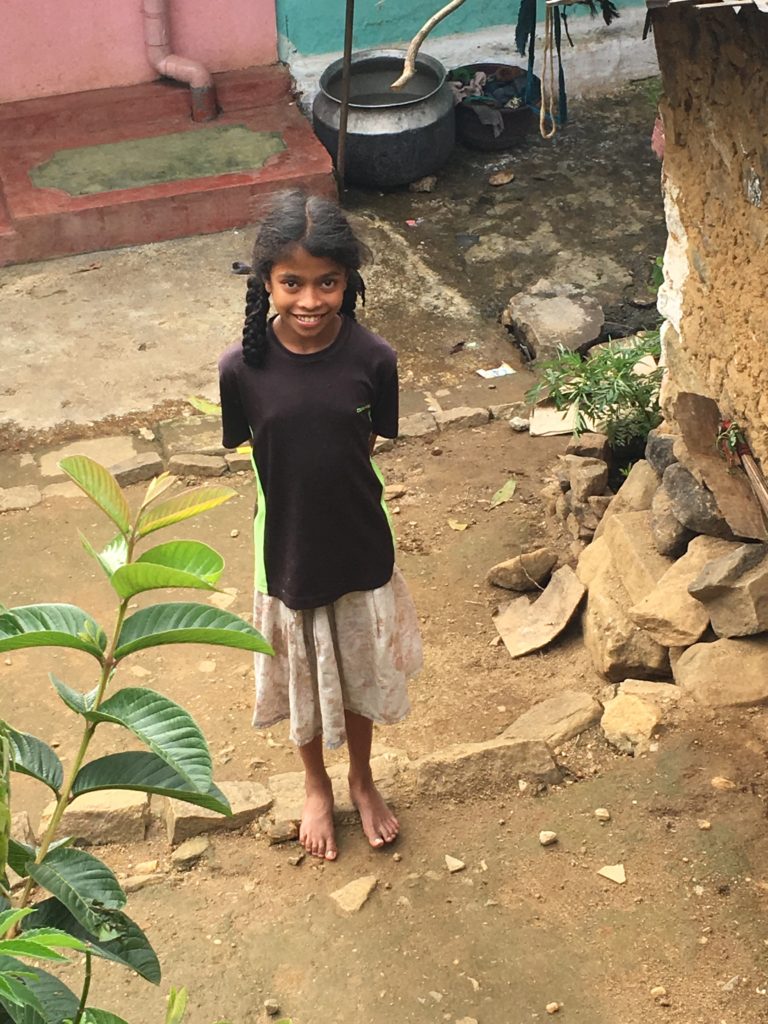
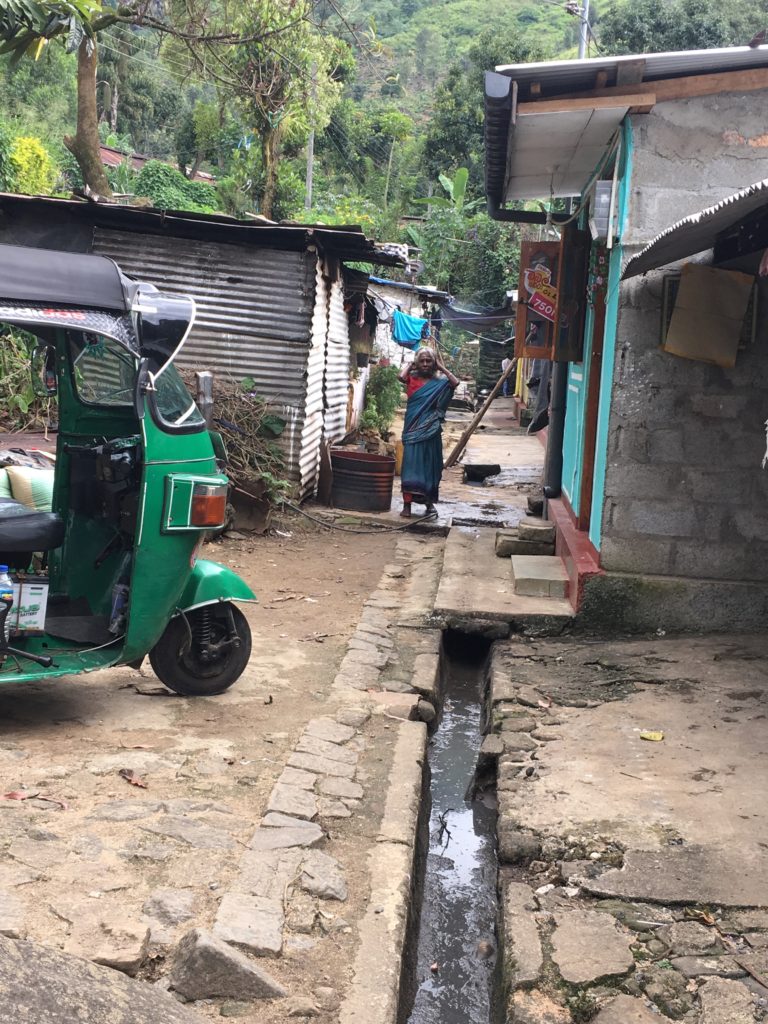
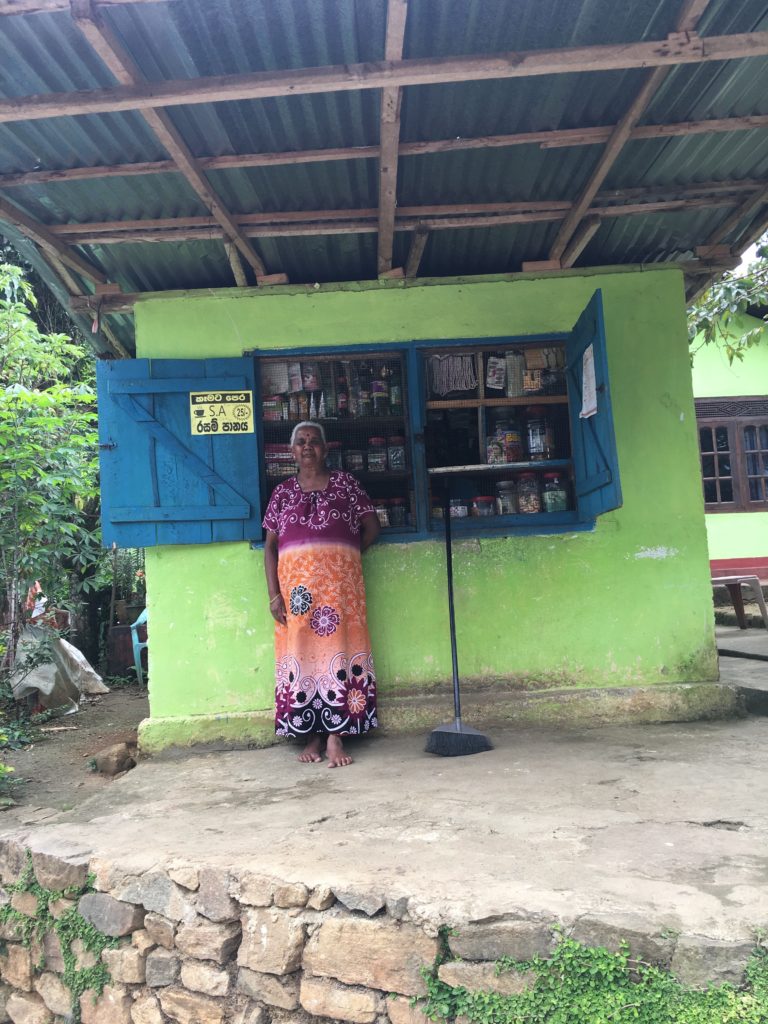
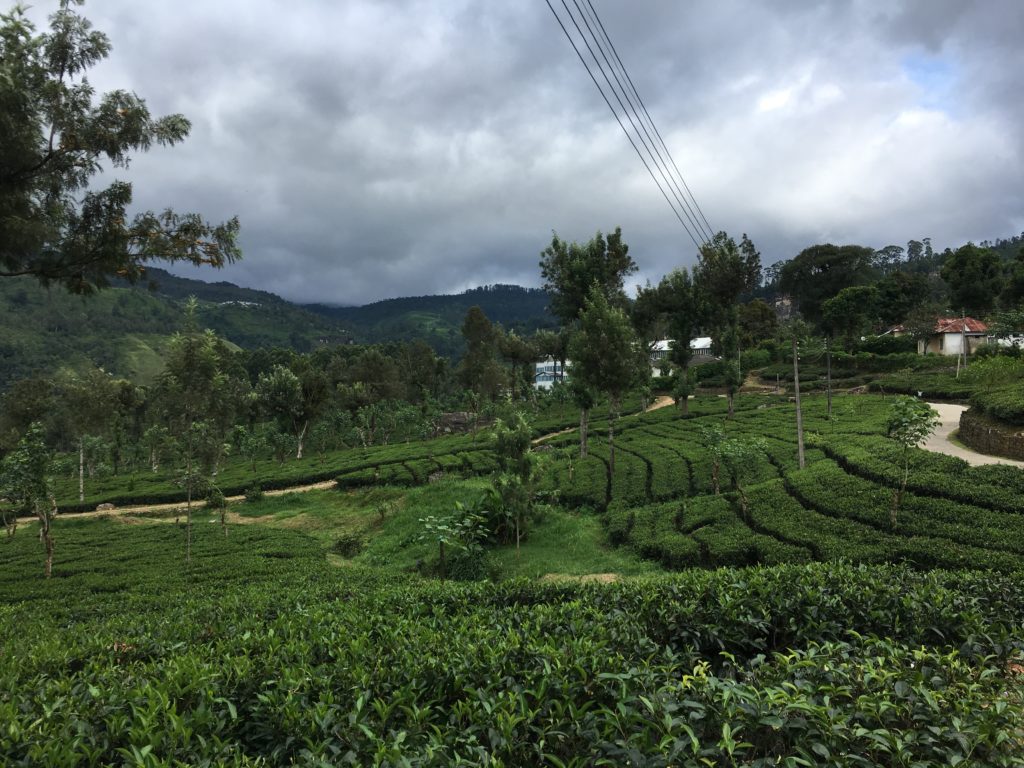
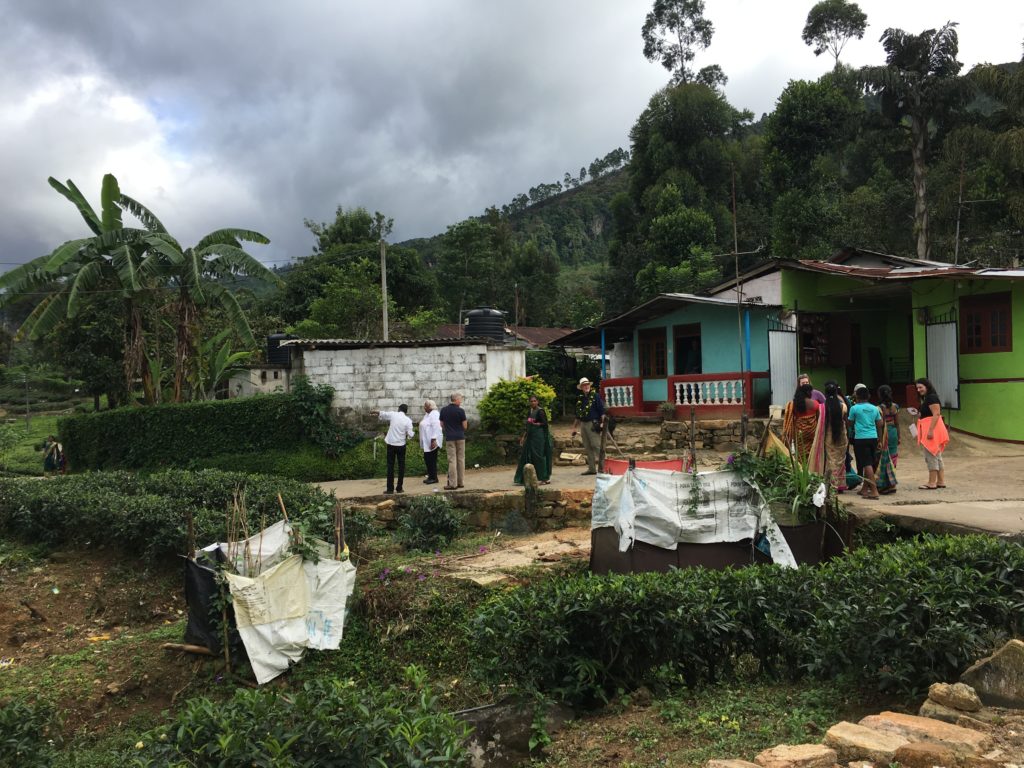
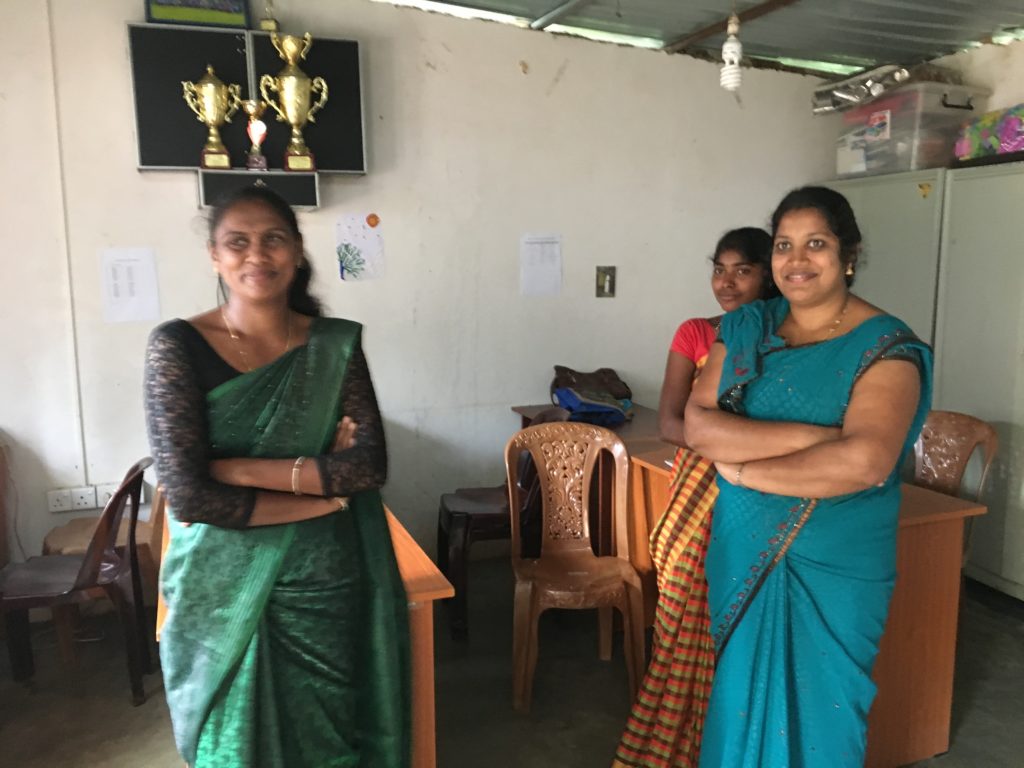
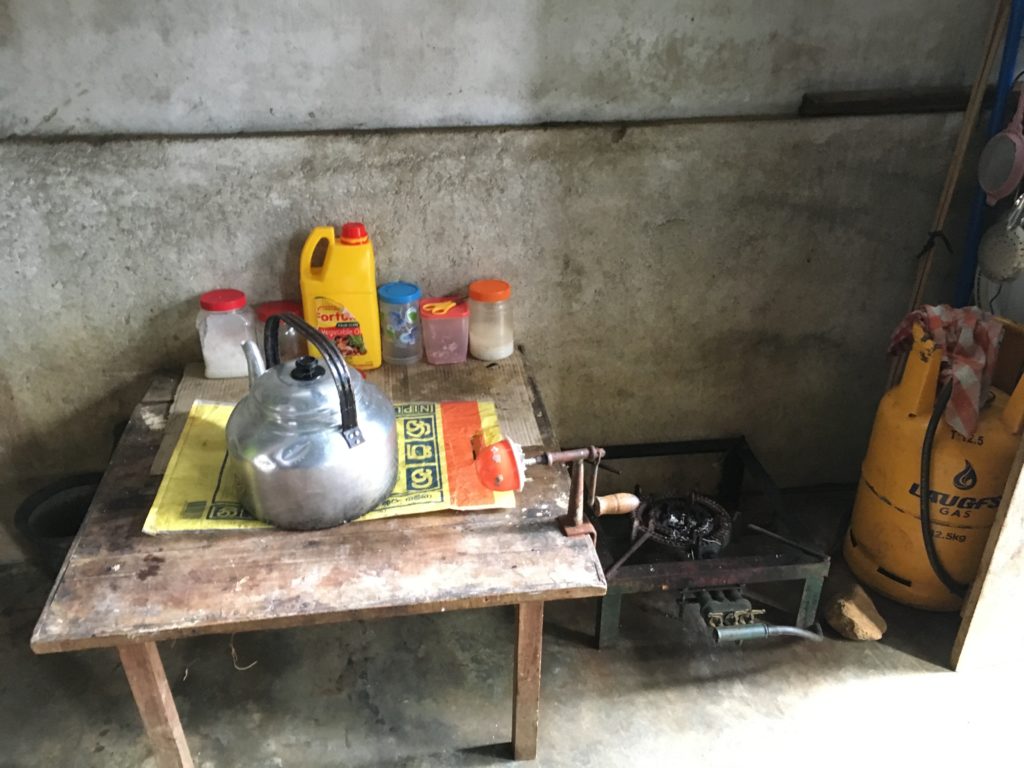
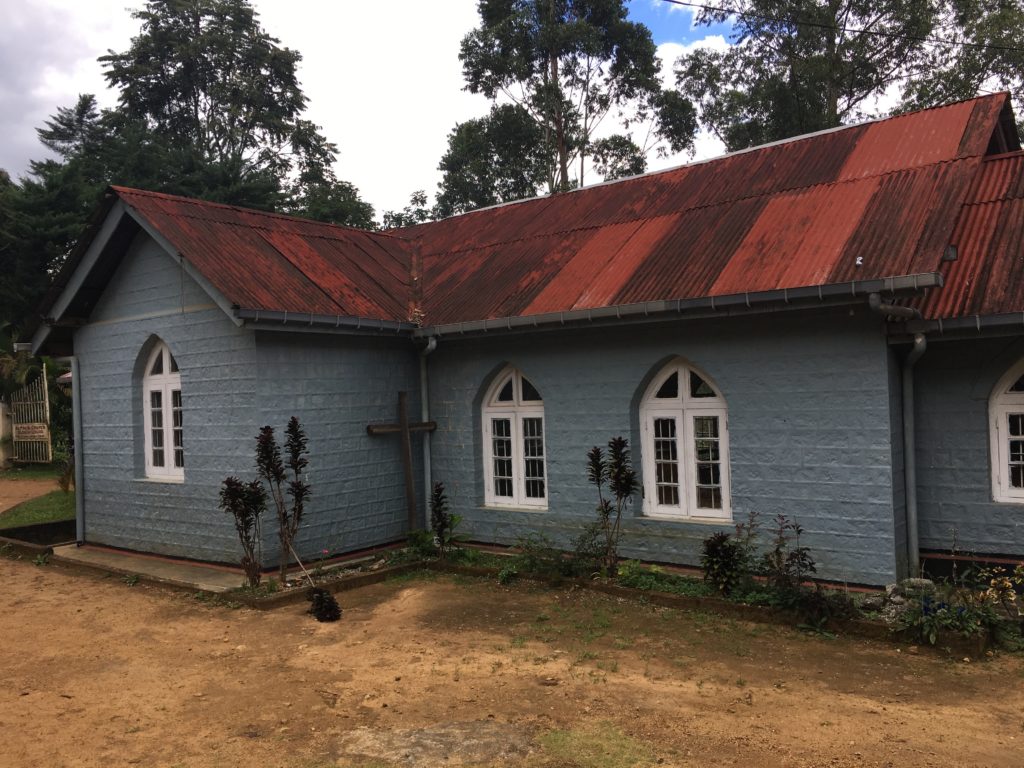
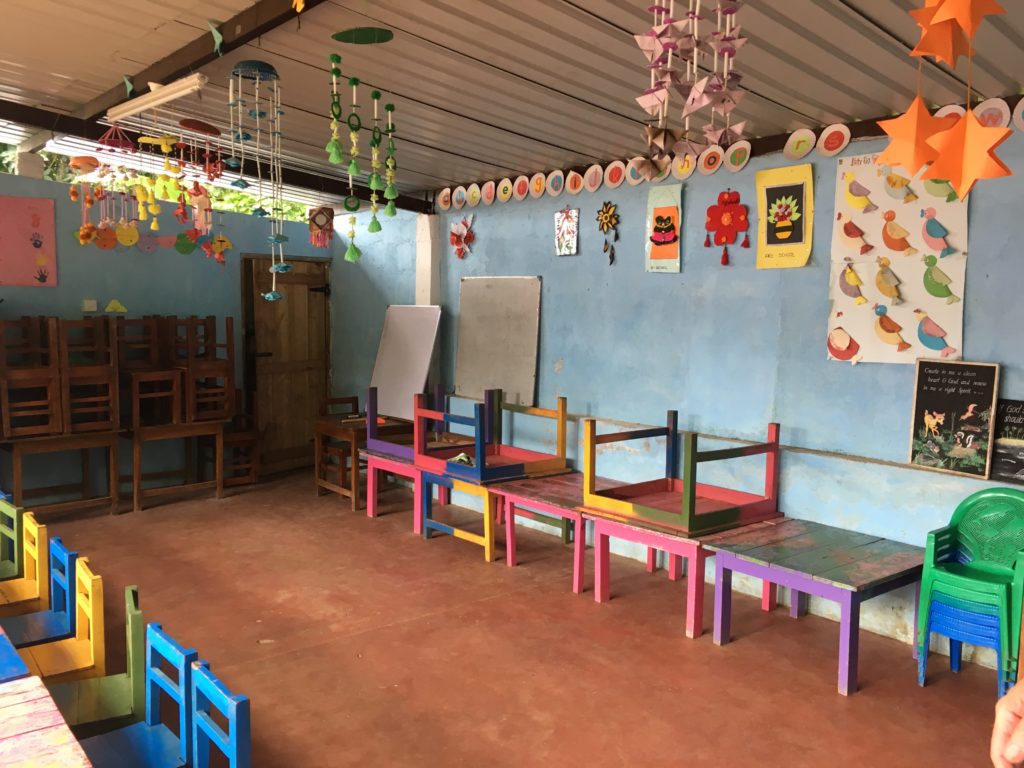
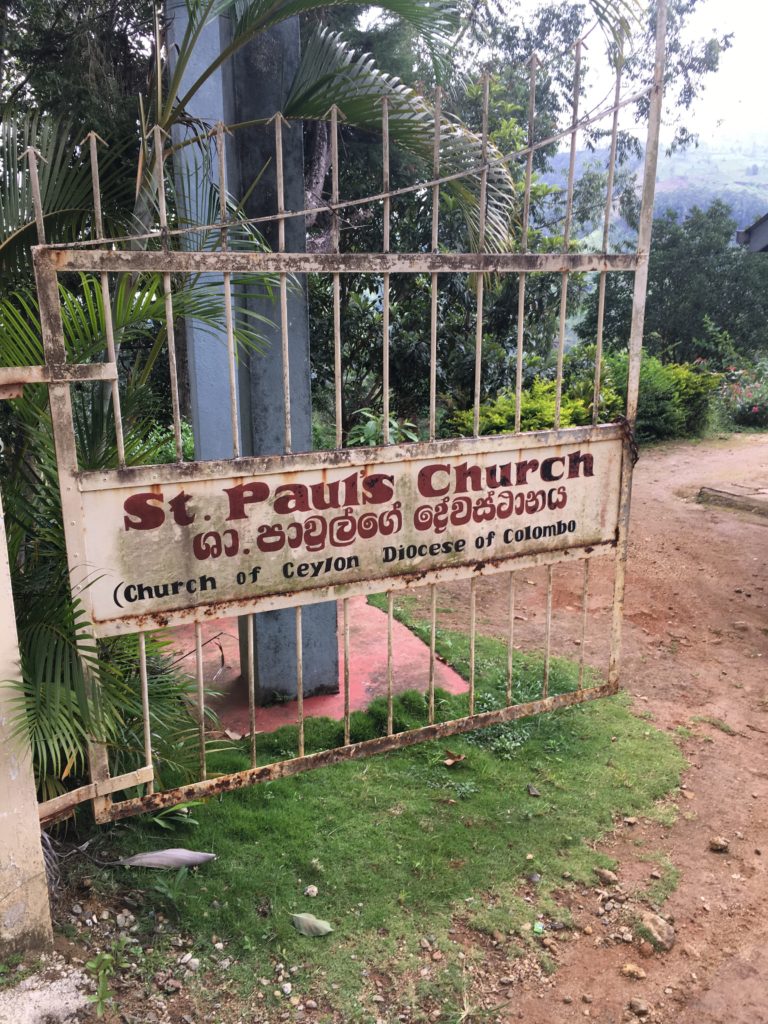
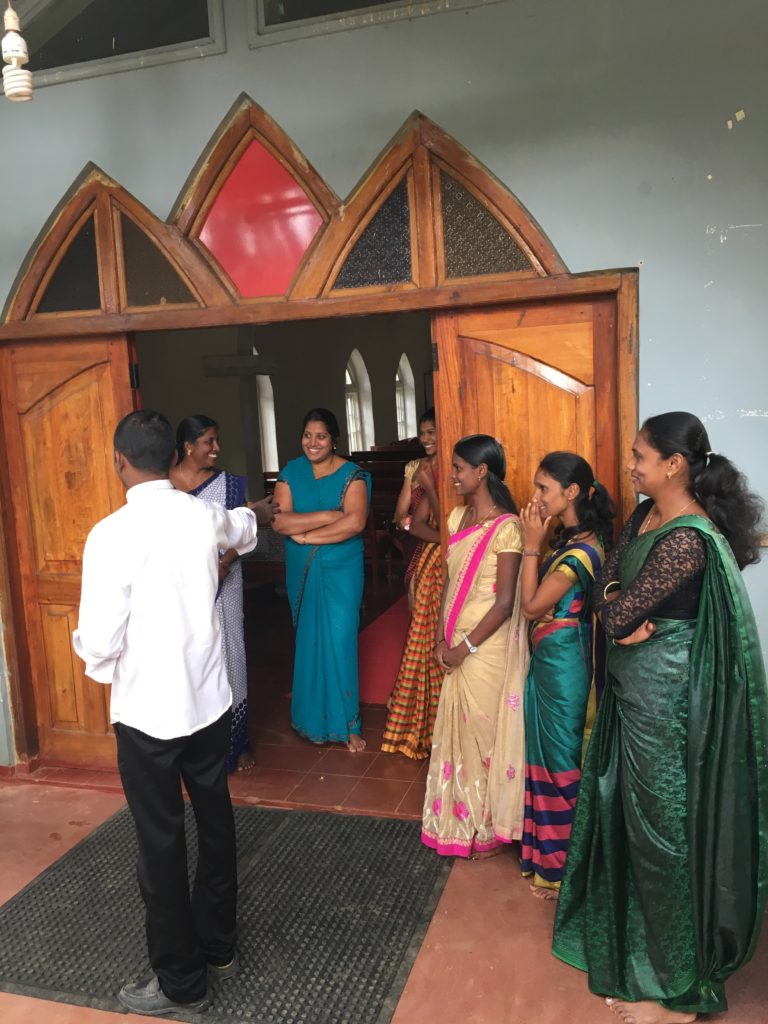
Monday
25 November 2019
Nuwara Eliya
Continued wonders and blessings-
Three experiences to share from yesterday’s travels: Sunday services at Holy Trinity Church in Nuwara Eliya, a walk through the market district of Nuwara Eliya, and a train ride (and return bus trip) from Nuwara Eliya to Oriya and back.
First, a word about Nuwara Eliya- it is a small city in the center of the country of Sri Lanka. as the crow flies, 175 km (108 miles) from the capital city of Colombo, but a very lengthy car ride- about 5 hours- due to the terrain. The city of Nuwara Eliya is in the mountainous region of Sri Lanka. In fact, the city is in the shadow of Mount Pidurutalagala, the tallest mountain in Sri Lanka. The cool, wet climate in this region makes it ideal for growing tea, and so the hills are covered with tea trees belonging to numerous tea companies hosting “plantations.” (I learned yesterday that tea grows on trees, not shrubs, but the trees are constantly pruned and trimmed to a manageable 3 ft tall for the purposes of easier picking.)
Nuwara Eliya has a much different feel than the other two cities that we have visited. It is sometimes called “Little England” (a doorman dressed in a Beefeater’s uniform told me this) and the social/cultural flavor is one of a colonial hangover. We had lunch in a “club” that was surrounded by a golf course and looked like a Tudor mansion from the outside. Inside, the walls were adorned with taxidermy of wild boar, elk, and various large cats… and we were toured through the billiard room and gender segregated bars. Our two bus drivers/guides were only allowed to eat with us at our table after some amount of quiet persuasion. So, perhaps it is not a colonial hangover, but more active than I would want to believe.
Holy Trinity Church, Nuwara Eliya: This small whitewashed church surrounded by a small cemetery was the site of our morning worship service. The Rev. Genevieve Razim, one of our pilgrims, was scheduled to celebrate, and I had been asked to preach. It was a daunting task, for sure, trying to imagine, two weeks ago in the comfort of my living room in Mechanicsburg, what I could possibly have to say to a church full of people in a country that I had never traveled to, and on a feast Day (Christ the King) that is, for us, an important day, but that is not really even marked in Sri Lanka. I arrived with a sermon in hand that wasn’t my best, but that I thought might work and that would not completely discredit our traveling group. (It turned out fine, in the end, as things usually do.). More interesting than the exposition of the Word, though, were other parts of the service- the trilingual translation (Sinhalese, Tamil, English), the sound of familiar prayers in other tongues, the great number of children present in the service and so excited to receive the sacrament (the little boys elbowed each other out of the way to take their place at the altar rail), the reverential prostrations of the altar party in front of the altar before sharing communion, the familiar hymns sung with gusto (“Stand up,Stand up for Jesus” ), the custom of those in the altar party to go barefoot, and the coming forward of all the children at the very end of the service for personal blessings from Genevieve and me. It was overwhelming- at least 50 bright eyed children on their knees, some with their eyes shut tight, others grinning from ear to ear – all looking for a touch, a cross traced on the forehead, a blessing, an affirmation. It was my favorite part of the entire trip. The young curate,The Rev. Hashan De Mel, was kind, accommodating, energetic and charismatic. He is overseen by one of the Archdeacons of the Diocese who also joined us at the altar. Following the liturgy, we were escorted to the parish hall where a formal tea had been laid out for our party at a head table, and the rest of the congregation sat in rows of plastic chairs facing our table. We were served delicious yeasted sesame rolls stuffed with spicy onion marmalade and tea flavored with milk and brown sugar.
After church we retuned to the hotel for a quick change and then we walked through the market district of the city. It was just as you might imagine- a city market with vendors in their various stalls selling meat, produce, fish, grains, dry goods. I was struck by the beauty of the fruits of the earth and the seeming abundance of the goods in this very poor country. The displays of produce were breathtaking. We could not buy anything, of course, because transporting food is verboten, but it was a sight to see. Check out the photos in the accompanying photo post. We did find one souvenir shop tucked in the corner of the market where we practiced our bargaining skills on ebony wood elephants.
The rest of the day was devoted to a train excursion for exploring more of the tea region and seeing the sights in this stunningly beautiful countryside. We rode on a train with a large viewing window in the back and for an hour or so, wove our way through mountain passes, through long stone tunnels, up steep hills (“I think I can, I think I can…”), over shaky bridges, and past postcard worthy scenes of tea plantations, waterfalls and forests. As the ride wore on, the clouds thickened, and there was a mystical feeling to our journey through the hill country. Our bus and driver met us at the village of Oriya (just beyond the highest point in all of Sri Lanka) and the two hour descent down winding switchbacks on partially paved roads in the dark was equally- if not more- thrilling than the train ride. We returned to the hotel for dinner in the Thai restaurant and some Lion lagers- much appreciated.
My next post will be the final travelogue post… and then I hope to have time to create another post with some summary reflections in the next few days. For now, we are preparing for the travel home; stuffing souvenirs into already full suitcases and trying to select outfits that will keep us comfortable for the 4 and 18 hour flights ( with a 6 hour layover in Dubai in the middle…)
Nuwara Eliya Church of the Holy Trinity
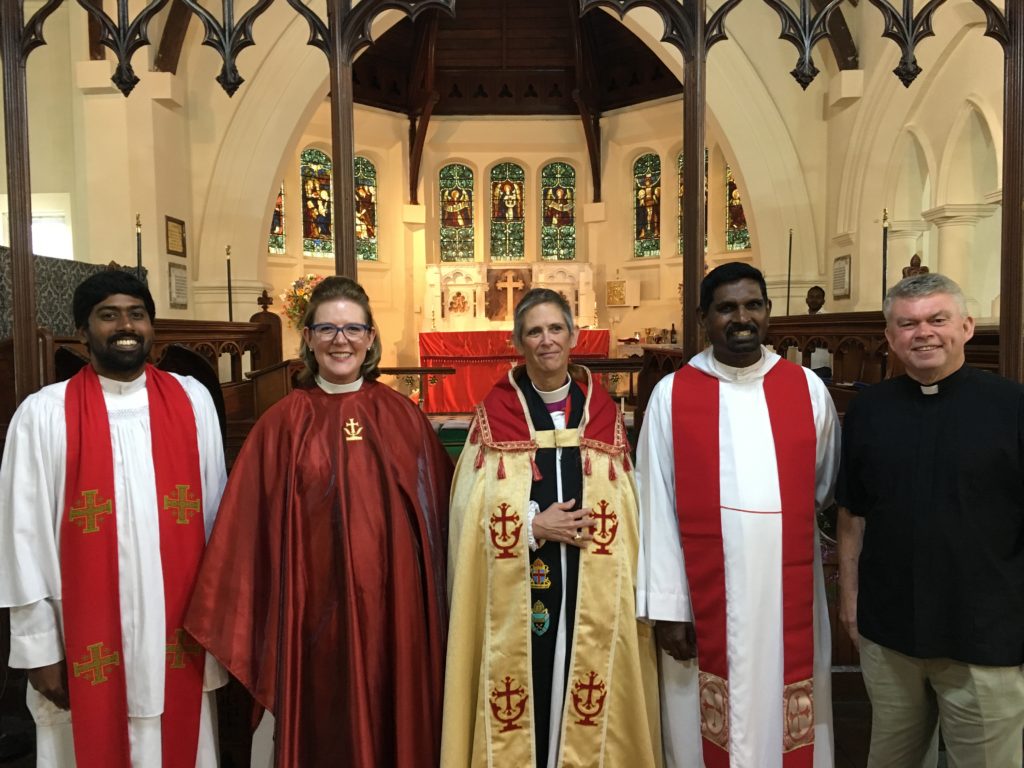
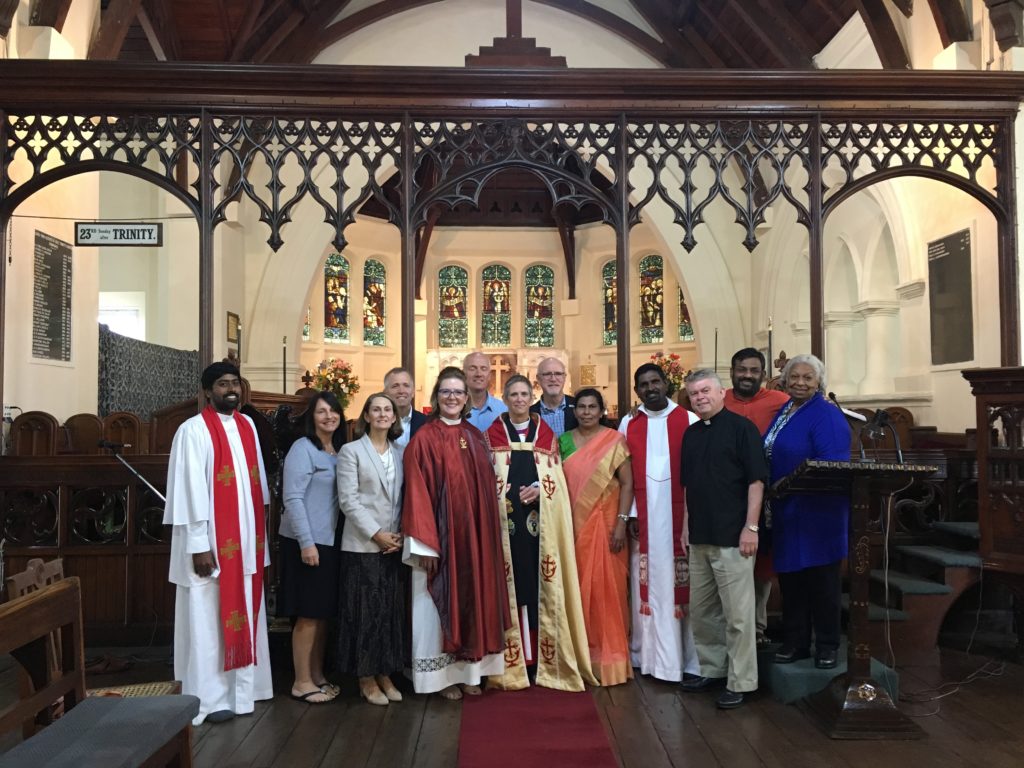
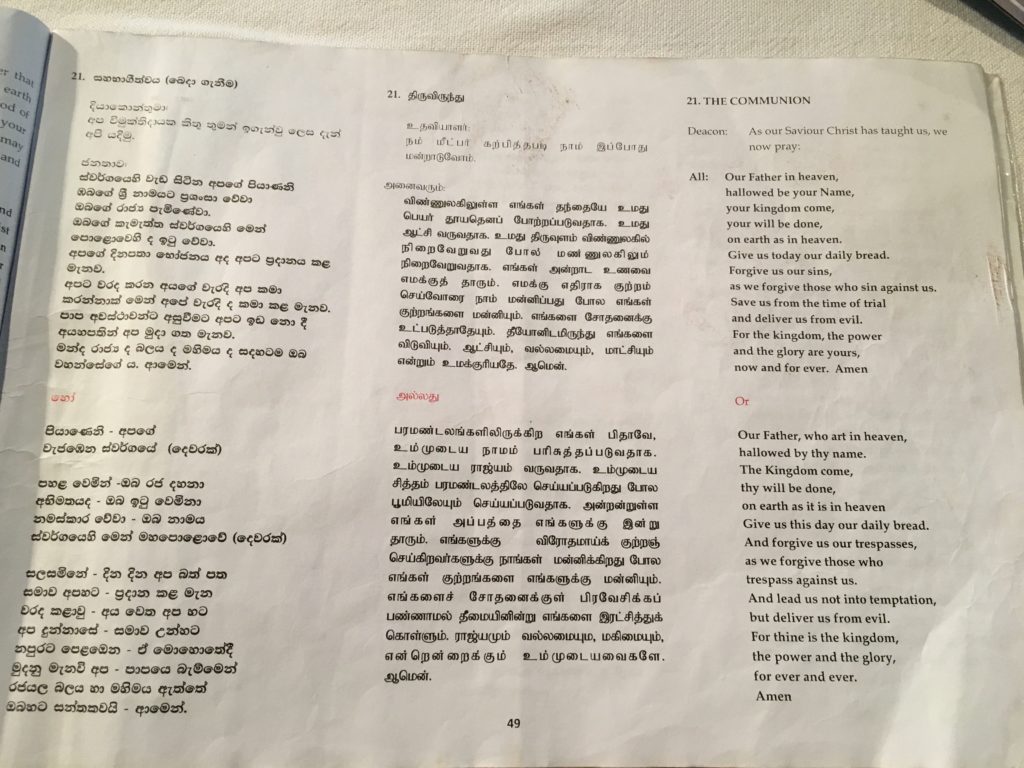
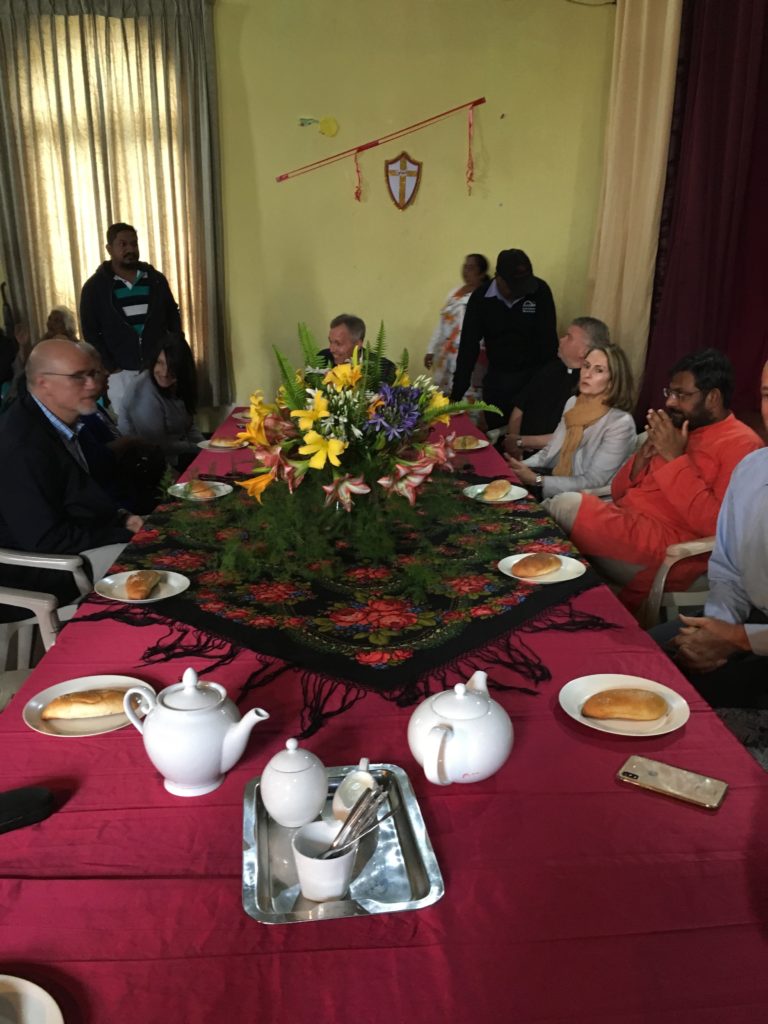
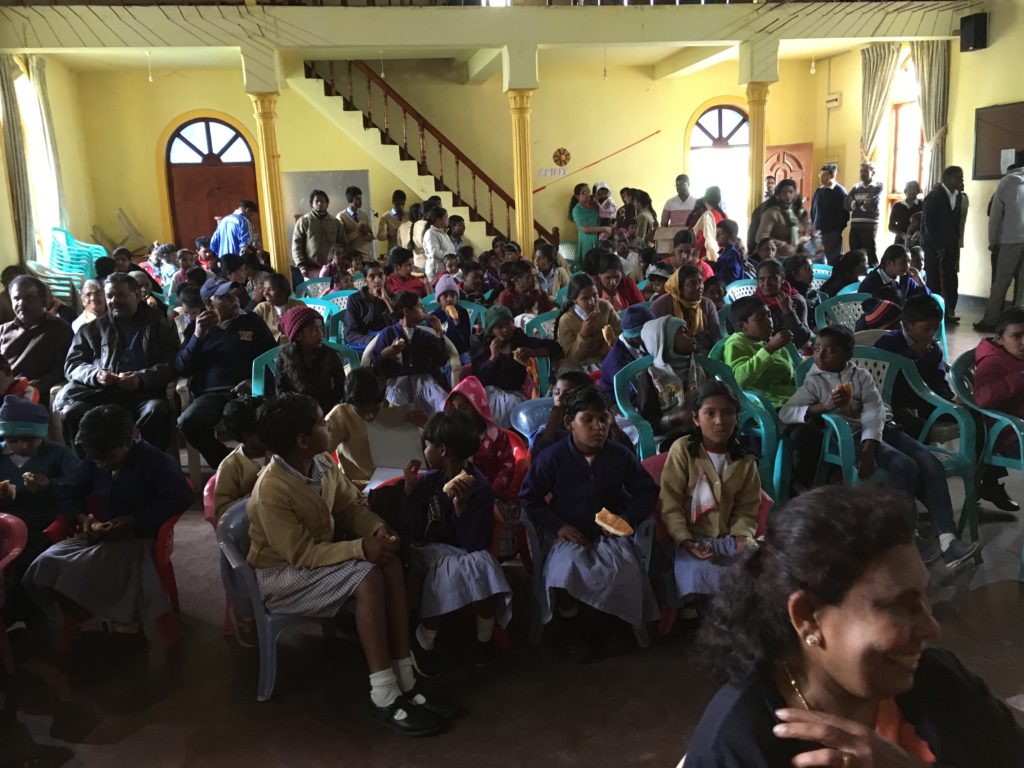
Market Nuwara Eliya Sri Lanka
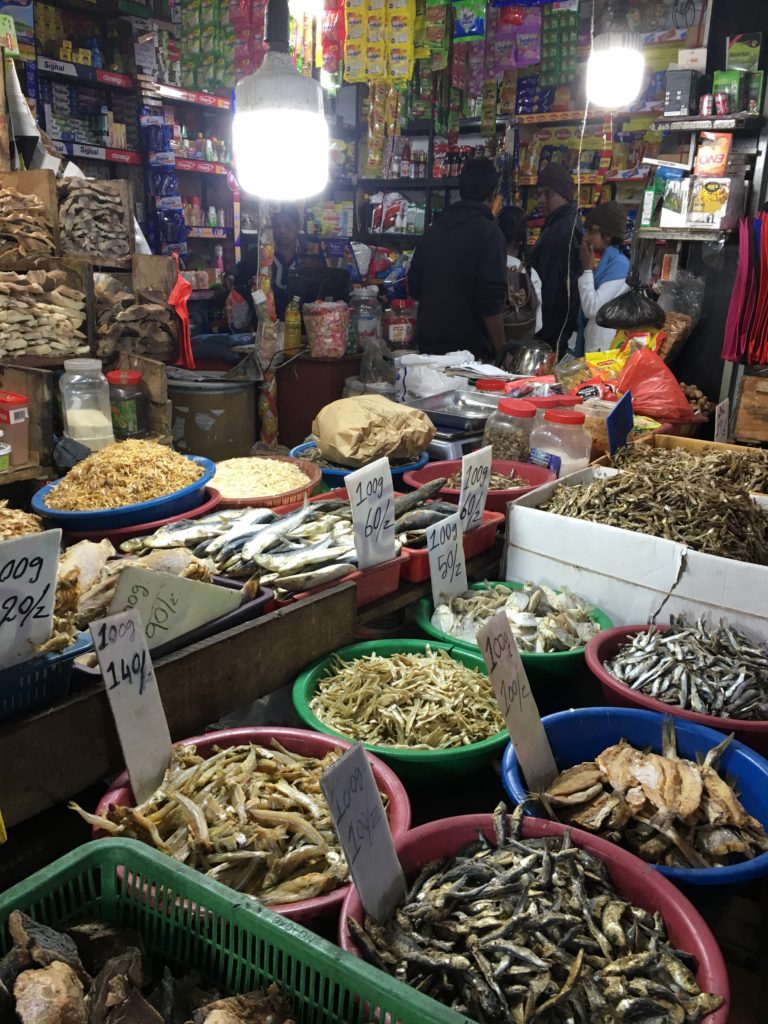
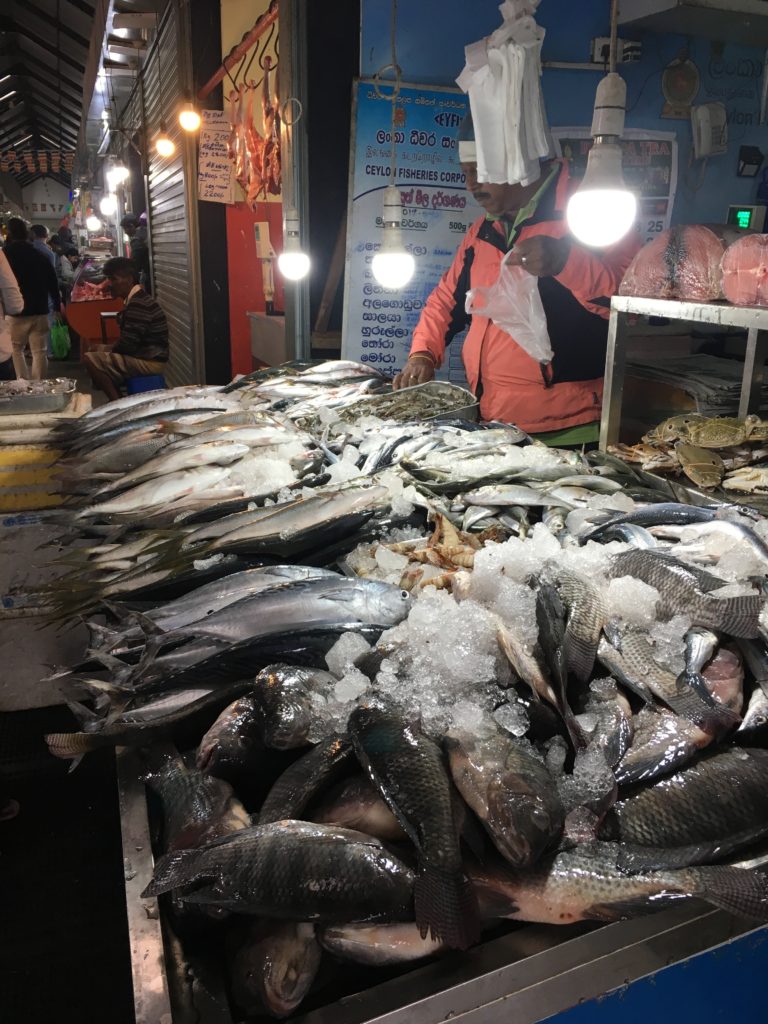
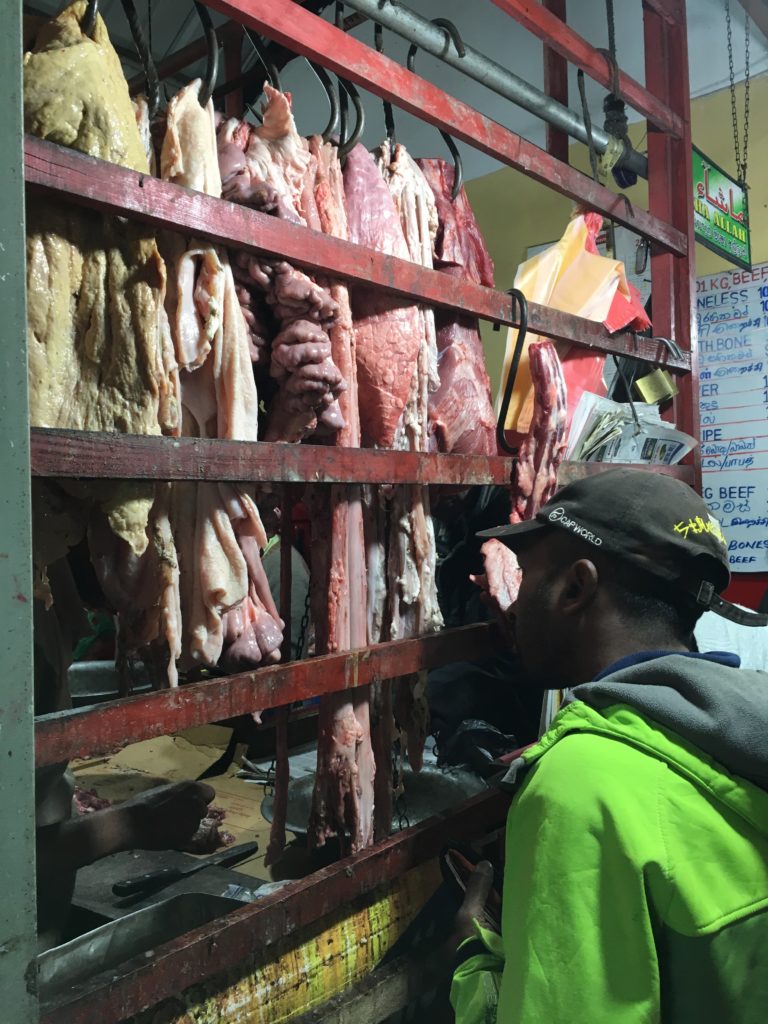
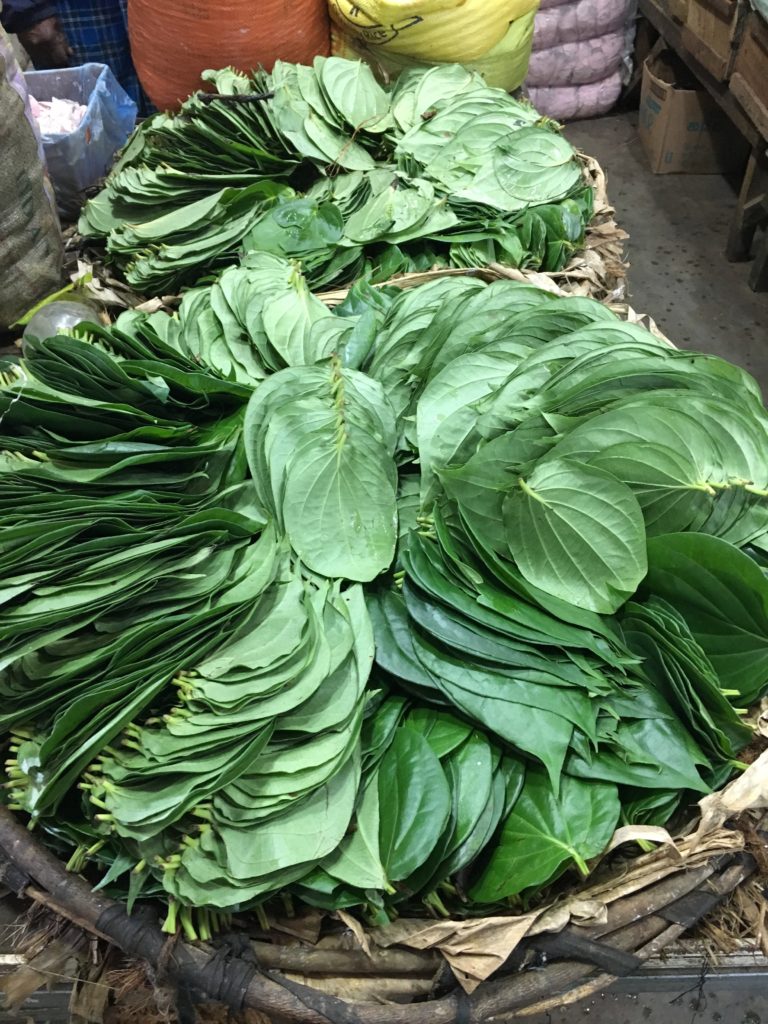
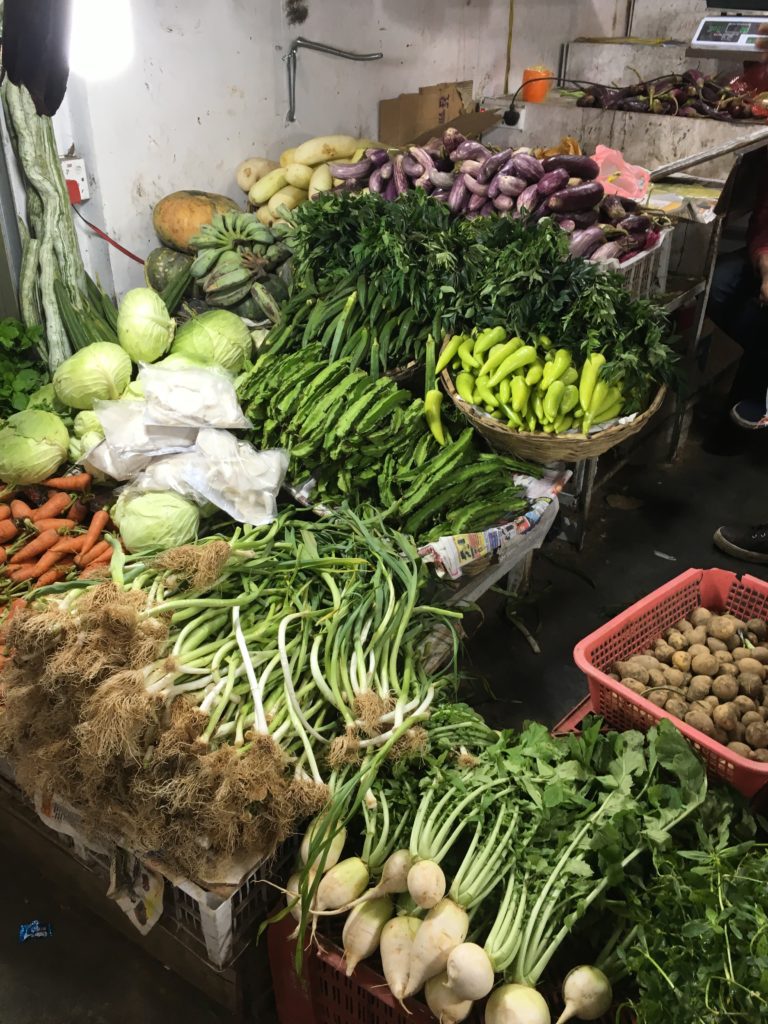
Train trip Nuwara Eliya to Ohiya
Final travelogue – greetings from Dubai where it is so awesome that I have a five hour layover! Add to that the sneezing fit that has turned into a full on cold necessitating a stop at a pharmacist for some cold medicine … seriously?!? Have taken shelter in the Emirates lounge where I am considering an Arabic coffee ice cream studded with dates to console myself. Until then, I’m downing bottle after bottle of water. A couple of random photos left over from yesterday’s final day on Sri Lanka: women plucking tea, the view from our lunch restaurant which also happened to be the site of the filming of the Bridge on the River Kwai, and some of the lovely gardens at our hotel in Nuwara Eliya. We enjoyed a wonderful closing dinner last night at a beautiful restaurant in Colombo where Episcopal Relief and Development hosted several of the church and community partners in a farewell soirée. Just 18 hours from Dubai to Newark, now. Cheers!
